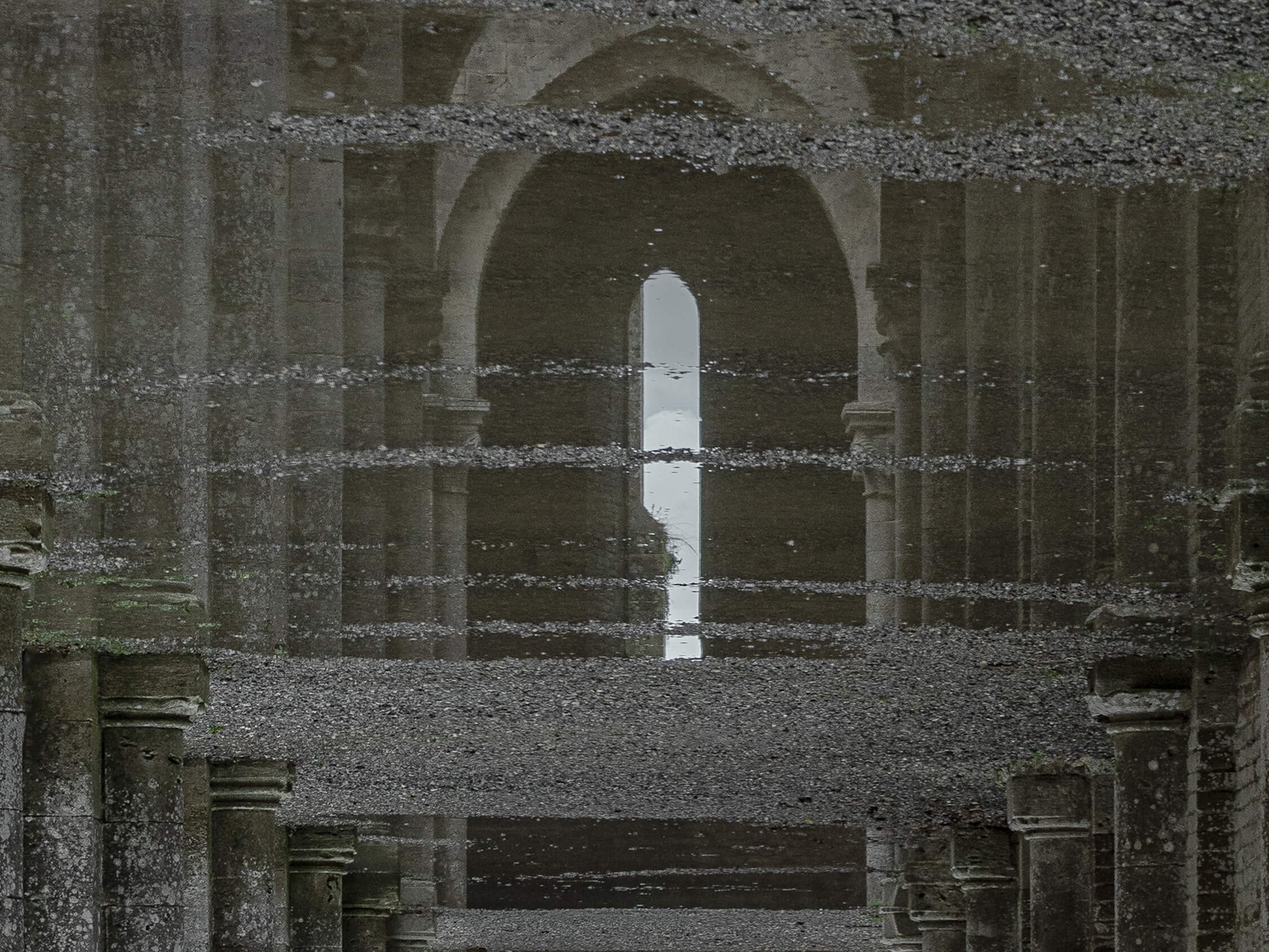
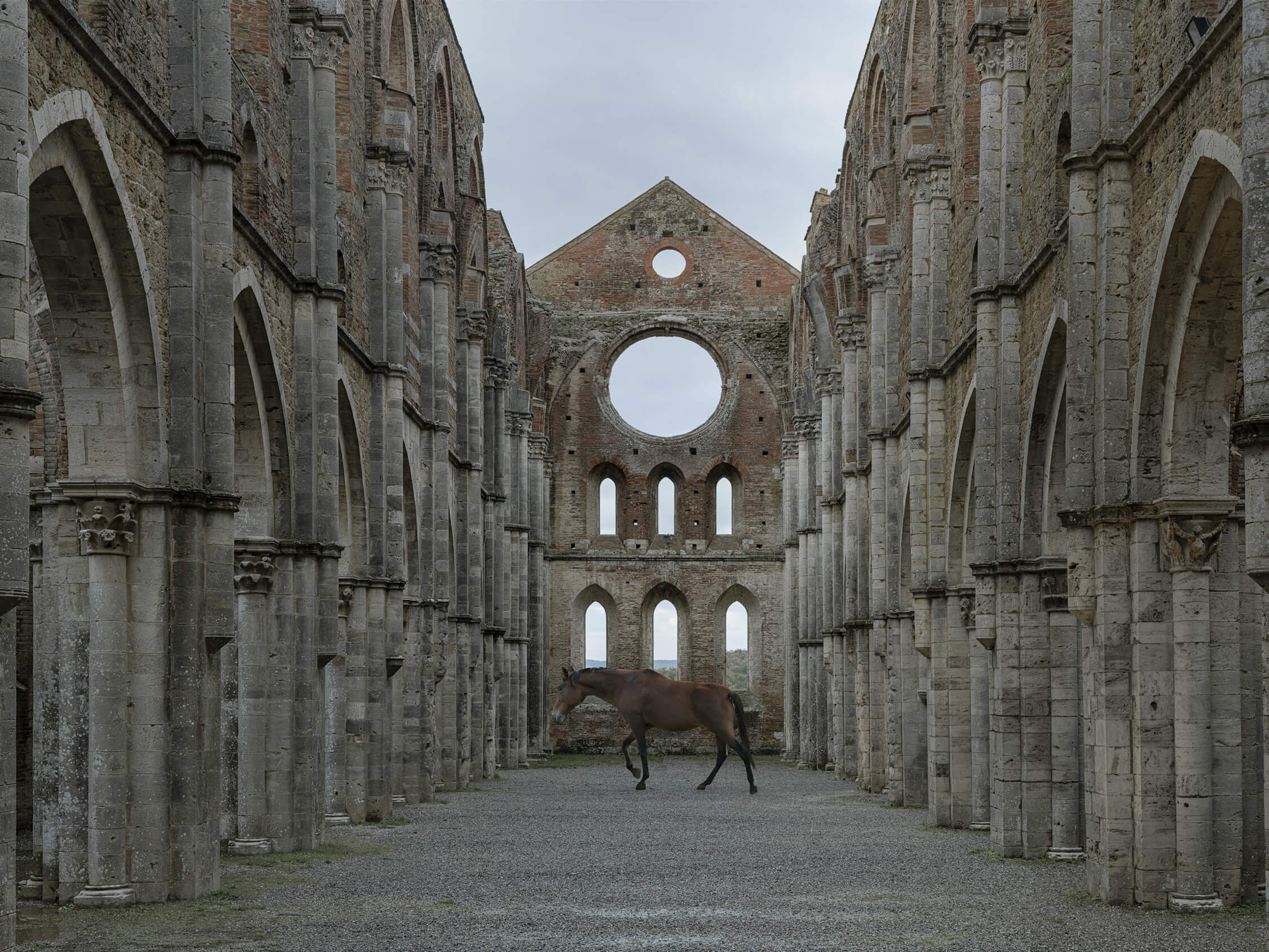
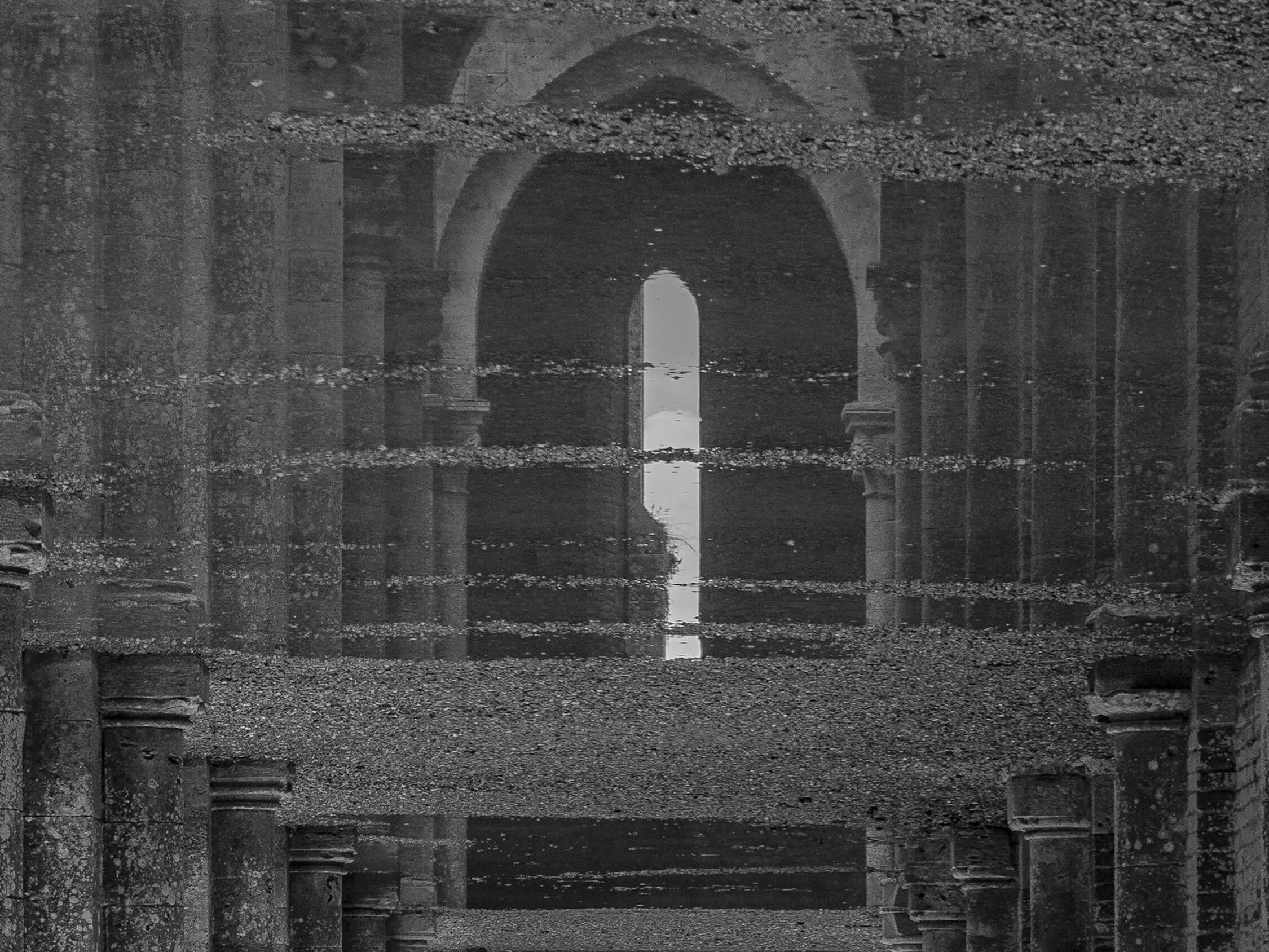
General Logistics
Gianluca Gentili
Project Management
Ramona Ponzini
Digital Exhibition Design
Andrea Magnani x Siliqoon Agency
Coding
Guido Bettinsoli
Analog and digital Photography
Flavio Pescatori
Concept, texts e curatorship
Matteo Mottin
General Logistics
Gianluca Gentili
Project Management
Ramona Ponzini
Digital Exhibition Design
Andrea Magnani x Siliqoon Agency
Coding
Guido Bettinsoli
Analog and digital Photography
Flavio Pescatori
Concept, texts e curatorship
Matteo Mottin
General Logistics
Gianluca Gentili
Project Management
Ramona Ponzini
Digital Exhibition Design
Andrea Magnani x Siliqoon Agency
Coding
Guido Bettinsoli
Analog and digital Photography
Flavio Pescatori
Concept, texts e curatorship
Matteo Mottin
Thanks to:
the artists, Abbazia di San Galgano, Sindaco Luciana Bartaletti, Comune di Chiusdino, Museo della Madonna Del Parto, Assessore Manuela Malatesta, Comune di Monterchi, Virginia Pecci, Comune di San Quirico d’Orcia, Polizia Municipale di San Quirico d’Orcia, Comune di Cittaducale, Sindaco Leonardo Ranalli, Soprintendente Alessandro Betori, Matteo Binci, Signor Cesare, Valeria Corazza, Claudia Cucca, Elena D’Angelo, Francesca Filisetti, Helena Hladilova, Mattia Macchieraldo, Elena Micheli, Edoardo e Patrizia Mottin, Nuova Autocarrozzeria Pino, Guido Pautasso, Anna Polesello, Alberto Scodro, Gabriele Siedlecki, Beatrice Zanelli, Paolo Zani, Galleria Zero…
Thanks to:
the artists, Abbazia di San Galgano, Sindaco Luciana Bartaletti, Comune di Chiusdino, Museo della Madonna Del Parto, Assessore Manuela Malatesta, Comune di Monterchi, Virginia Pecci, Comune di San Quirico d’Orcia, Polizia Municipale di San Quirico d’Orcia, Comune di Cittaducale, Sindaco Leonardo Ranalli, Soprintendente Alessandro Betori, Matteo Binci, Signor Cesare, Valeria Corazza, Claudia Cucca, Elena D’Angelo, Francesca Filisetti, Helena Hladilova, Mattia Macchieraldo, Elena Micheli, Edoardo e Patrizia Mottin, Nuova Autocarrozzeria Pino, Guido Pautasso, Anna Polesello, Alberto Scodro, Gabriele Siedlecki, Beatrice Zanelli, Paolo Zani, Galleria Zero…
Thanks to:
the artists, Abbazia di San Galgano, Sindaco Luciana Bartaletti, Comune di Chiusdino, Museo della Madonna Del Parto, Assessore Manuela Malatesta, Comune di Monterchi, Virginia Pecci, Comune di San Quirico d’Orcia, Polizia Municipale di San Quirico d’Orcia, Comune di Cittaducale, Sindaco Leonardo Ranalli, Soprintendente Alessandro Betori, Matteo Binci, Signor Cesare, Valeria Corazza, Claudia Cucca, Elena D’Angelo, Francesca Filisetti, Helena Hladilova, Mattia Macchieraldo, Elena Micheli, Edoardo e Patrizia Mottin, Nuova Autocarrozzeria Pino, Guido Pautasso, Anna Polesello, Alberto Scodro, Gabriele Siedlecki, Beatrice Zanelli, Paolo Zani, Galleria Zero…
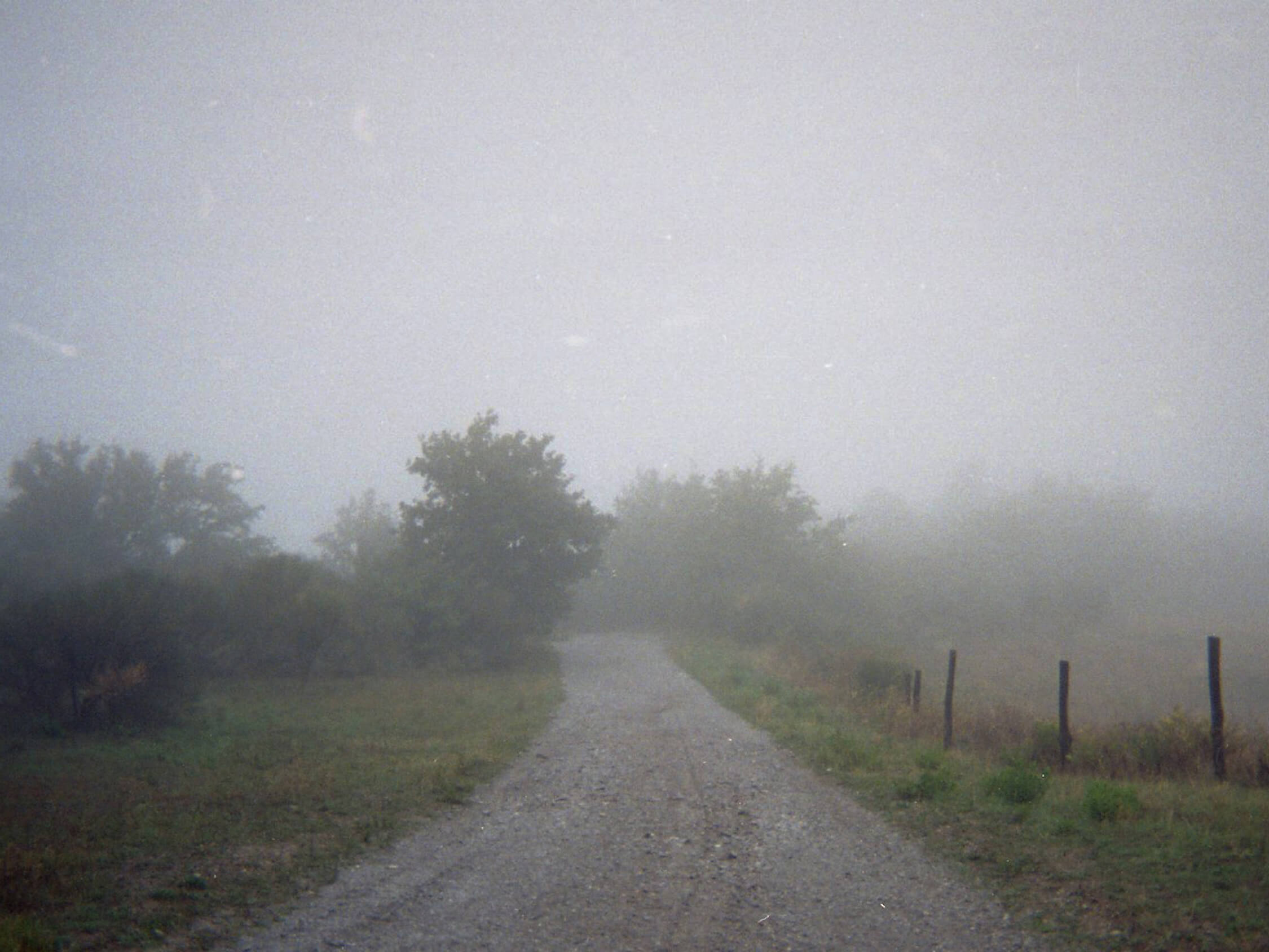
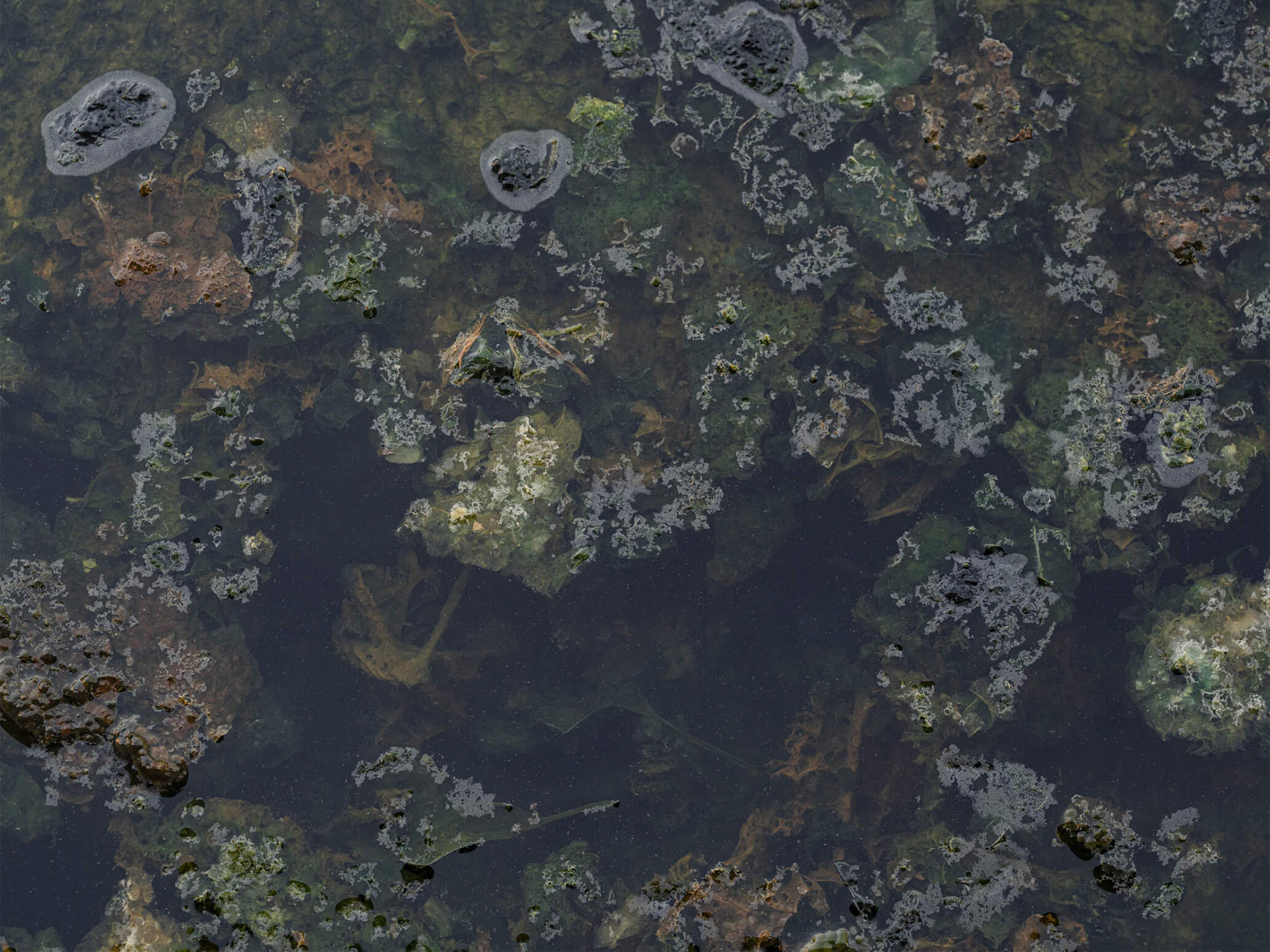
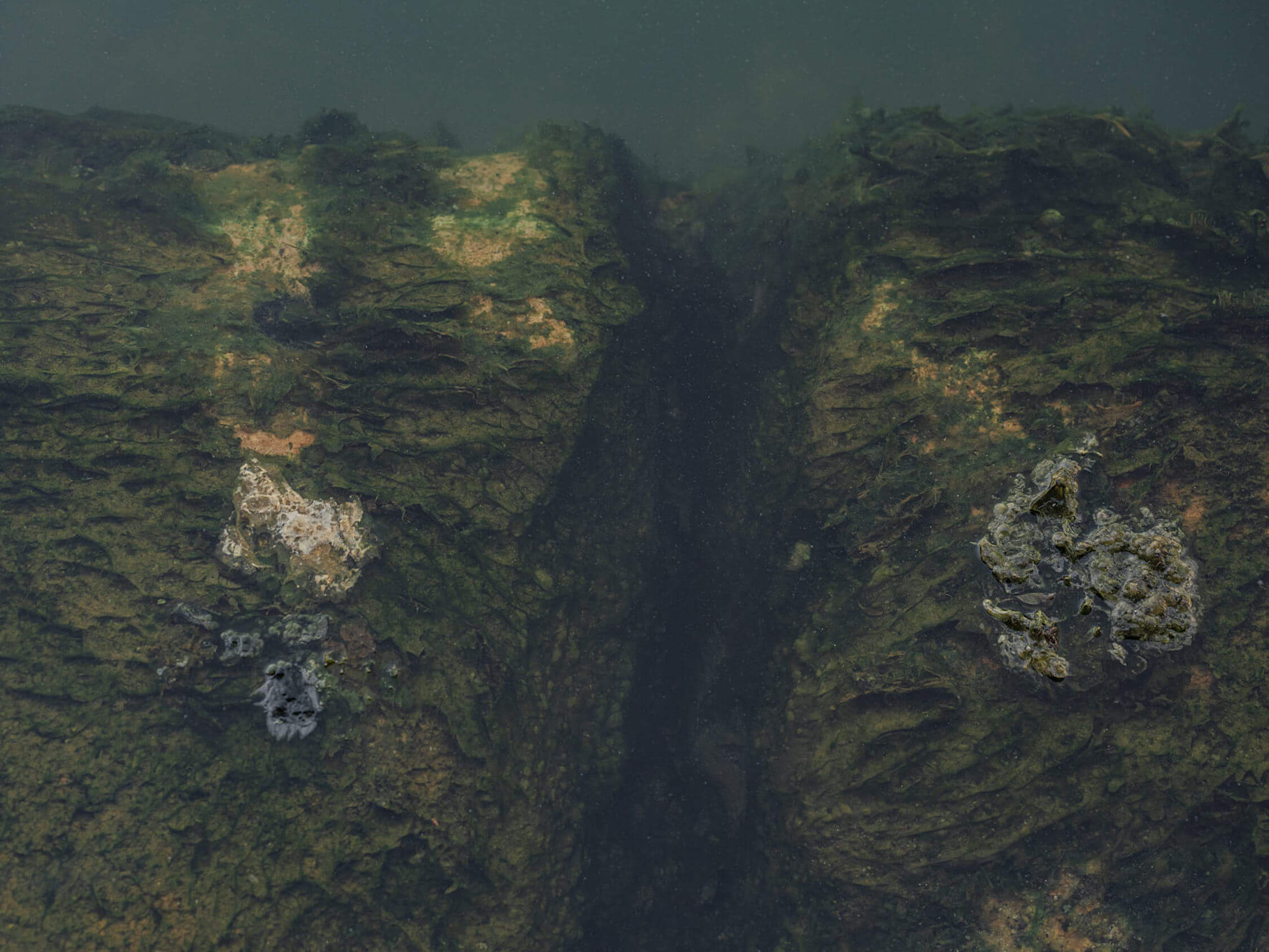
diary – 29/11/20
“Our thoughts were focused on nature, on the peculiarities and potentiality offered by an online show, compared to being presented in a physical context. With the idea of proposing honest content for such inspirations—derived from a comparison between Andrej Tarkovskij’s approach to the realization of the movie “Nostalghia” (1983) and the sentiment of loss and melancholia universally experienced during lockdown—the project evolved concentrating on a change in paradigm, distancing ourselves from any known model, and concentrating our reflection on the union of the Russian director’s cinematic space and the nature and potential of digital space.
We decided to create a website with a linear structure in which to present a never-ending exhibition, created from a sequence of shows that, although grafted from the same structure, are always different. We also decided to follow the framework of “Nostalghia” (1983), presenting the works’ photo-shoots in the same order in which the locations appear in the movie. As the viewer reaches the end of our website, the experience begins again, but with different visual and written content. Thus, each new composition allows the viewer to further explore the project, while simultaneously creating a sense of emptiness and loss for the previous “visit,” which is now lost and difficult to recreate. The exhibition is conceived as a short movie whose montage is completely controlled by the viewer, who decides and controls the rhythm of the experience. This first-person control of the “present” implies the responsibility of canceling the “past” and generating a “future” that is critically structured as a reworked version of the “past” itself.
The concept of time as a structure and the output of necessary loss given by its flow, influenced the criteria through which the works have been photographed. In each location we had four different photo-shoots predicated by four different criteria. Three were shot with a digital camera, tracing the three axes—x, y and z—of the Cartesian space, creating a superimposition of physical and digital space. We also decided to add a fourth axis, relating to time, by shooting the works on a black and white ISO 3200 film, with medium-size analog cameras. The thick grain of the film allowed us to create images that are are warmer/closer to reality, but still defined by a necessary loss in details that sets them apart from the images we experience every day”
diary – 29/11/20
“Our thoughts were focused on nature, on the peculiarities and potentiality offered by an online show, compared to being presented in a physical context. With the idea of proposing honest content for such inspirations—derived from a comparison between Andrej Tarkovskij’s approach to the realization of the movie “Nostalghia” (1983) and the sentiment of loss and melancholia universally experienced during lockdown—the project evolved concentrating on a change in paradigm, distancing ourselves from any known model, and concentrating our reflection on the union of the Russian director’s cinematic space and the nature and potential of digital space.
We decided to create a website with a linear structure in which to present a never-ending exhibition, created from a sequence of shows that, although grafted from the same structure, are always different. We also decided to follow the framework of “Nostalghia” (1983), presenting the works’ photo-shoots in the same order in which the locations appear in the movie. As the viewer reaches the end of our website, the experience begins again, but with different visual and written content. Thus, each new composition allows the viewer to further explore the project, while simultaneously creating a sense of emptiness and loss for the previous “visit,” which is now lost and difficult to recreate. The exhibition is conceived as a short movie whose montage is completely controlled by the viewer, who decides and controls the rhythm of the experience. This first-person control of the “present” implies the responsibility of canceling the “past” and generating a “future” that is critically structured as a reworked version of the “past” itself.
The concept of time as a structure and the output of necessary loss given by its flow, influenced the criteria through which the works have been photographed. In each location we had four different photo-shoots predicated by four different criteria. Three were shot with a digital camera, tracing the three axes—x, y and z—of the Cartesian space, creating a superimposition of physical and digital space. We also decided to add a fourth axis, relating to time, by shooting the works on a black and white ISO 3200 film, with medium-size analog cameras. The thick grain of the film allowed us to create images that are are warmer/closer to reality, but still defined by a necessary loss in details that sets them apart from the images we experience every day”
diary – 29/11/20
“Our thoughts were focused on nature, on the peculiarities and potentiality offered by an online show, compared to being presented in a physical context. With the idea of proposing honest content for such inspirations—derived from a comparison between Andrej Tarkovskij’s approach to the realization of the movie “Nostalghia” (1983) and the sentiment of loss and melancholia universally experienced during lockdown—the project evolved concentrating on a change in paradigm, distancing ourselves from any known model, and concentrating our reflection on the union of the Russian director’s cinematic space and the nature and potential of digital space.
We decided to create a website with a linear structure in which to present a never-ending exhibition, created from a sequence of shows that, although grafted from the same structure, are always different. We also decided to follow the framework of “Nostalghia” (1983), presenting the works’ photo-shoots in the same order in which the locations appear in the movie. As the viewer reaches the end of our website, the experience begins again, but with different visual and written content. Thus, each new composition allows the viewer to further explore the project, while simultaneously creating a sense of emptiness and loss for the previous “visit,” which is now lost and difficult to recreate. The exhibition is conceived as a short movie whose montage is completely controlled by the viewer, who decides and controls the rhythm of the experience. This first-person control of the “present” implies the responsibility of canceling the “past” and generating a “future” that is critically structured as a reworked version of the “past” itself.
The concept of time as a structure and the output of necessary loss given by its flow, influenced the criteria through which the works have been photographed. In each location we had four different photo-shoots predicated by four different criteria. Three were shot with a digital camera, tracing the three axes—x, y and z—of the Cartesian space, creating a superimposition of physical and digital space. We also decided to add a fourth axis, relating to time, by shooting the works on a black and white ISO 3200 film, with medium-size analog cameras. The thick grain of the film allowed us to create images that are are warmer/closer to reality, but still defined by a necessary loss in details that sets them apart from the images we experience every day”
The project creates a relation between a series of works by Italian artists and the locations where Andrej Tarkovskij (1932-1986) filmed “Nostalghia” (1983), the sixth and second to last movie by the Russian director, which was also the first realized out of the Soviet Union. The strongly autobiographical picture is filled with a constant feeling of pain and longing for the director’s home country, sentiments that are underlined by the framing of the Italian landscapes, that constantly recall Tarkovskij’s beloved Russian countryside.
Endless Nostalghia wishes to pull together the personal sentiment of nostalgia expressed in the movie by Tarkovskij and the one universally felt during the COVID-19 emergency lockdown, when it was forbidden to leave the house, cross borders and visit the places we love.
For a brief period of time each place hosted an “impossible” solo show, that only exists through its photographic documentation, highlighting the idealized and detached nature of every communication carried out through digital devices.
The material will be presented on endlessnostalghia.com, a never-ending webpage. Built like a short movie where the passing of time is entrusted to each user’s scrolling pace, the website presents in a linear sequence a series of exhibitions that are always different, but grafted onto the same structure.
Among the objectives of this initiative are the valorization and promotion of the territories that hosted the filming of the movie, in order to invite the public to physically visit the location of each intervention at a critical time for tourism and culture, on both a regional and national scale. This is why, over time, the website will be updated with secret contents, suggestions and itineraries that will allow everyone to explore, not only virtually, the chapters that make up the exhibition.
The project creates a relation between a series of works by Italian artists and the locations where Andrej Tarkovskij (1932-1986) filmed “Nostalghia” (1983), the sixth and second to last movie by the Russian director, which was also the first realized out of the Soviet Union. The strongly autobiographical picture is filled with a constant feeling of pain and longing for the director’s home country, sentiments that are underlined by the framing of the Italian landscapes, that constantly recall Tarkovskij’s beloved Russian countryside.
Endless Nostalghia wishes to pull together the personal sentiment of nostalgia expressed in the movie by Tarkovskij and the one universally felt during the COVID-19 emergency lockdown, when it was forbidden to leave the house, cross borders and visit the places we love.
For a brief period of time each place hosted an “impossible” solo show, that only exists through its photographic documentation, highlighting the idealized and detached nature of every communication carried out through digital devices.
The material will be presented on endlessnostalghia.com, a never-ending webpage. Built like a short movie where the passing of time is entrusted to each user’s scrolling pace, the website presents in a linear sequence a series of exhibitions that are always different, but grafted onto the same structure.
Among the objectives of this initiative are the valorization and promotion of the territories that hosted the filming of the movie, in order to invite the public to physically visit the location of each intervention at a critical time for tourism and culture, on both a regional and national scale. This is why, over time, the website will be updated with secret contents, suggestions and itineraries that will allow everyone to explore, not only virtually, the chapters that make up the exhibition.
The project creates a relation between a series of works by Italian artists and the locations where Andrej Tarkovskij (1932-1986) filmed “Nostalghia” (1983), the sixth and second to last movie by the Russian director, which was also the first realized out of the Soviet Union. The strongly autobiographical picture is filled with a constant feeling of pain and longing for the director’s home country, sentiments that are underlined by the framing of the Italian landscapes, that constantly recall Tarkovskij’s beloved Russian countryside.
Endless Nostalghia wishes to pull together the personal sentiment of nostalgia expressed in the movie by Tarkovskij and the one universally felt during the COVID-19 emergency lockdown, when it was forbidden to leave the house, cross borders and visit the places we love.
For a brief period of time each place hosted an “impossible” solo show, that only exists through its photographic documentation, highlighting the idealized and detached nature of every communication carried out through digital devices.
The material will be presented on endlessnostalghia.com, a never-ending webpage. Built like a short movie where the passing of time is entrusted to each user’s scrolling pace, the website presents in a linear sequence a series of exhibitions that are always different, but grafted onto the same structure.
Among the objectives of this initiative are the valorization and promotion of the territories that hosted the filming of the movie, in order to invite the public to physically visit the location of each intervention at a critical time for tourism and culture, on both a regional and national scale. This is why, over time, the website will be updated with secret contents, suggestions and itineraries that will allow everyone to explore, not only virtually, the chapters that make up the exhibition.
This project is dedicated to the work and memory of Andrej Tarkovskij
This project is dedicated to the work and memory of Andrej Tarkovskij
This project is dedicated to the work and memory of Andrej Tarkovskij
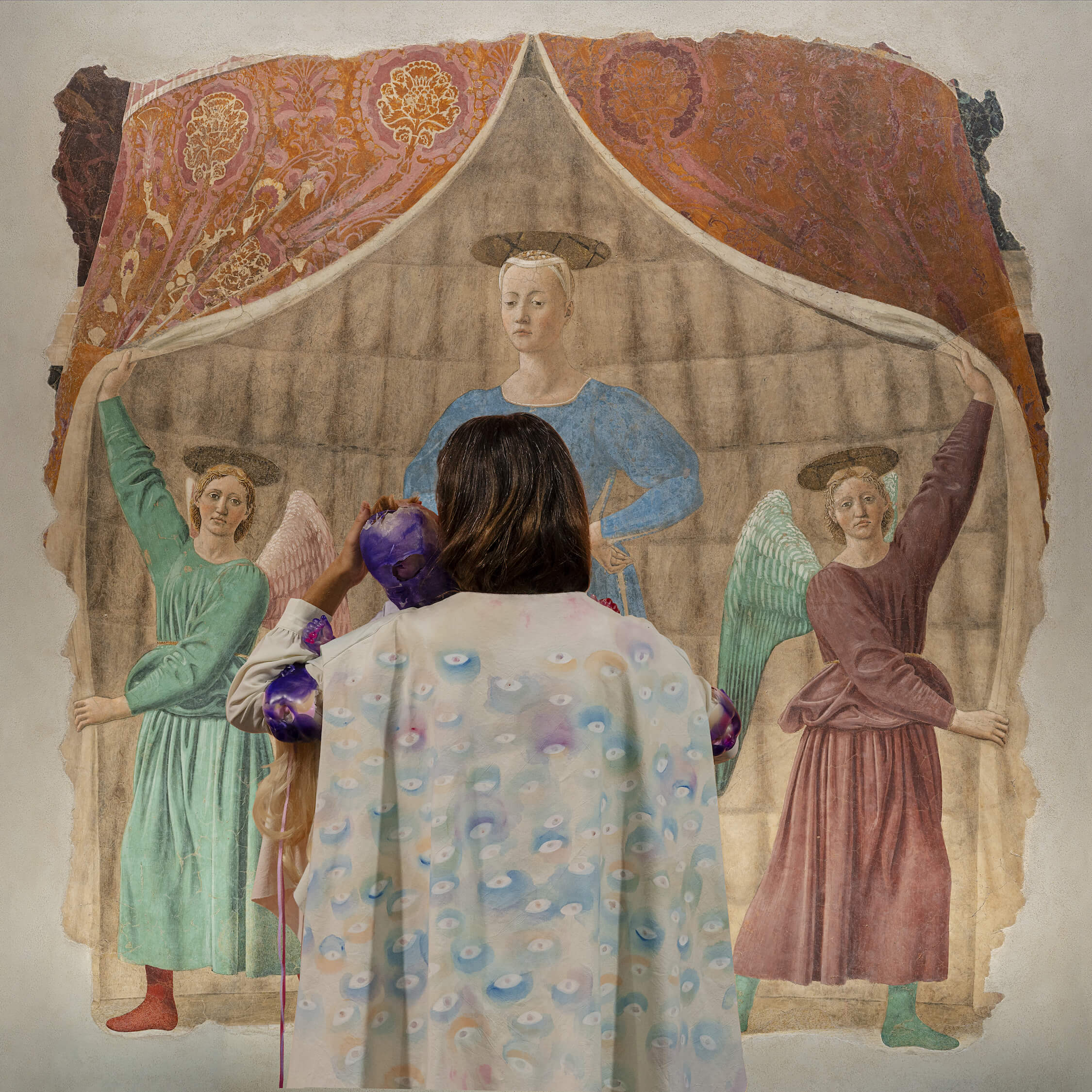
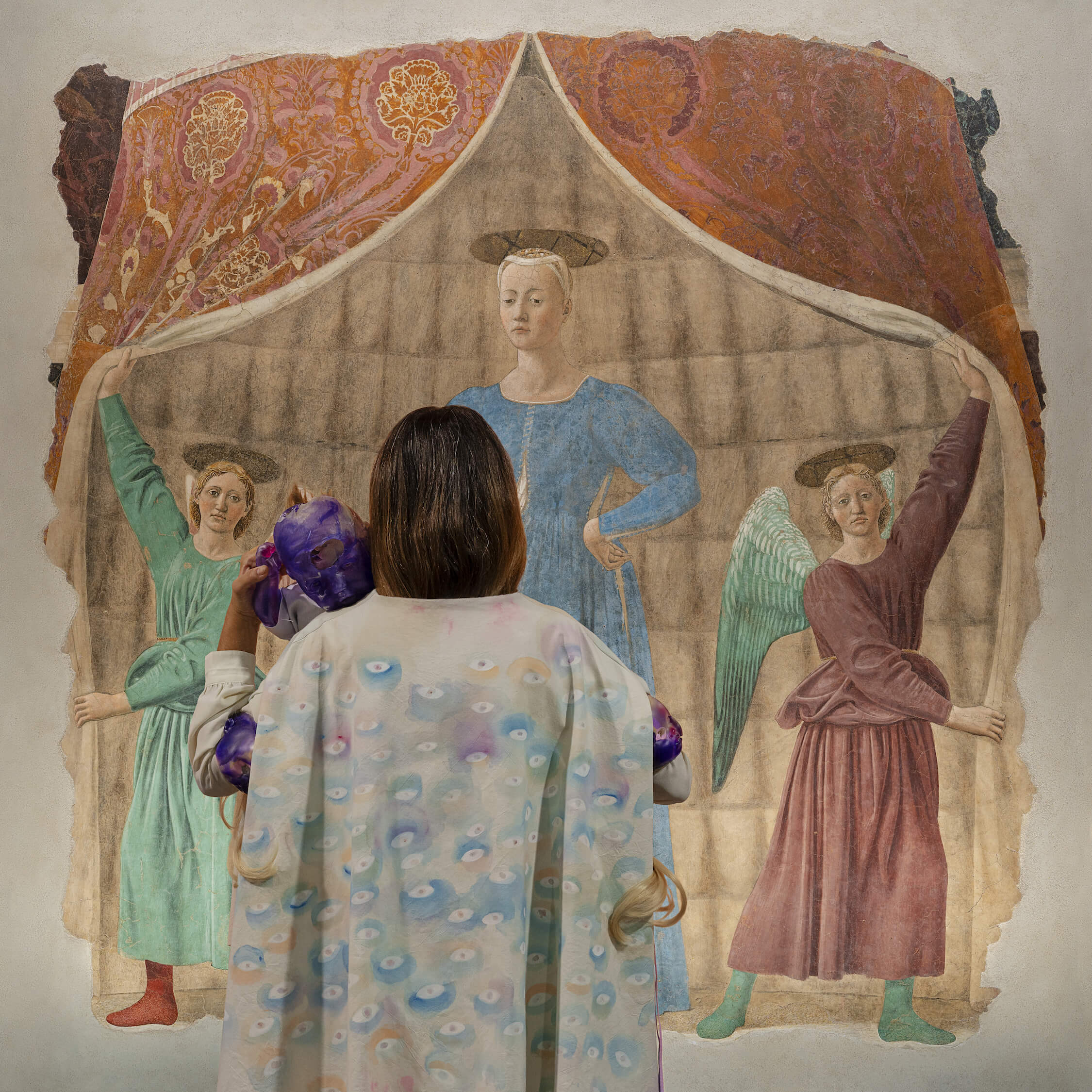
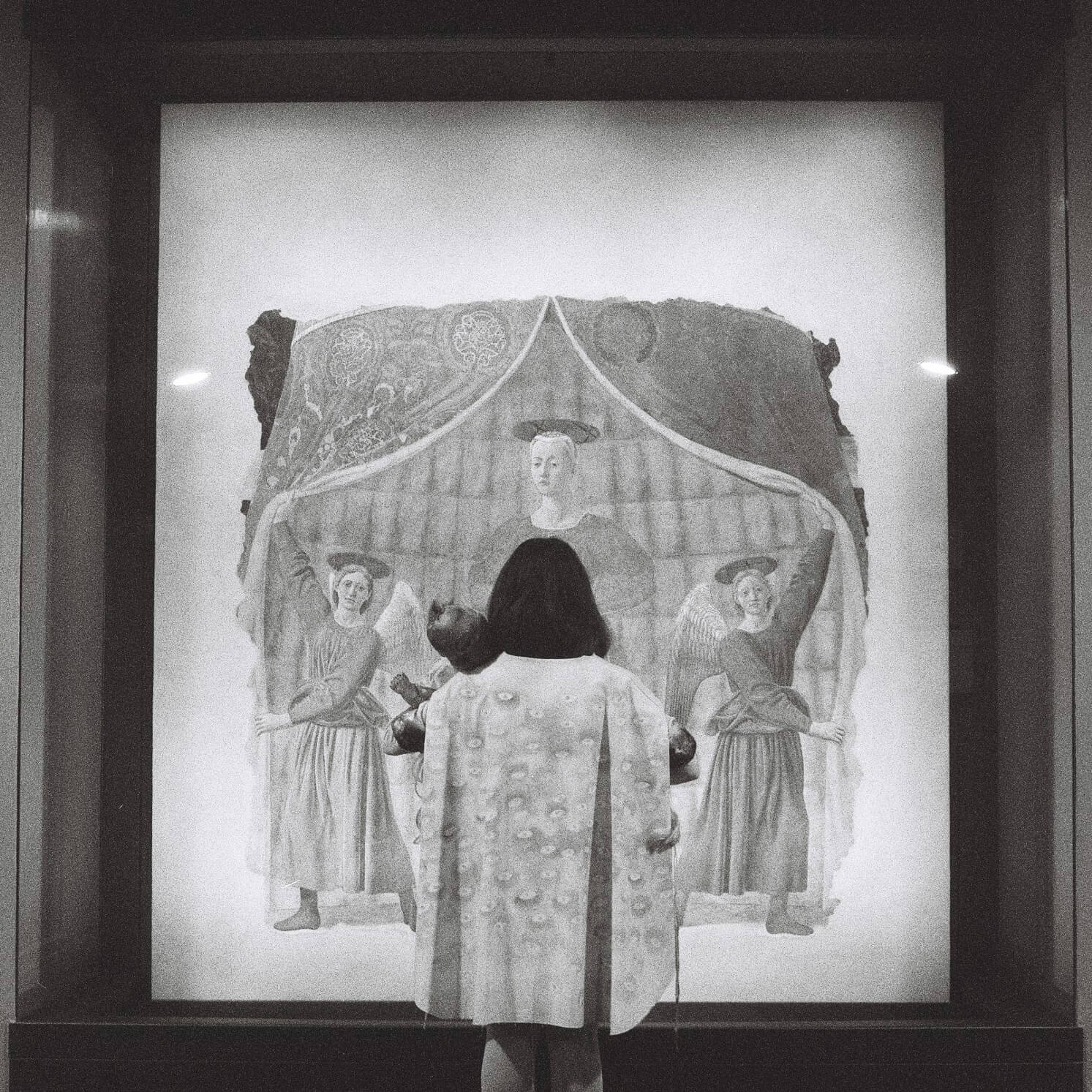
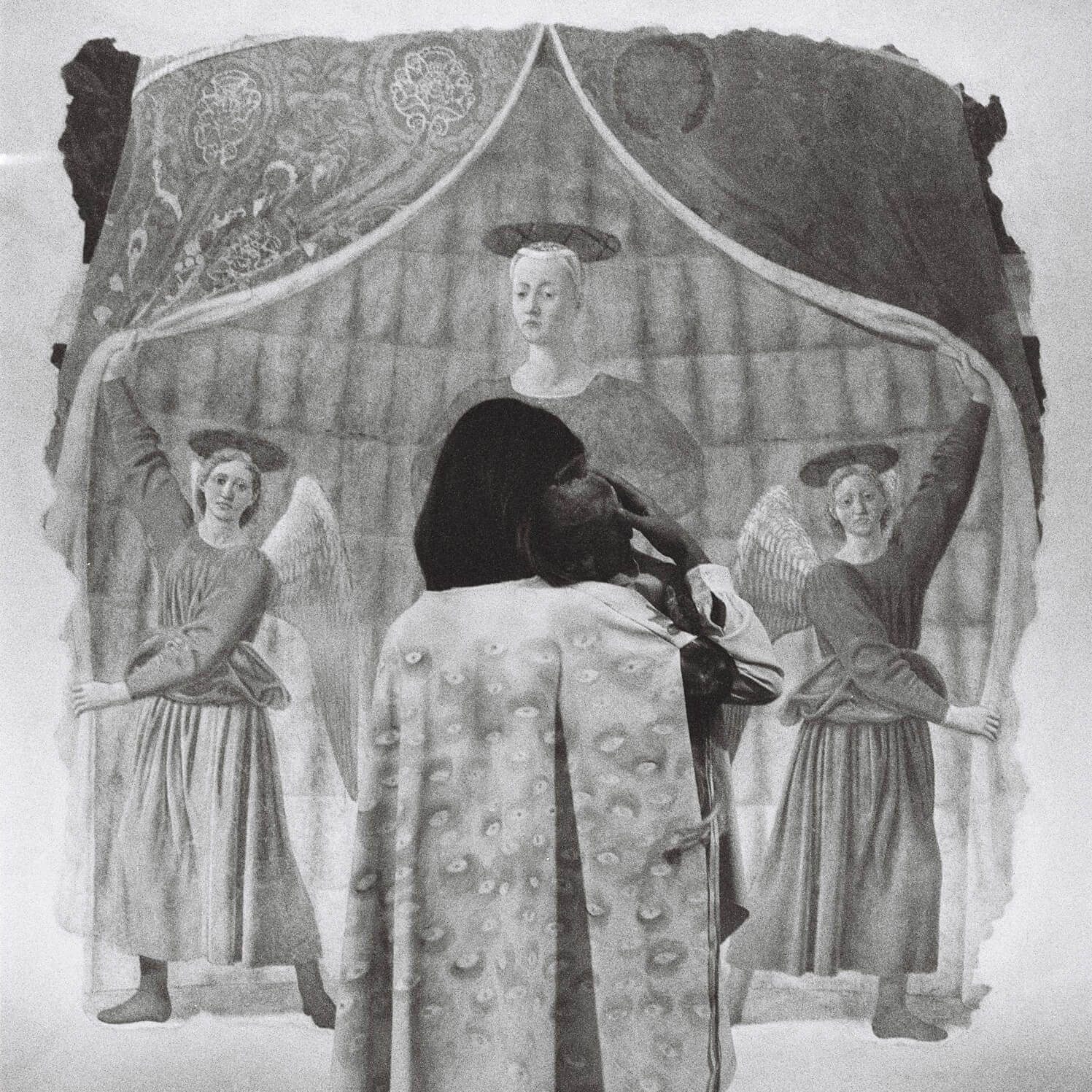
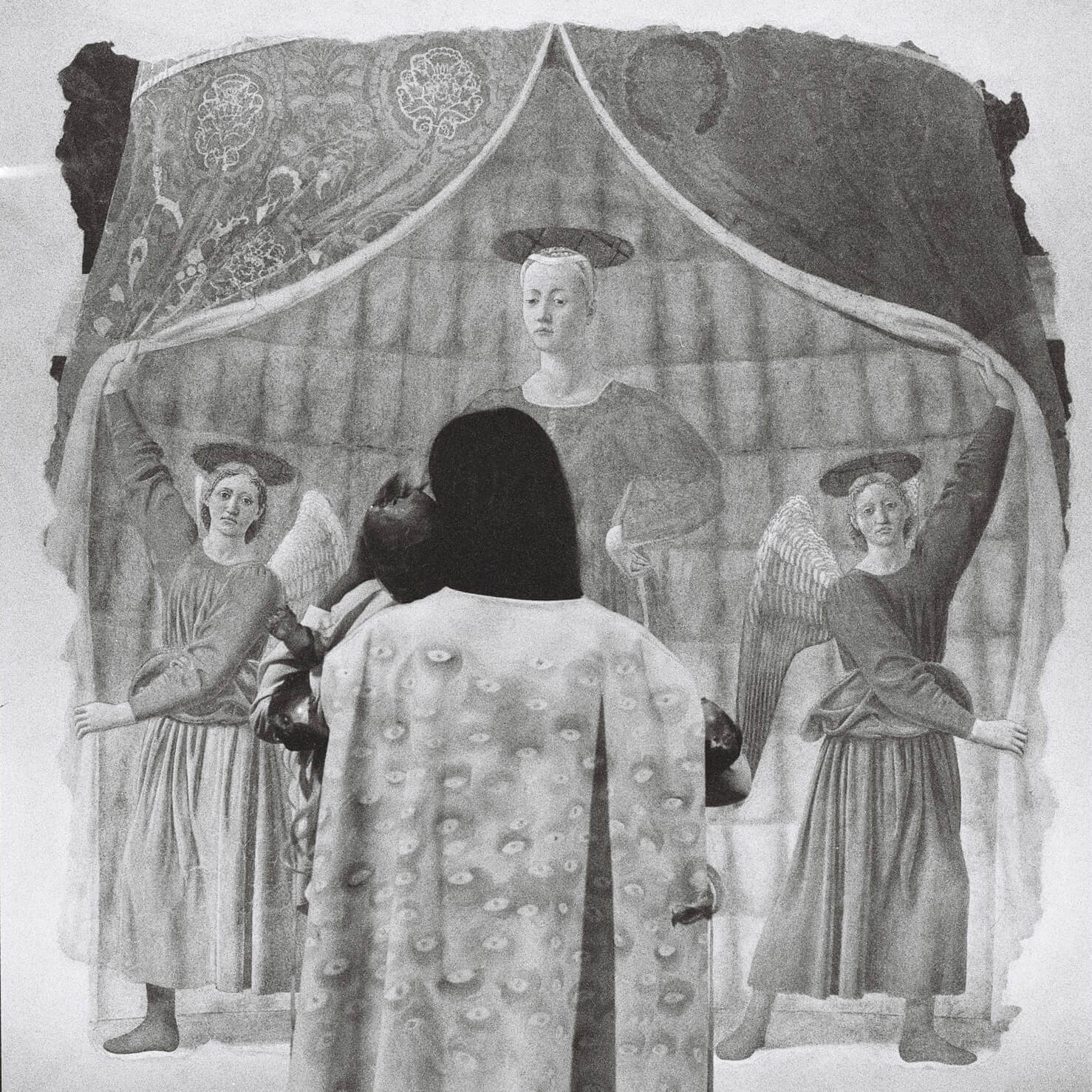
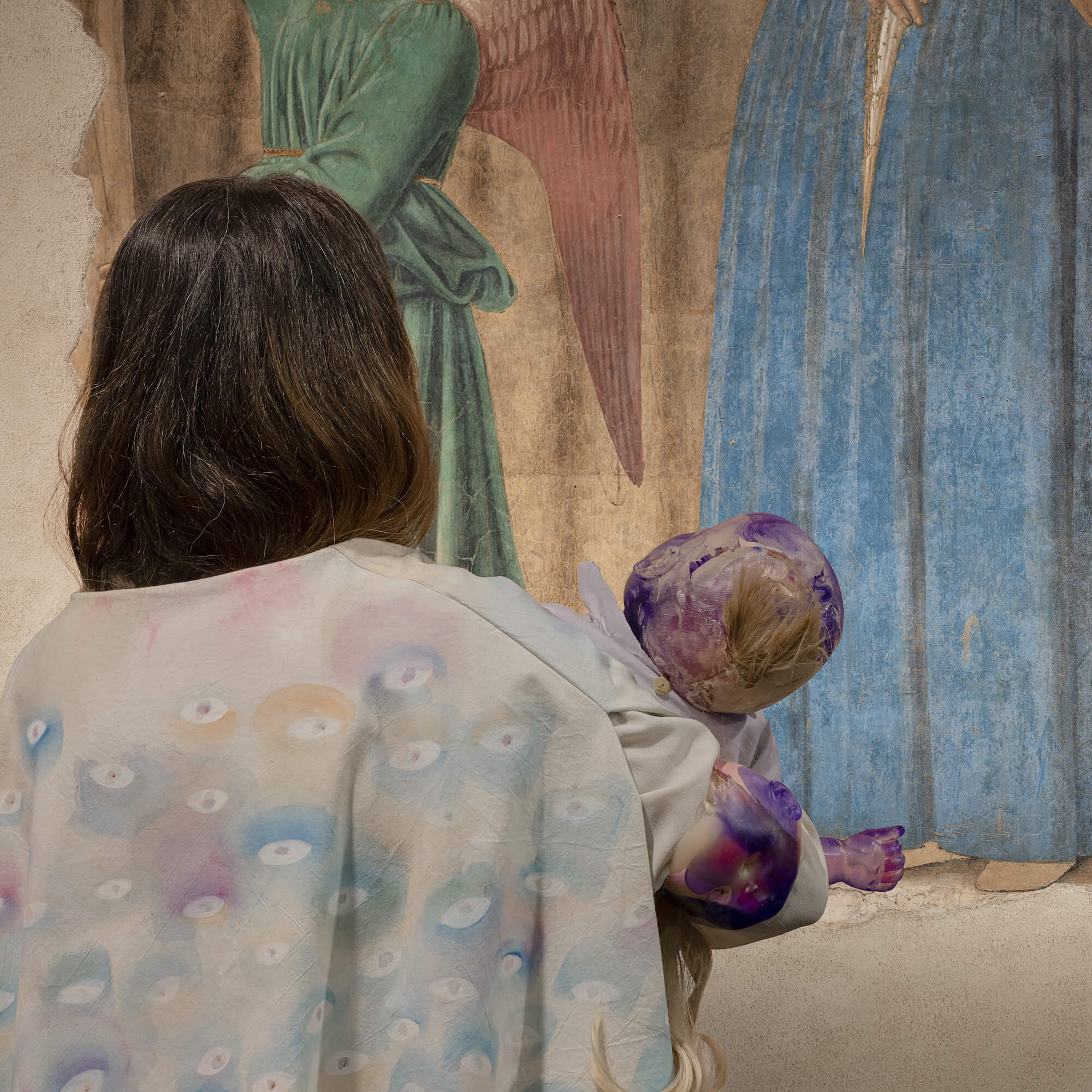
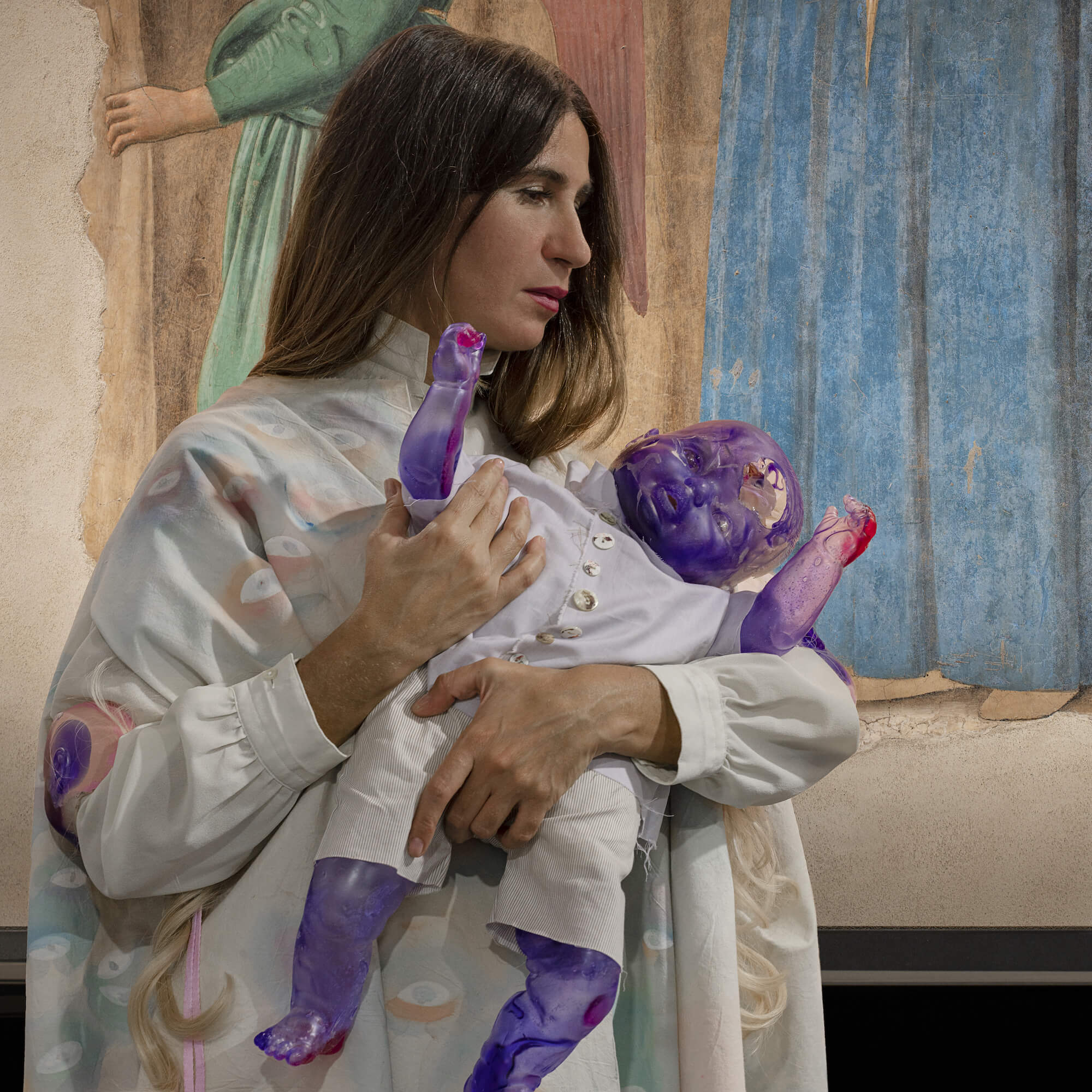
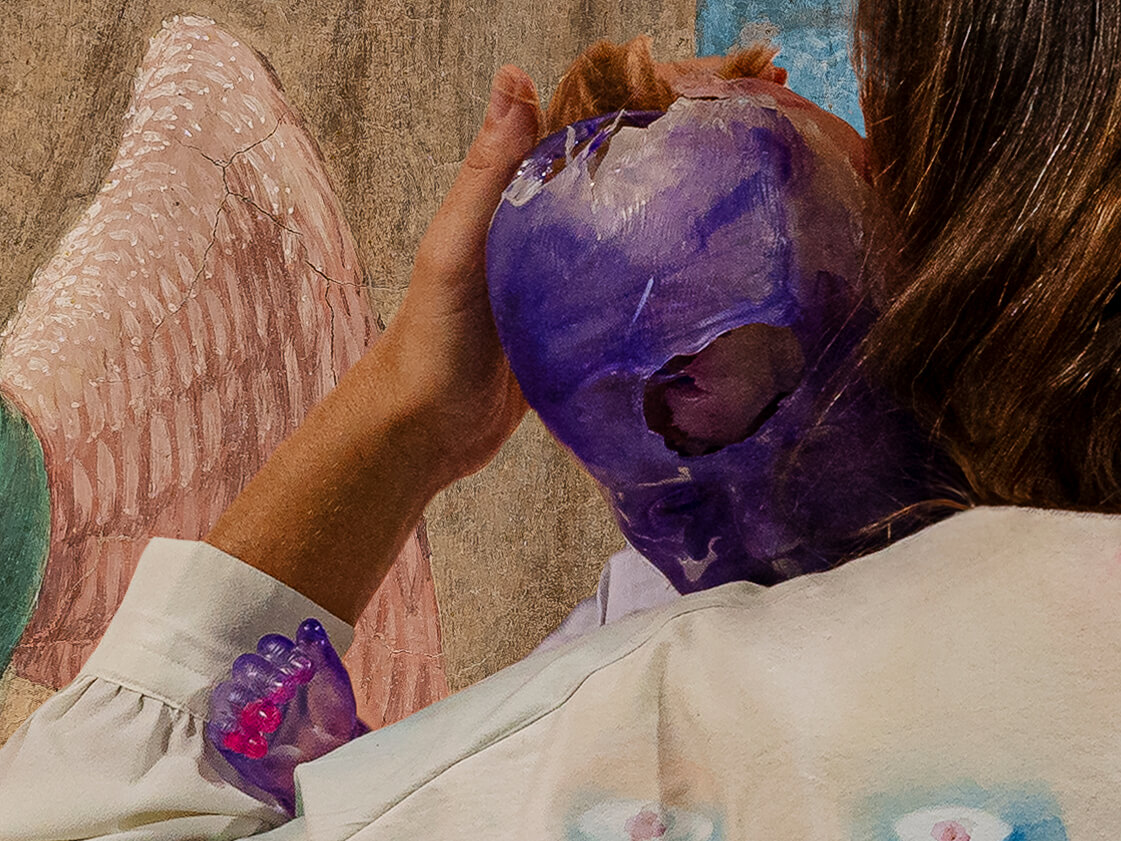
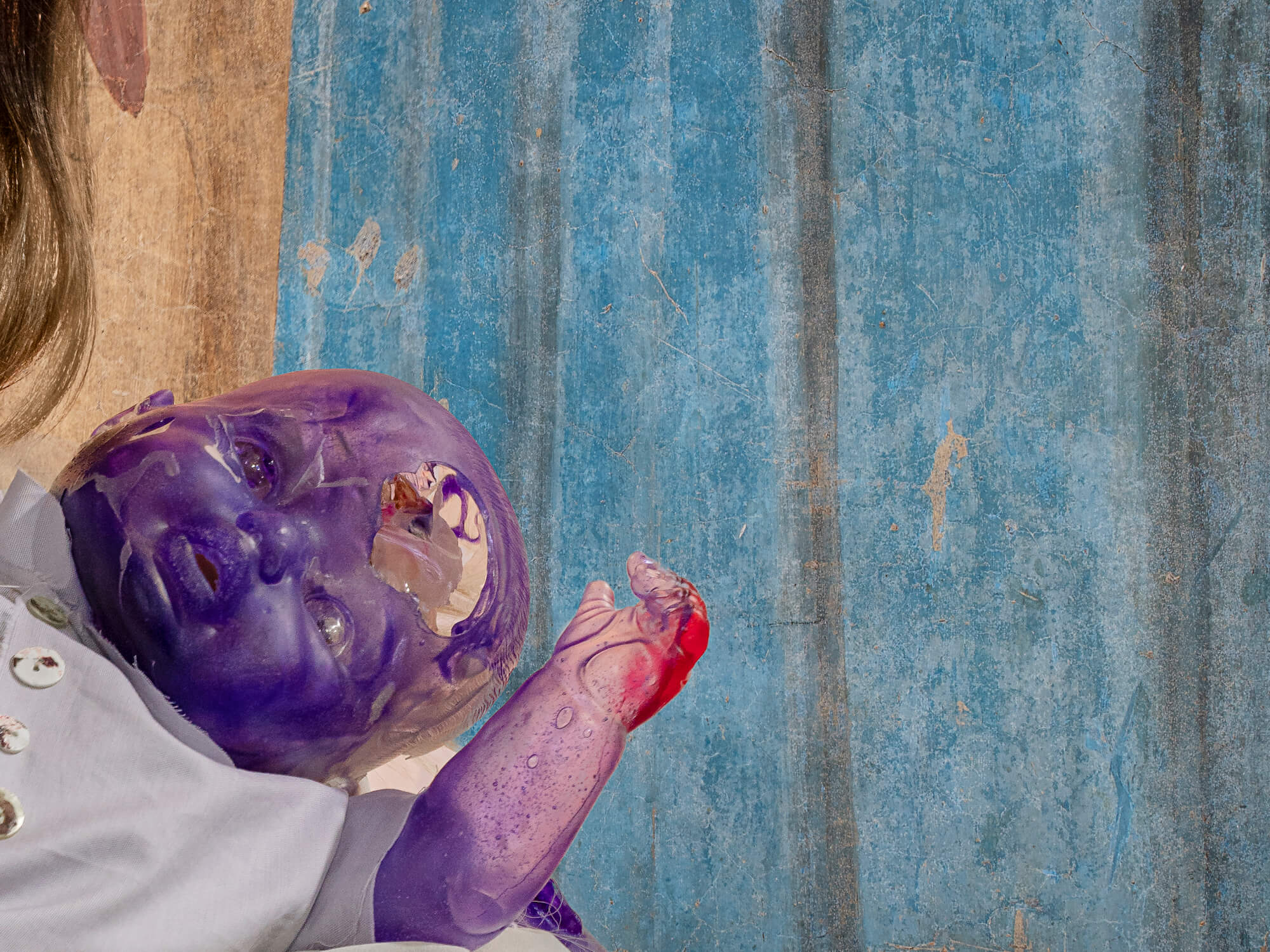
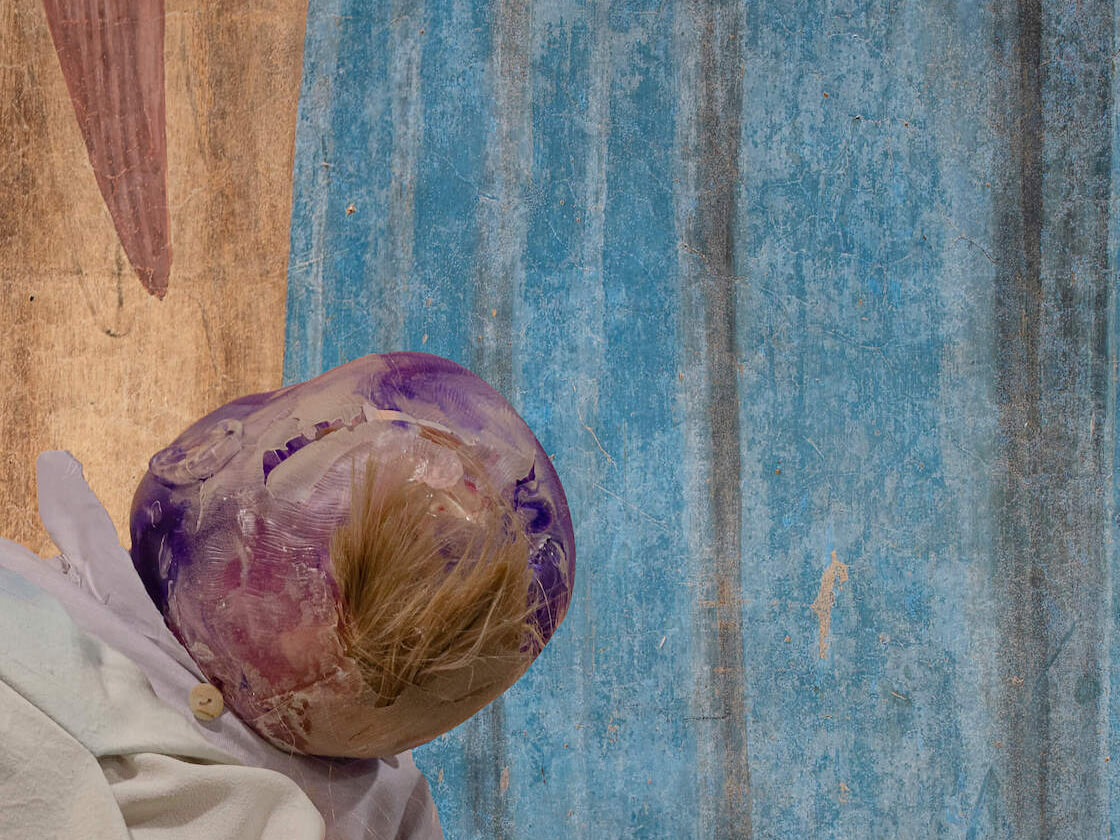
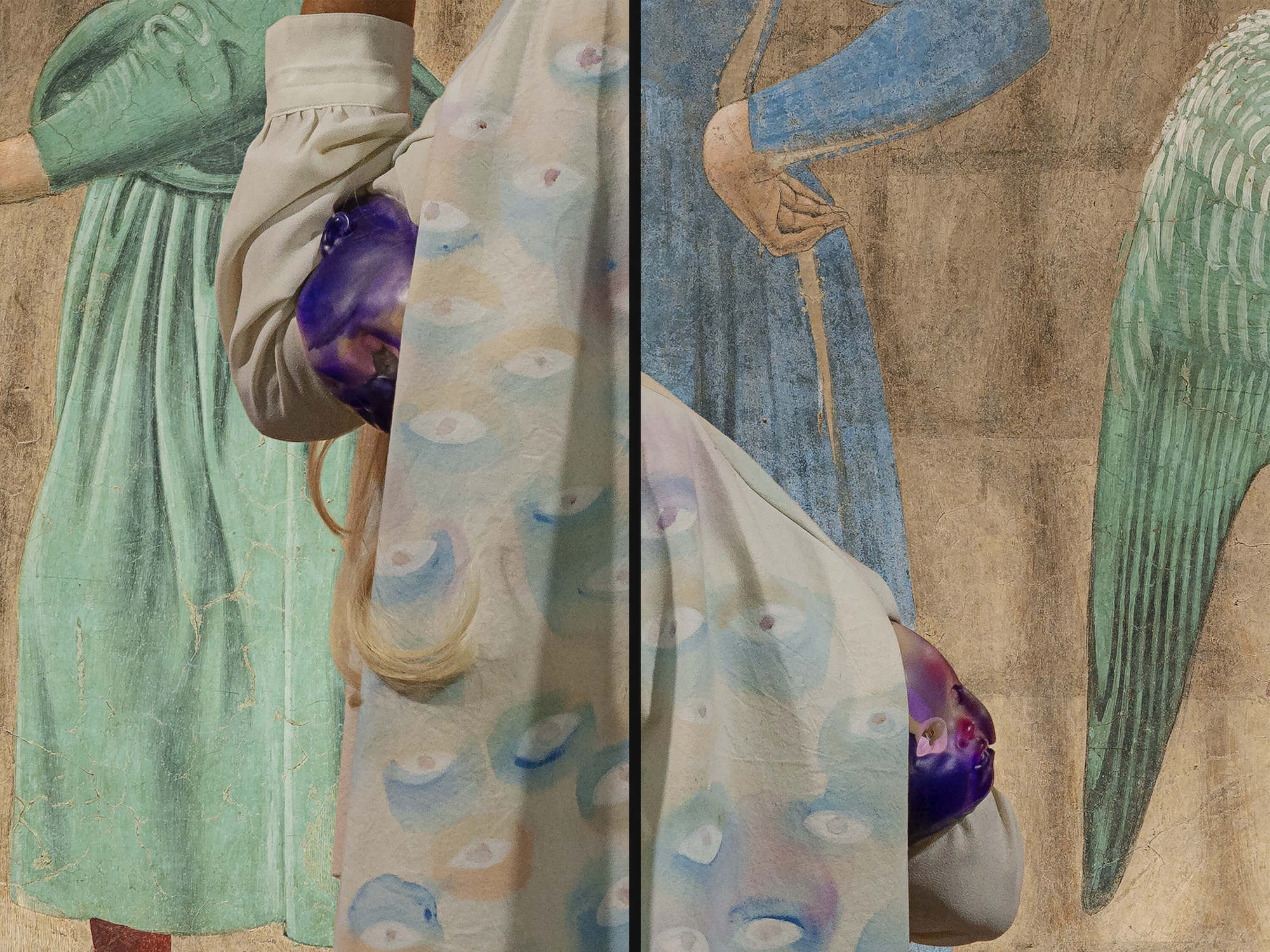
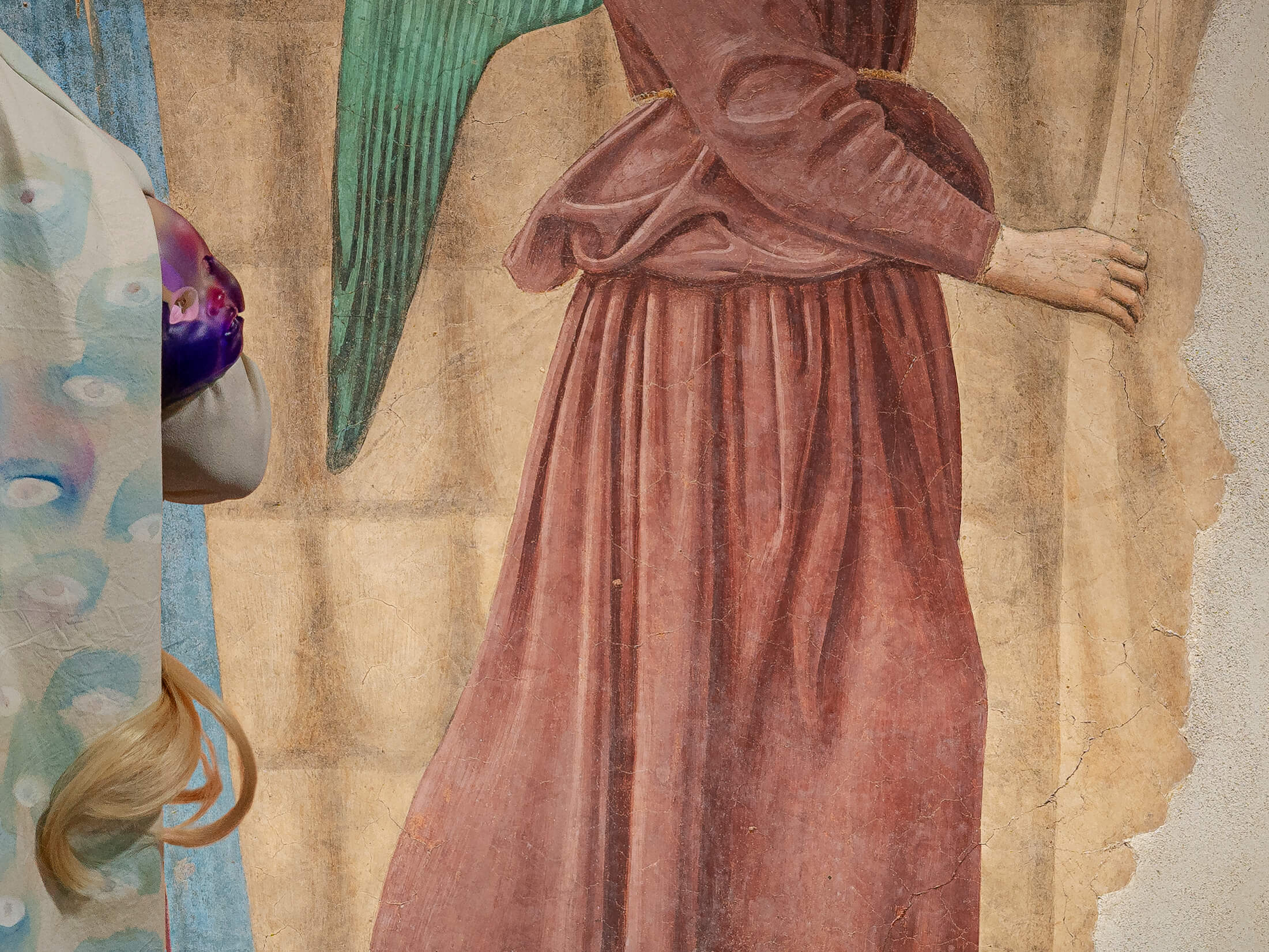
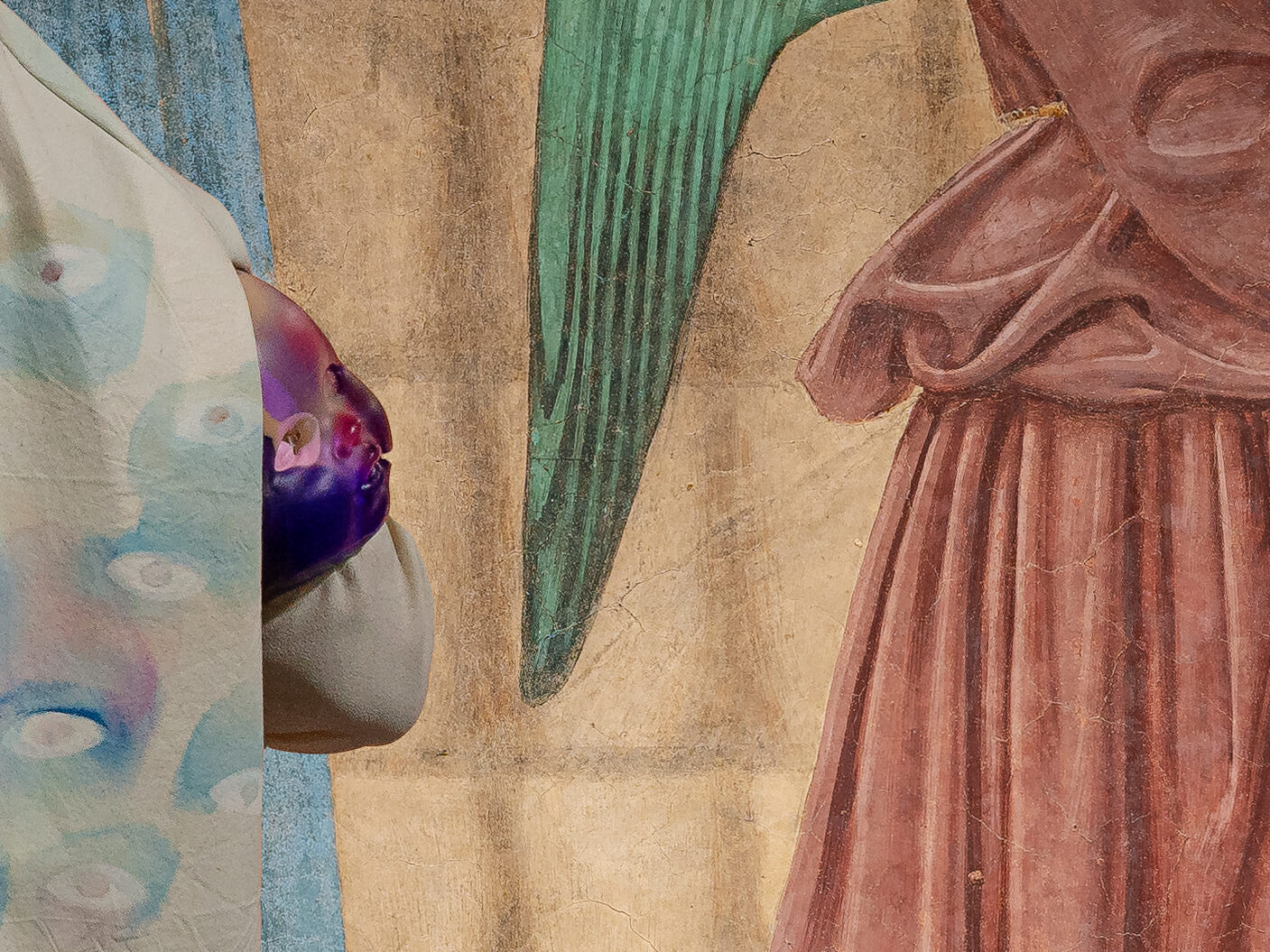
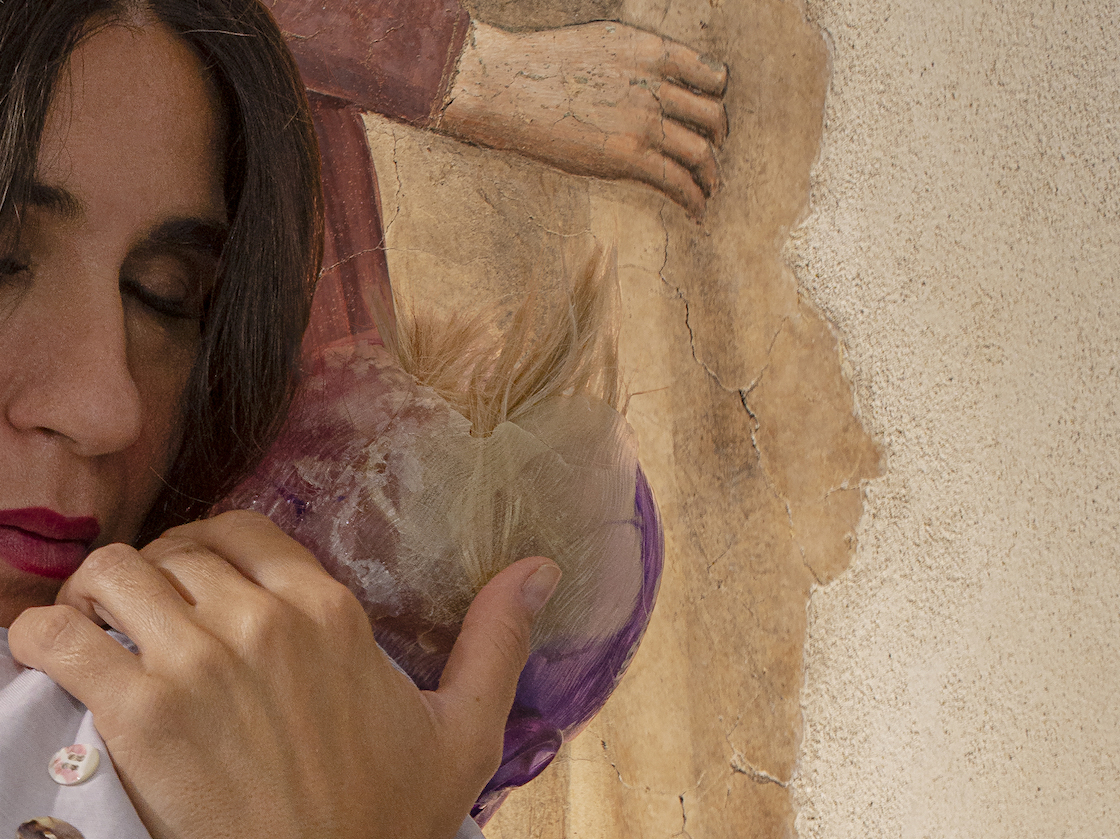
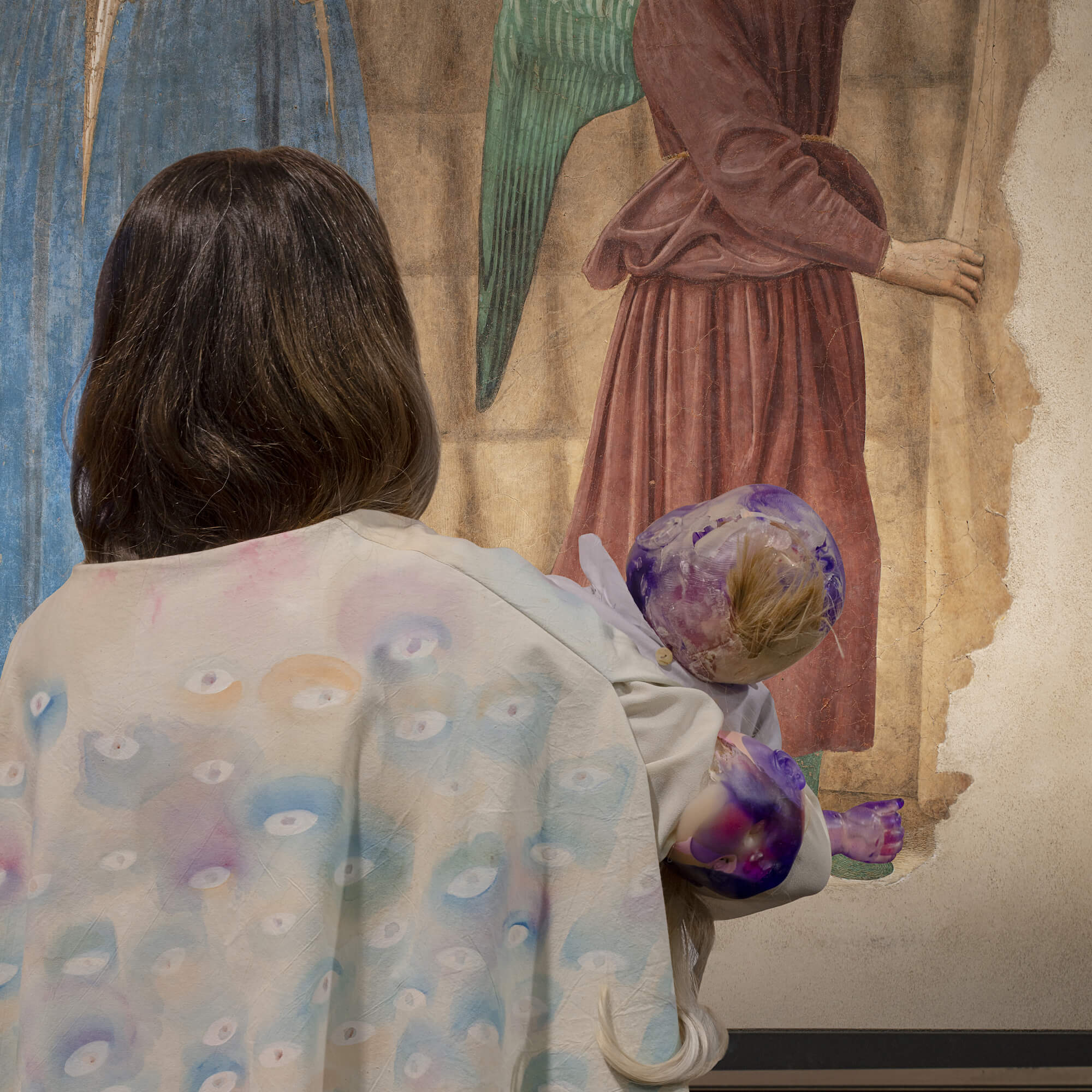
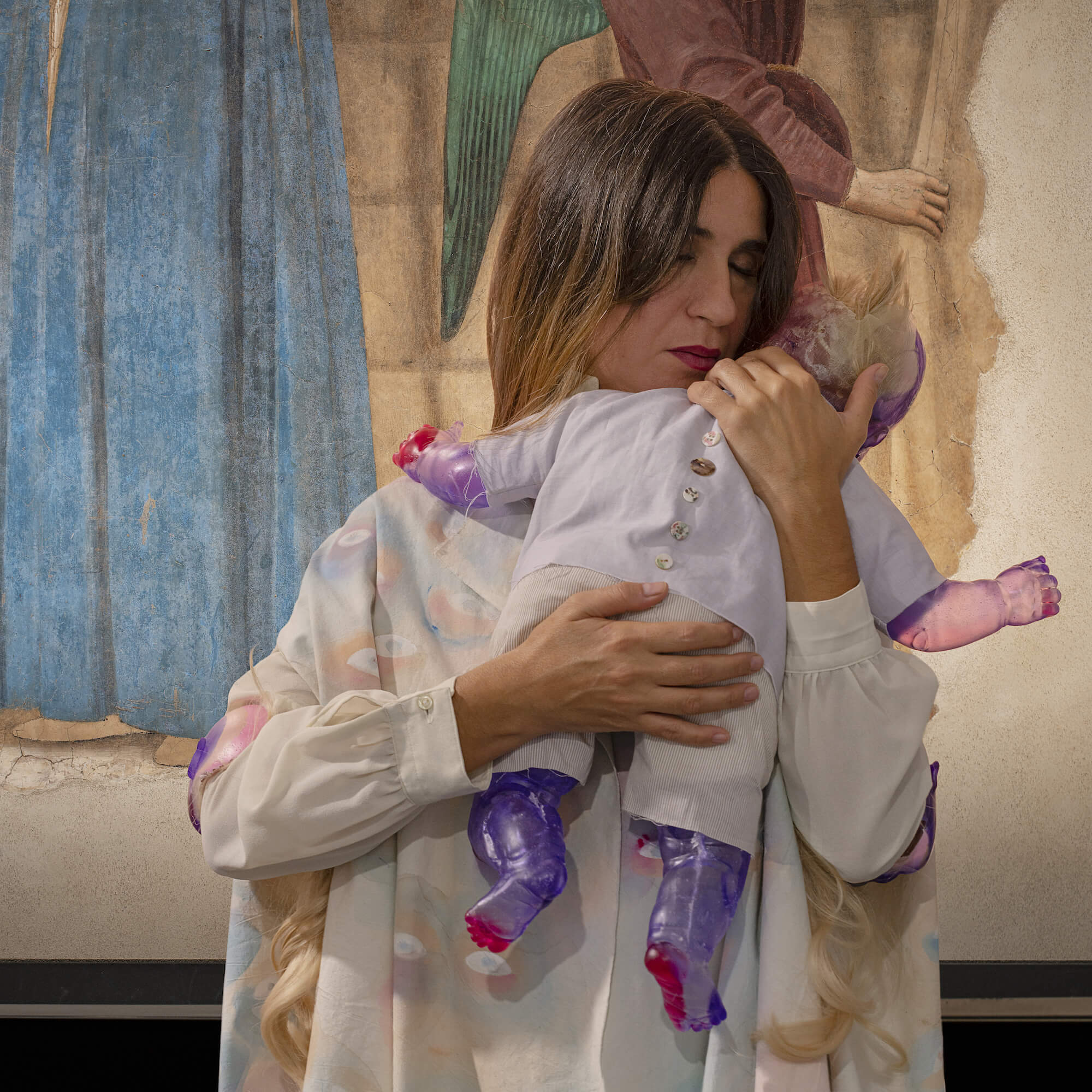
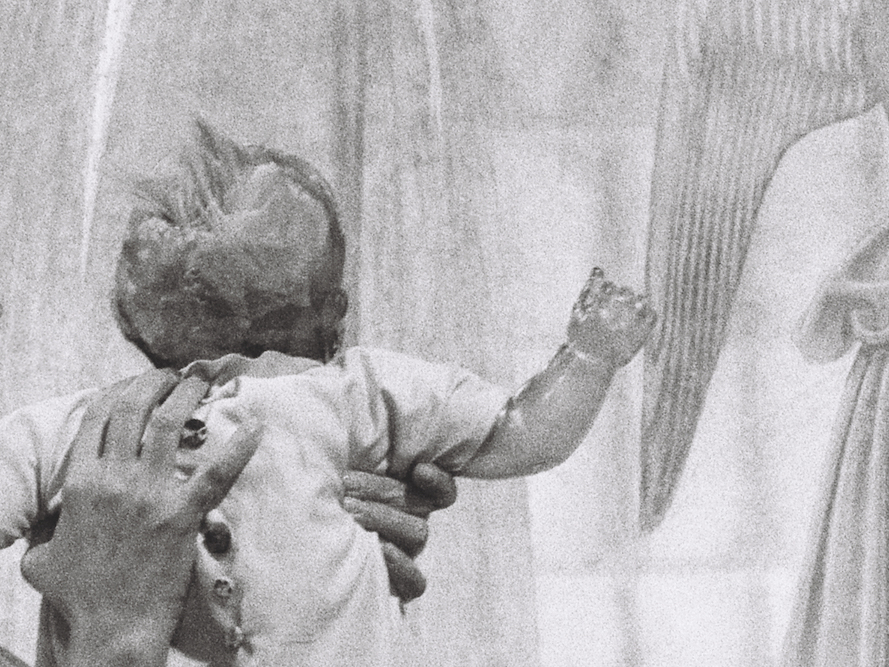
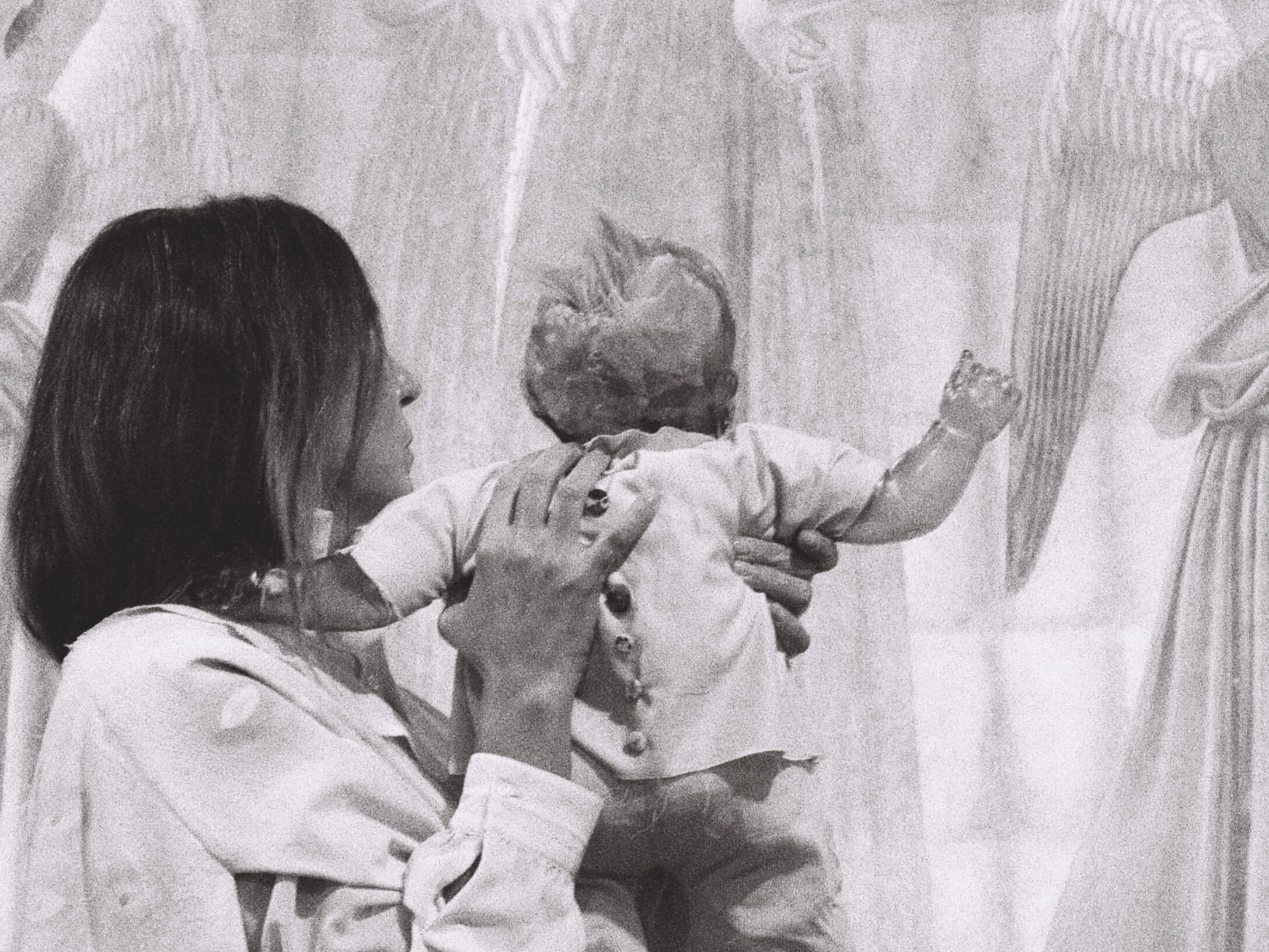
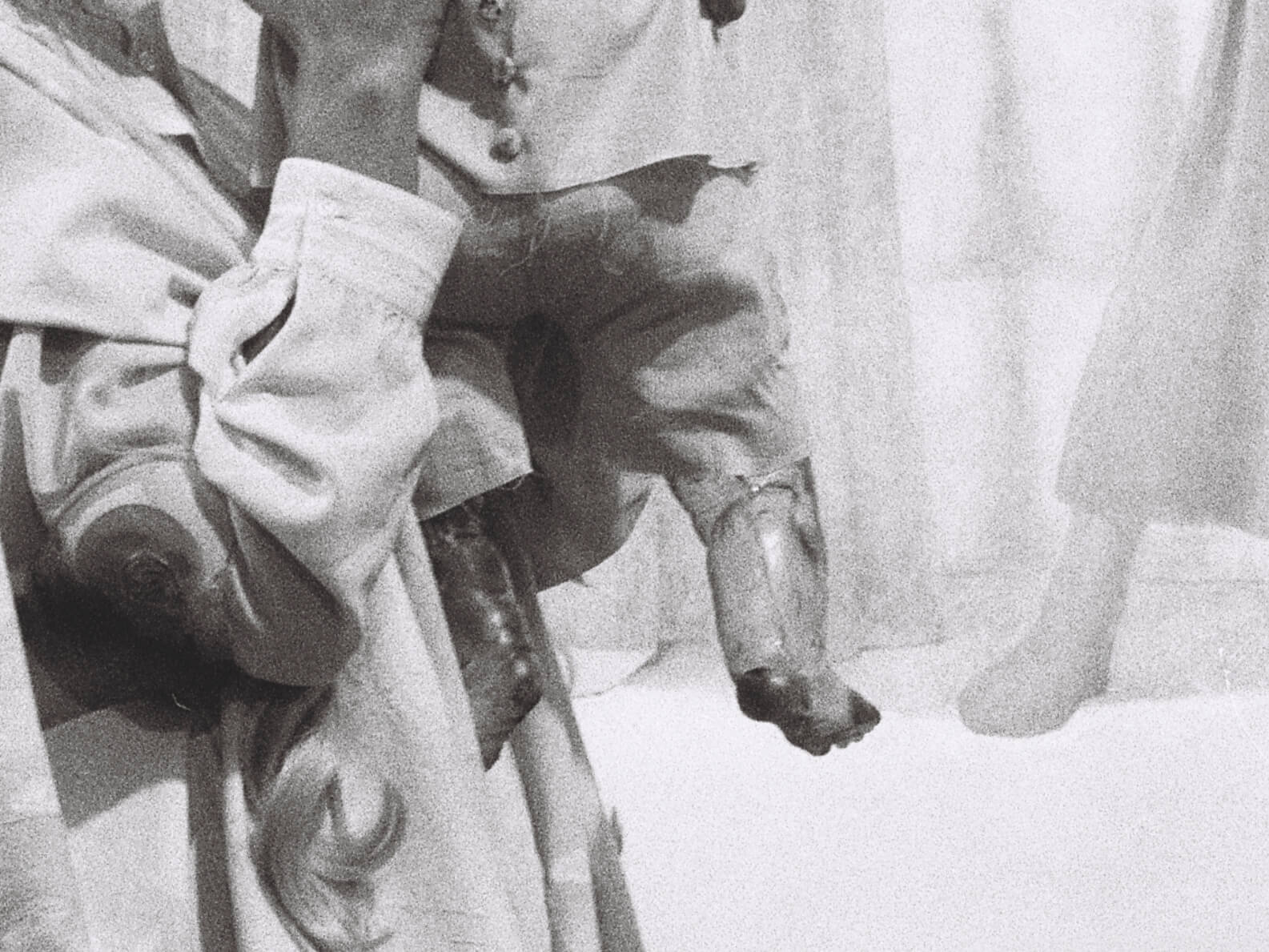
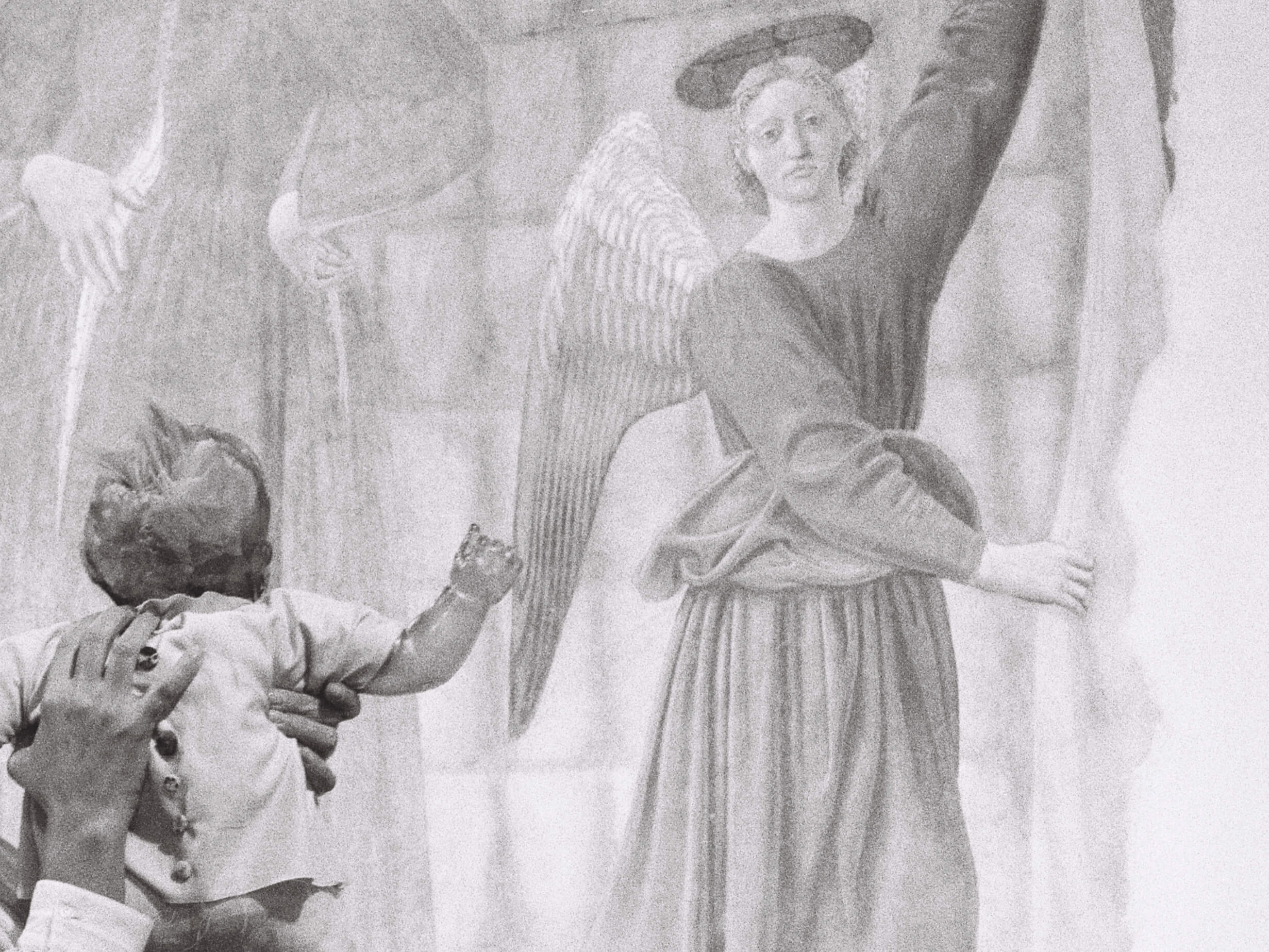
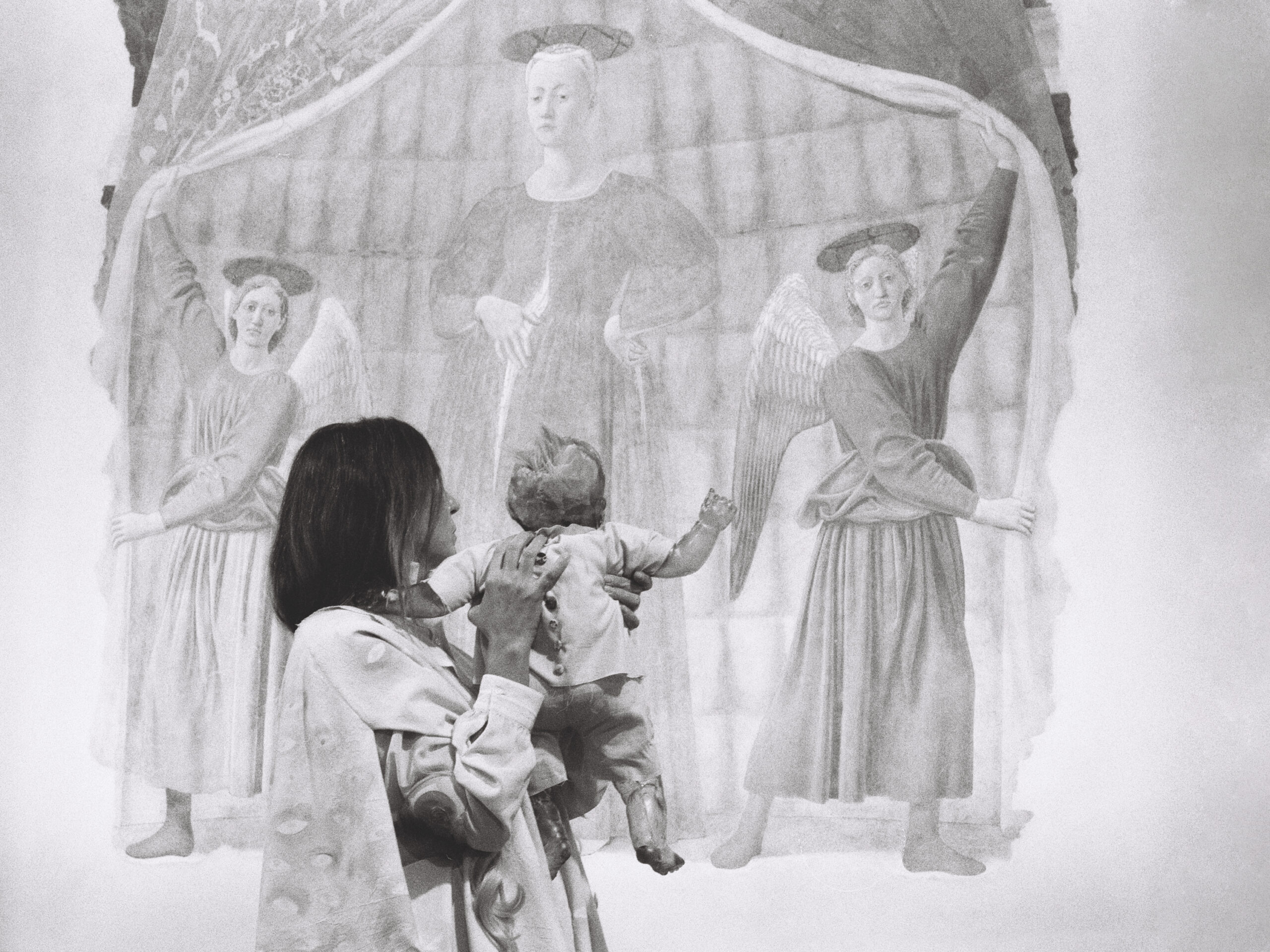
Diary – 10/10/20 : “After breakfast we leave for Monterchi. After a long walk-through at the Museo della Madonna del Parto, the Photographer has lunch in an establishment close to the Museum and, right after, begins working on the post-production of the previous photo shoots. The Curator goes to Arezzo, to greet the Artist, who came from Milan by train, changing at Firenze SMN. As they reach Monterchi, the Artist, Curator and Photographer get to the Museo della Madonna del Parto. At around 5.50 pm, once the Museum closes, they meet with Assessora Manuela Malatesta, who arranges for the Museum to remain open after hours solely for the photo shoot, which lasts until 9.30 pm. At the end, the Artist, Curator and Photographer have dinner in the same restaurant where the Photographer had lunch, a few meters away from the Museum. The three of them spend the night in Badia Il Vingone, close to Monterchi. 11/10/20: The Curator and the Photographer visit the Bacci Chapel in the Basilica of San Francesco, in Arezzo, in order to study the frescos by Piero della Francesca. The Photographer compares the colors with those of the Madonna del Parto to better calibrate the post-production of the photographs. The Curator observes in person its specific narrative structure, based on themes rather than time, which will be of great inspiration for the structure of the project’s website”
Diary – 10/10/20 : “After breakfast we leave for Monterchi. After a long walk-through at the Museo della Madonna del Parto, the Photographer has lunch in an establishment close to the Museum and, right after, begins working on the post-production of the previous photo shoots. The Curator goes to Arezzo, to greet the Artist, who came from Milan by train, changing at Firenze SMN. As they reach Monterchi, the Artist, Curator and Photographer get to the Museo della Madonna del Parto. At around 5.50 pm, once the Museum closes, they meet with Assessora Manuela Malatesta, who arranges for the Museum to remain open after hours solely for the photo shoot, which lasts until 9.30 pm. At the end, the Artist, Curator and Photographer have dinner in the same restaurant where the Photographer had lunch, a few meters away from the Museum. The three of them spend the night in Badia Il Vingone, close to Monterchi. 11/10/20: The Curator and the Photographer visit the Bacci Chapel in the Basilica of San Francesco, in Arezzo, in order to study the frescos by Piero della Francesca. The Photographer compares the colors with those of the Madonna del Parto to better calibrate the post-production of the photographs. The Curator observes in person its specific narrative structure, based on themes rather than time, which will be of great inspiration for the structure of the project’s website”
Diary – 10/10/20 : “After breakfast we leave for Monterchi. After a long walk-through at the Museo della Madonna del Parto, the Photographer has lunch in an establishment close to the Museum and, right after, begins working on the post-production of the previous photo shoots. The Curator goes to Arezzo, to greet the Artist, who came from Milan by train, changing at Firenze SMN. As they reach Monterchi, the Artist, Curator and Photographer get to the Museo della Madonna del Parto. At around 5.50 pm, once the Museum closes, they meet with Assessora Manuela Malatesta, who arranges for the Museum to remain open after hours solely for the photo shoot, which lasts until 9.30 pm. At the end, the Artist, Curator and Photographer have dinner in the same restaurant where the Photographer had lunch, a few meters away from the Museum. The three of them spend the night in Badia Il Vingone, close to Monterchi. 11/10/20: The Curator and the Photographer visit the Bacci Chapel in the Basilica of San Francesco, in Arezzo, in order to study the frescos by Piero della Francesca. The Photographer compares the colors with those of the Madonna del Parto to better calibrate the post-production of the photographs. The Curator observes in person its specific narrative structure, based on themes rather than time, which will be of great inspiration for the structure of the project’s website”
What is striking about Piero Della Francesca’s fresco is it being liminal, constantly between two worlds: it is both an object of devotion and a work of art, a Renaissance masterpiece and an icon of folk belief, the subject of scientific studies and, to this day, an idol trusted with the hopes and desires related to the birth of a new life. Its harmonization of two distinct attitudes is counterbalanced by a rigorous geometric structure, a firm support holding the soft anatomies of the tent, of the angels and of the Mother of Christ.
What is striking about Piero Della Francesca’s fresco is it being liminal, constantly between two worlds: it is both an object of devotion and a work of art, a Renaissance masterpiece and an icon of folk belief, the subject of scientific studies and, to this day, an idol trusted with the hopes and desires related to the birth of a new life. Its harmonization of two distinct attitudes is counterbalanced by a rigorous geometric structure, a firm support holding the soft anatomies of the tent, of the angels and of the Mother of Christ.
What is striking about Piero Della Francesca’s fresco is it being liminal, constantly between two worlds: it is both an object of devotion and a work of art, a Renaissance masterpiece and an icon of folk belief, the subject of scientific studies and, to this day, an idol trusted with the hopes and desires related to the birth of a new life. Its harmonization of two distinct attitudes is counterbalanced by a rigorous geometric structure, a firm support holding the soft anatomies of the tent, of the angels and of the Mother of Christ.
Lucia Leuci’s work comes into direct dialogue with the Madonna del Parto, both formally and conceptually: Sculpture (Piero) is made of resin and fabric, it has the appearance and size of a child, and, to be installed, needs a human pedestal—a person—holding it, supporting it, and taking care of it as long as it is exhibited.
Lucia Leuci’s work comes into direct dialogue with the Madonna del Parto, both formally and conceptually: Sculpture (Piero) is made of resin and fabric, it has the appearance and size of a child, and, to be installed, needs a human pedestal—a person—holding it, supporting it, and taking care of it as long as it is exhibited.
Lucia Leuci’s work comes into direct dialogue with the Madonna del Parto, both formally and conceptually: Sculpture (Piero) is made of resin and fabric, it has the appearance and size of a child, and, to be installed, needs a human pedestal—a person—holding it, supporting it, and taking care of it as long as it is exhibited.
Today the fresco appears to us inside a display case, in a sterile environment, sheltered from external agents, illuminated exclusively by artificial lights, protected from the visitors by a thick glass wall. The Madonna del Parto appears to us inside an incubator.
The artist holds her creation in front of the creator of the Creator, then turns her back to her for a moment, thoughtful, concentrated, only to turn around again, showing the artwork to the artwork.
Today the fresco appears to us inside a display case, in a sterile environment, sheltered from external agents, illuminated exclusively by artificial lights, protected from the visitors by a thick glass wall. The Madonna del Parto appears to us inside an incubator.
The artist holds her creation in front of the creator of the Creator, then turns her back to her for a moment, thoughtful, concentrated, only to turn around again, showing the artwork to the artwork.
Today the fresco appears to us inside a display case, in a sterile environment, sheltered from external agents, illuminated exclusively by artificial lights, protected from the visitors by a thick glass wall. The Madonna del Parto appears to us inside an incubator.
The artist holds her creation in front of the creator of the Creator, then turns her back to her for a moment, thoughtful, concentrated, only to turn around again, showing the artwork to the artwork.
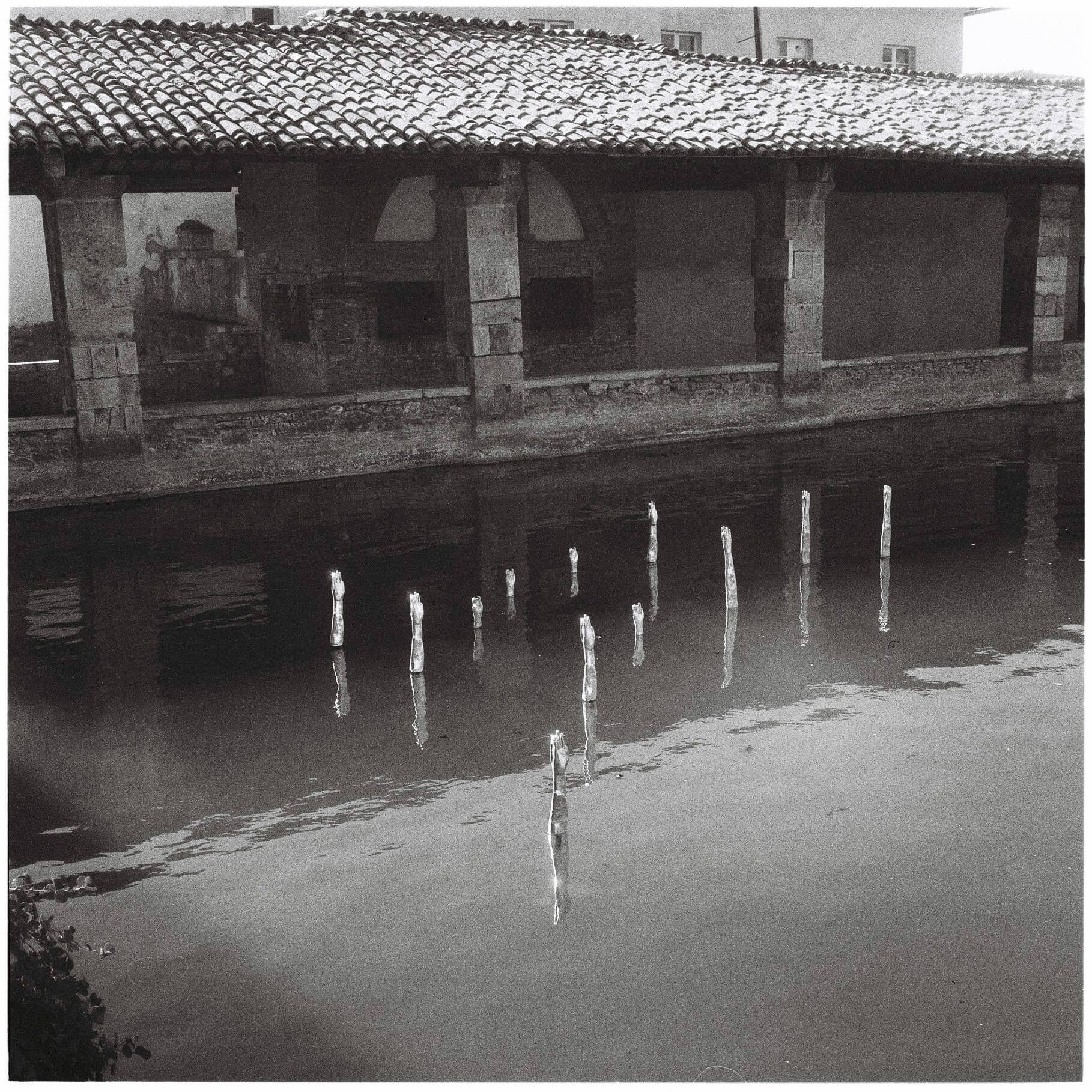
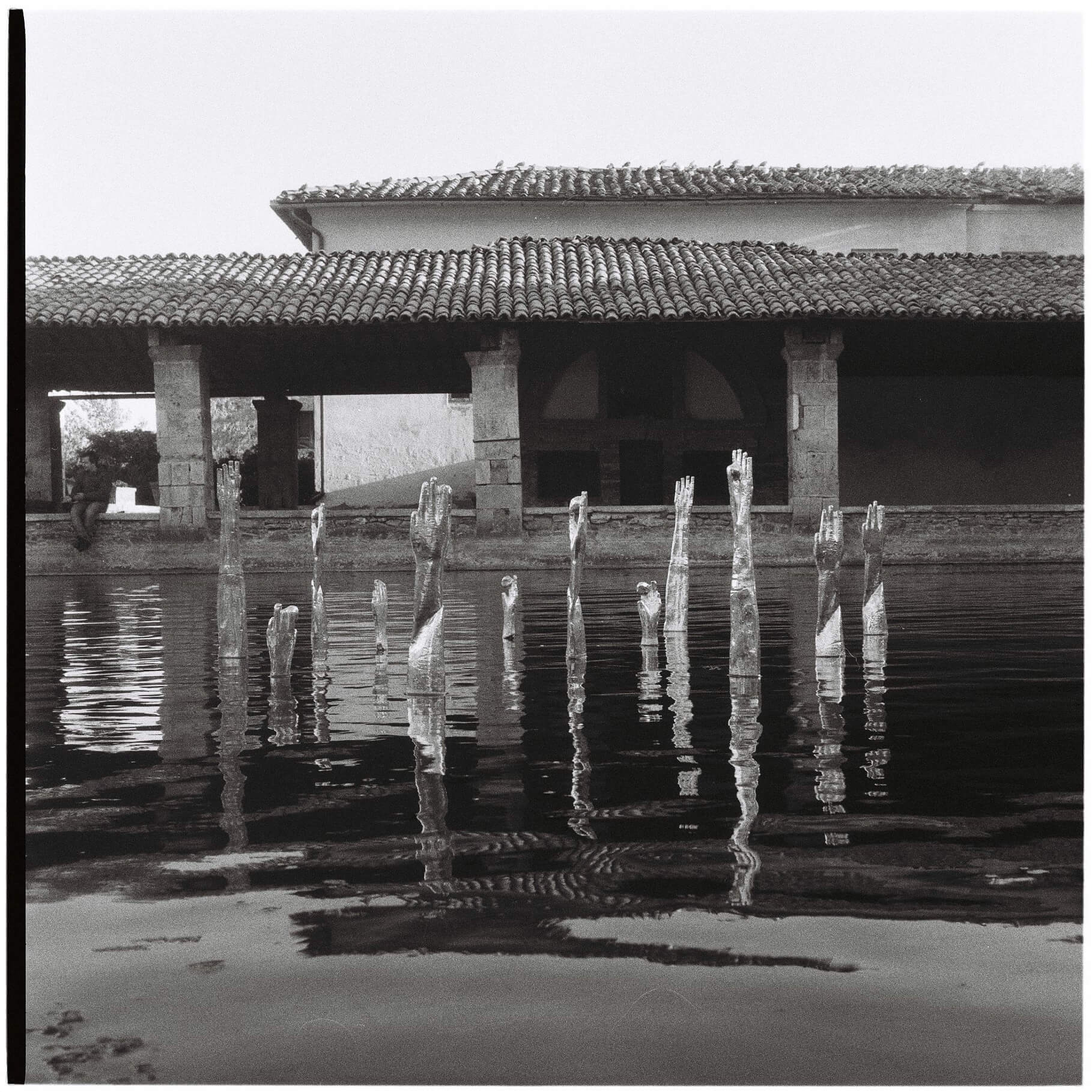
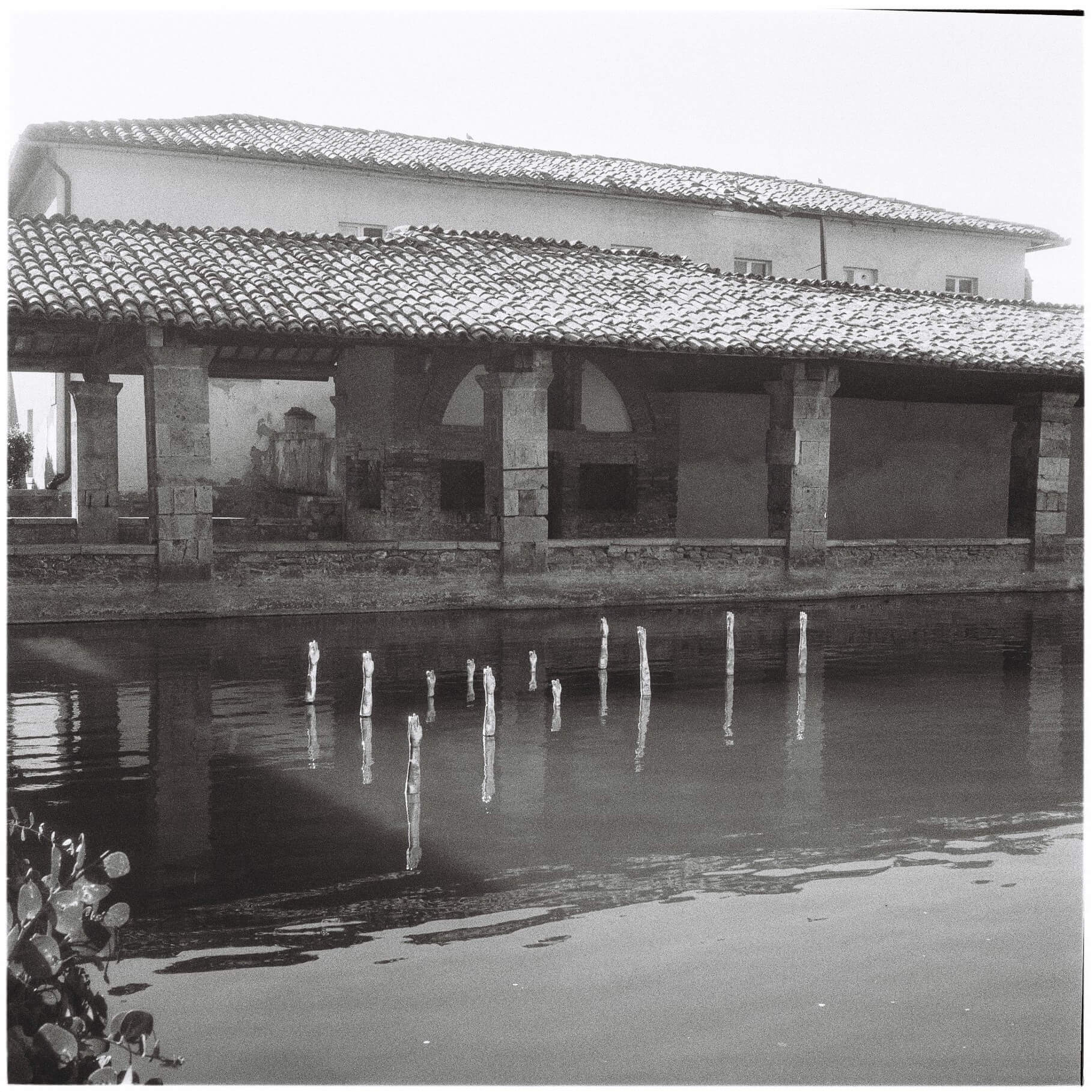
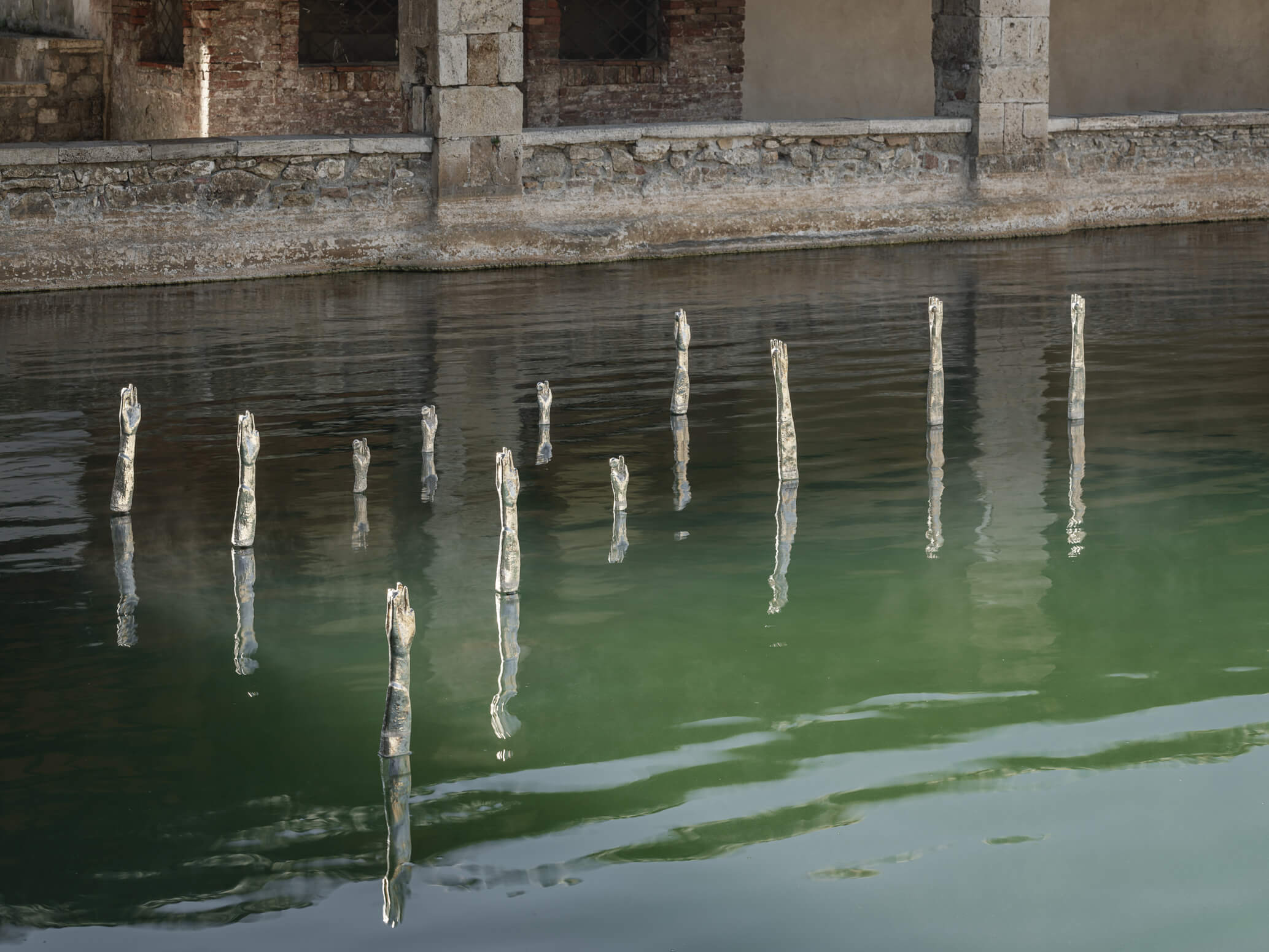
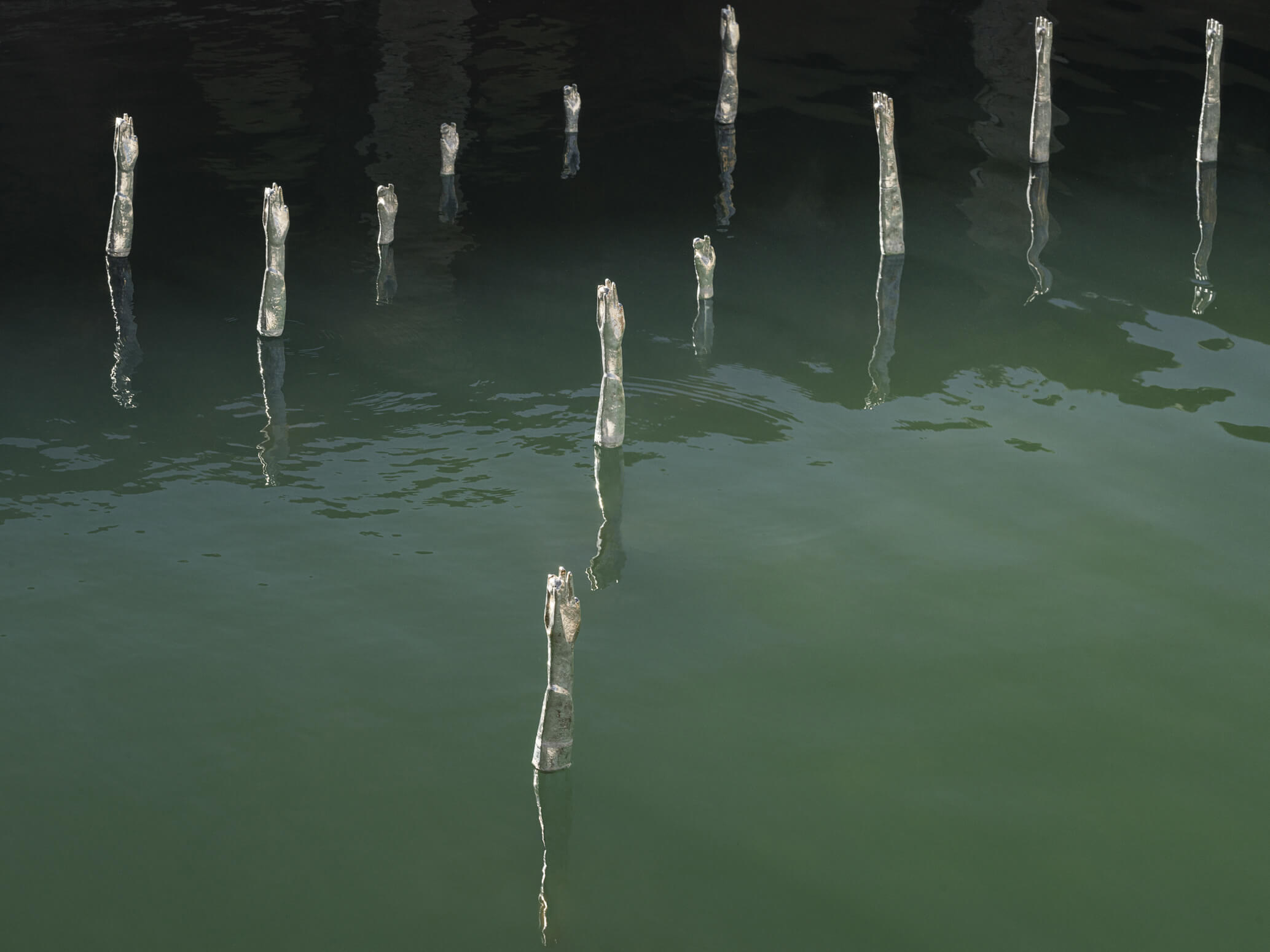
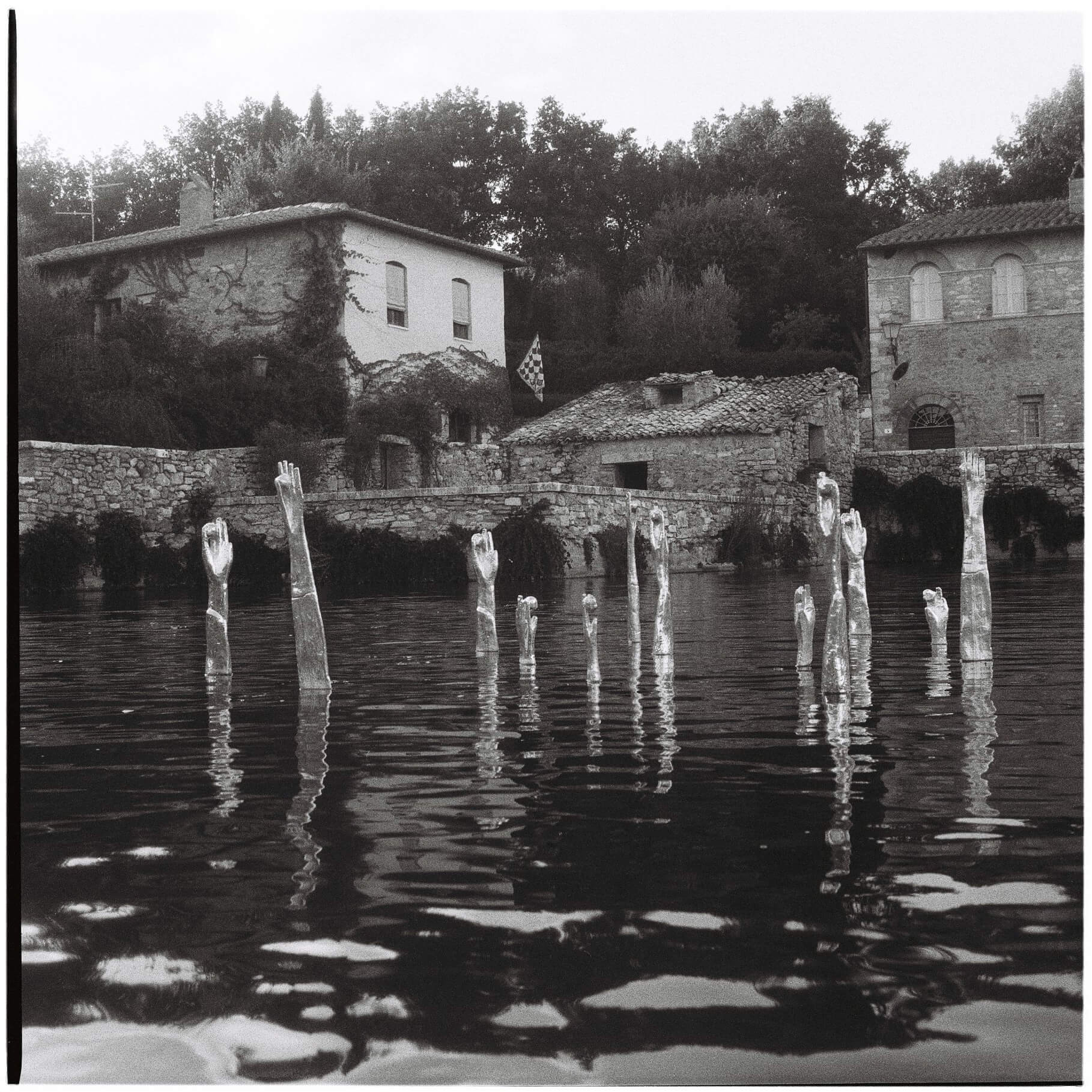
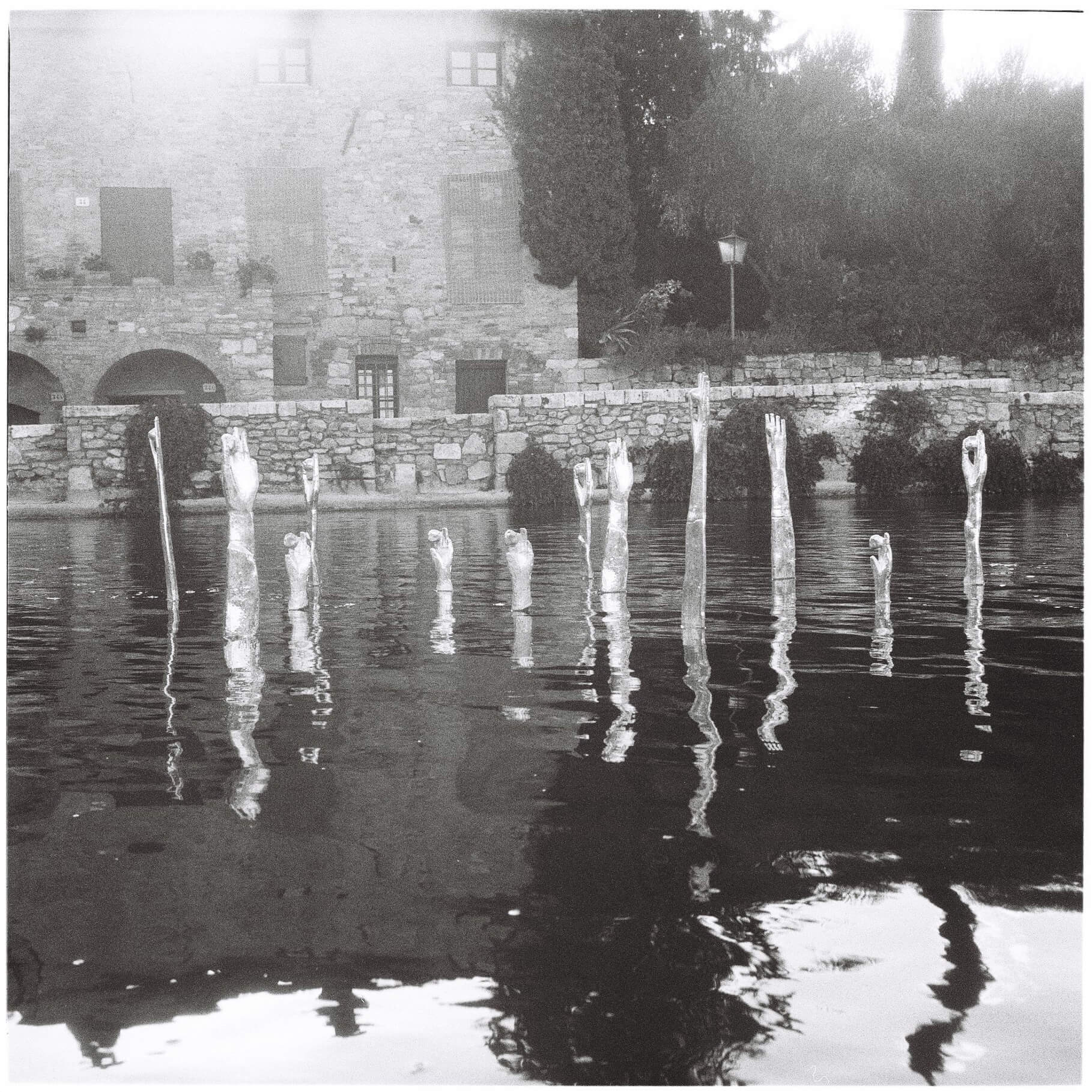
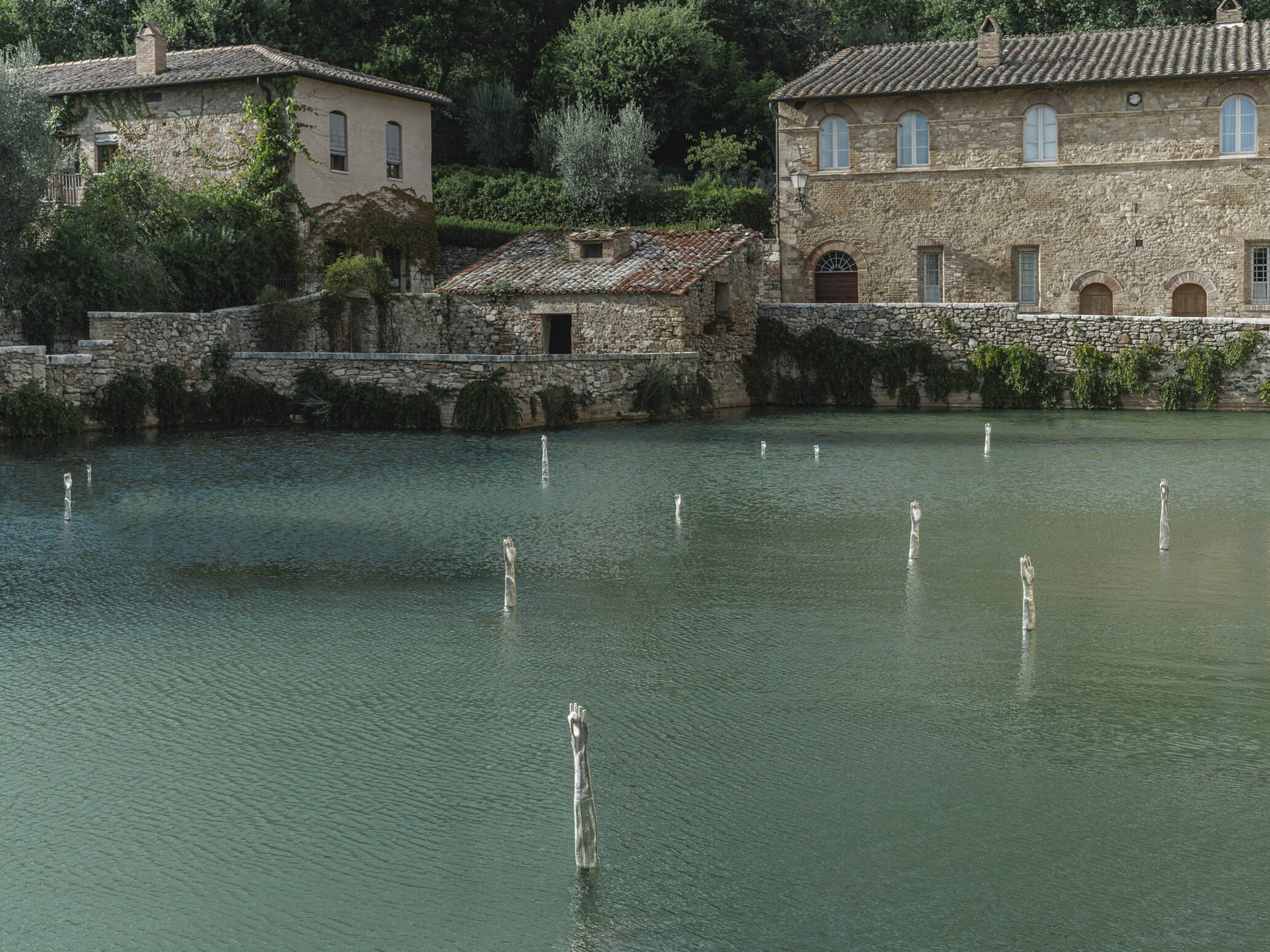
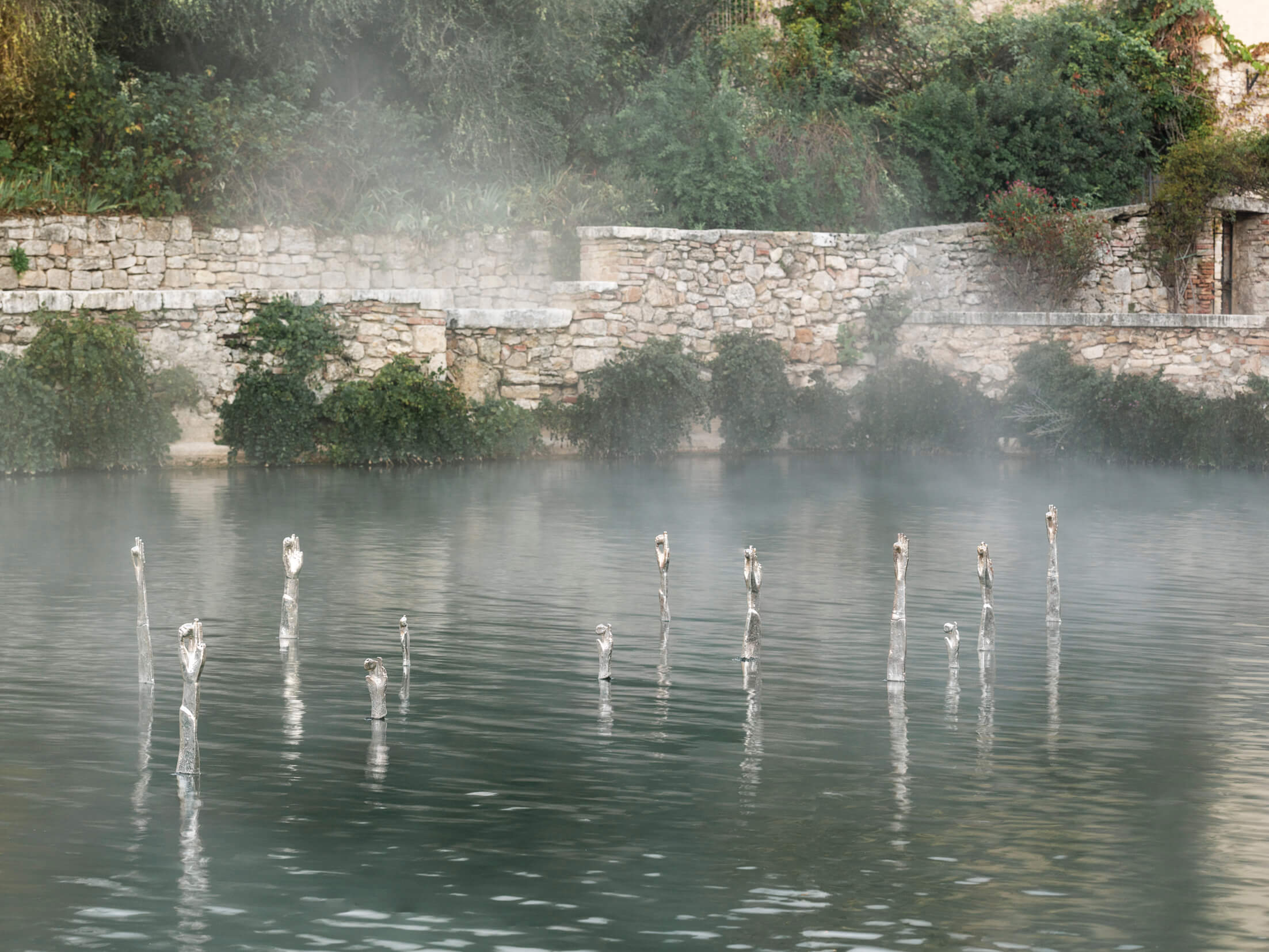
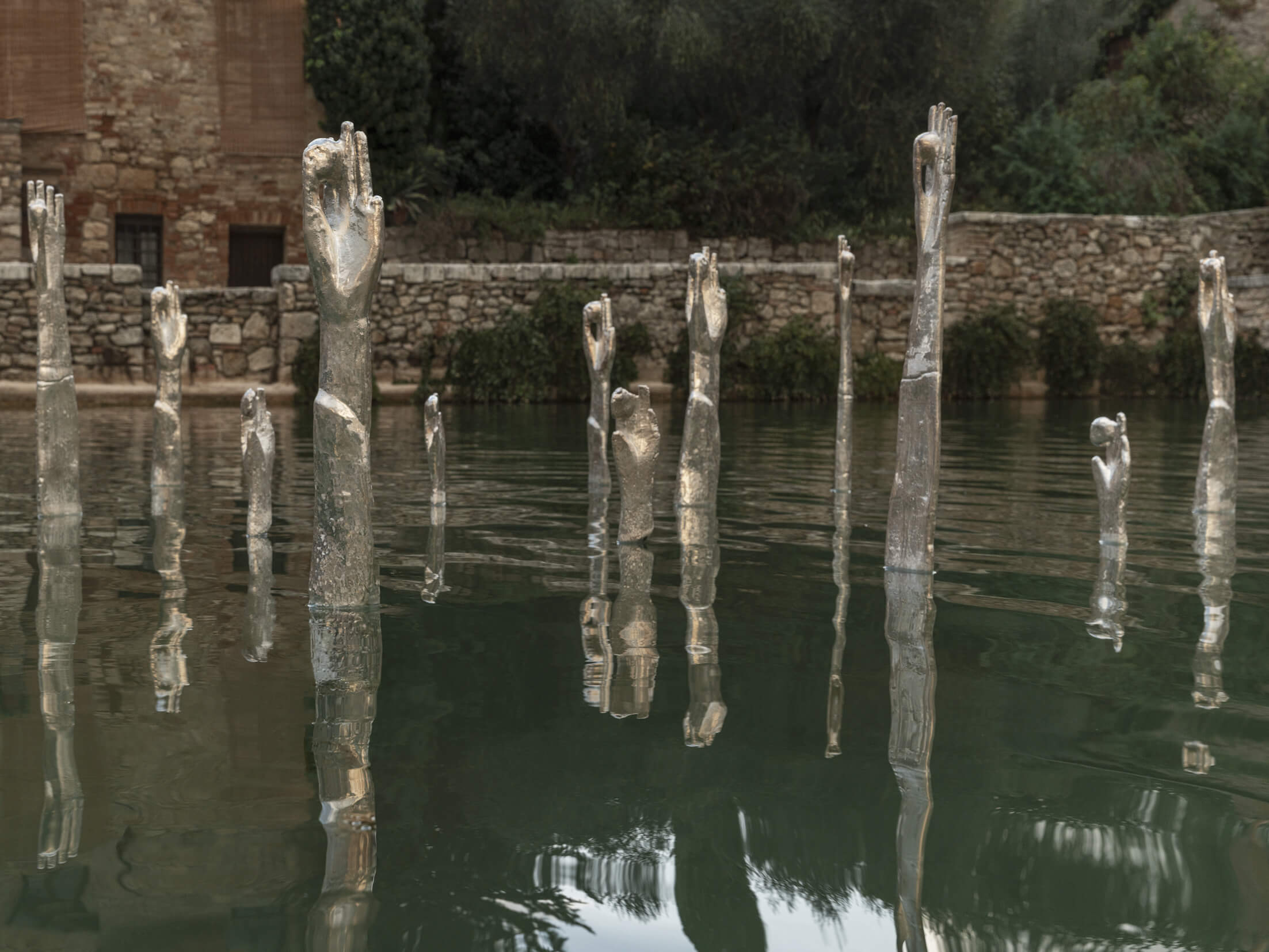
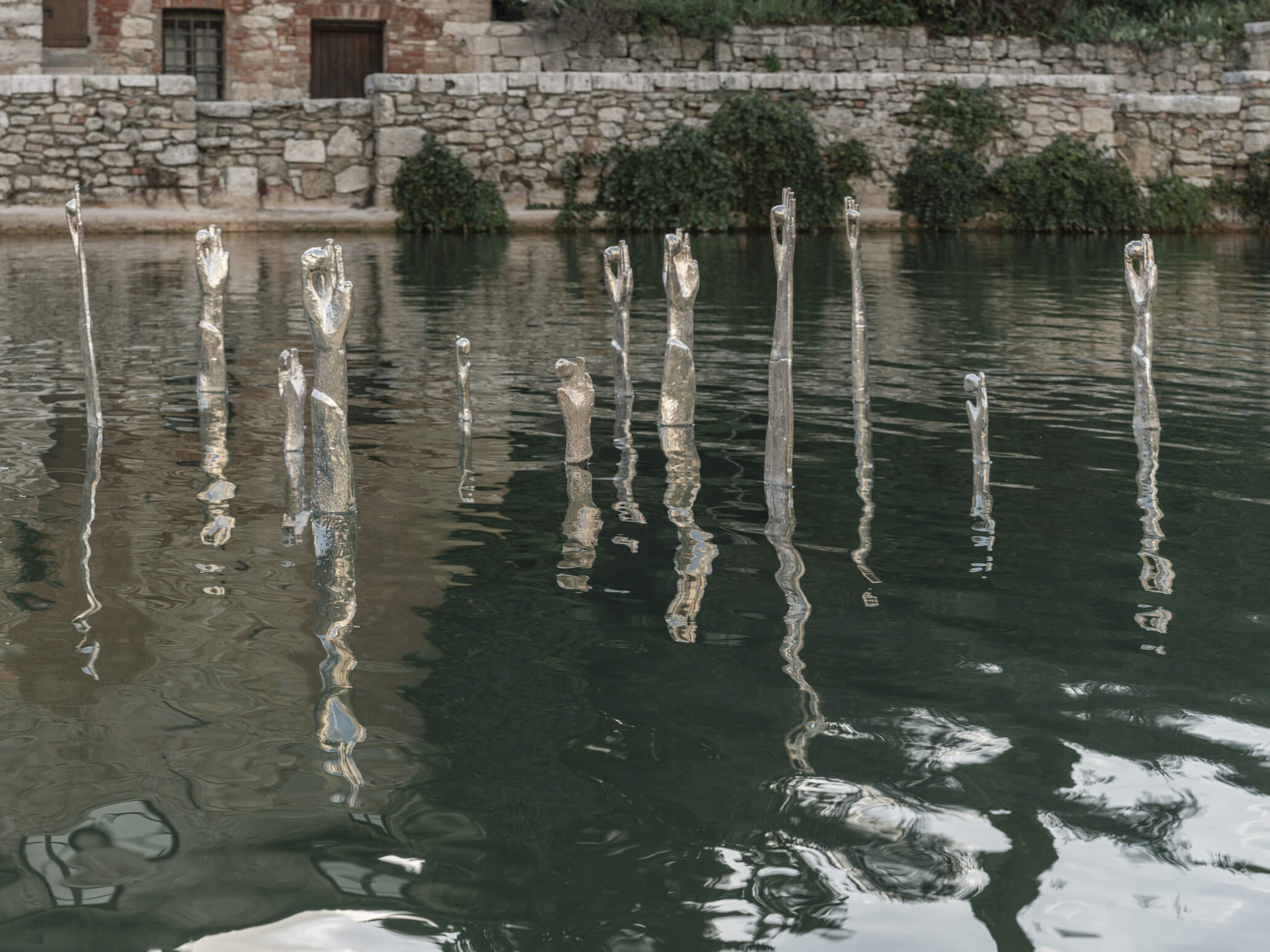
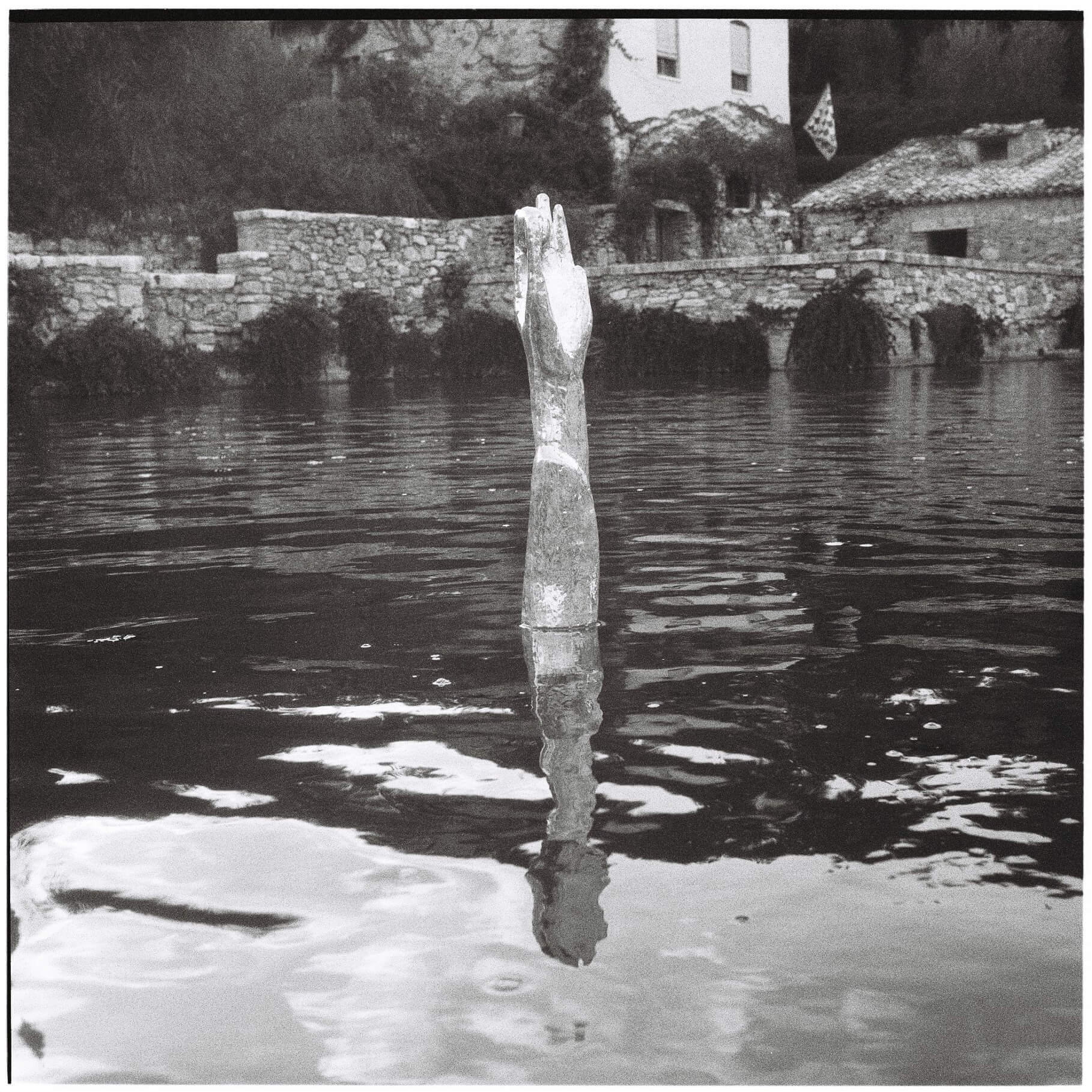
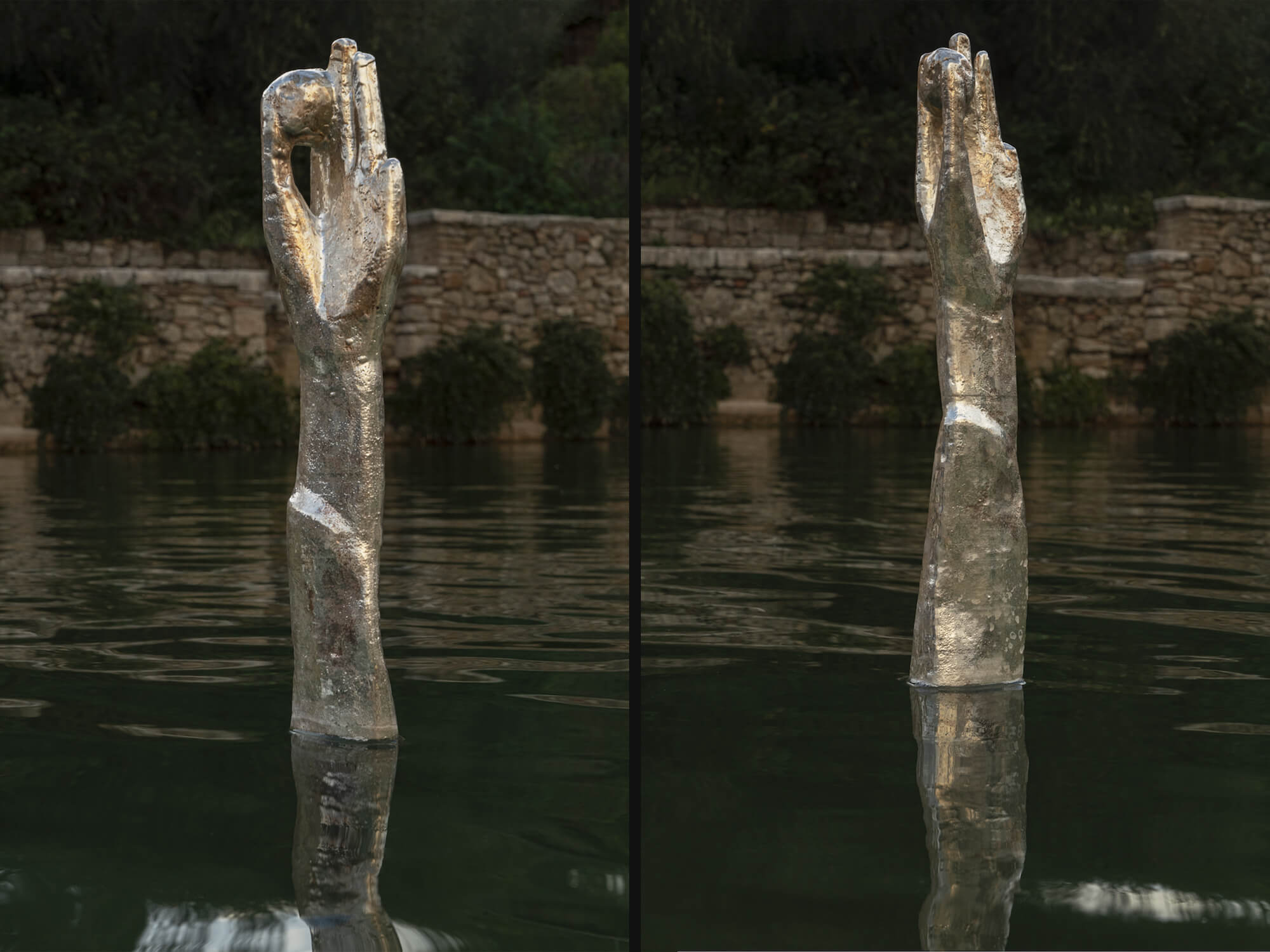
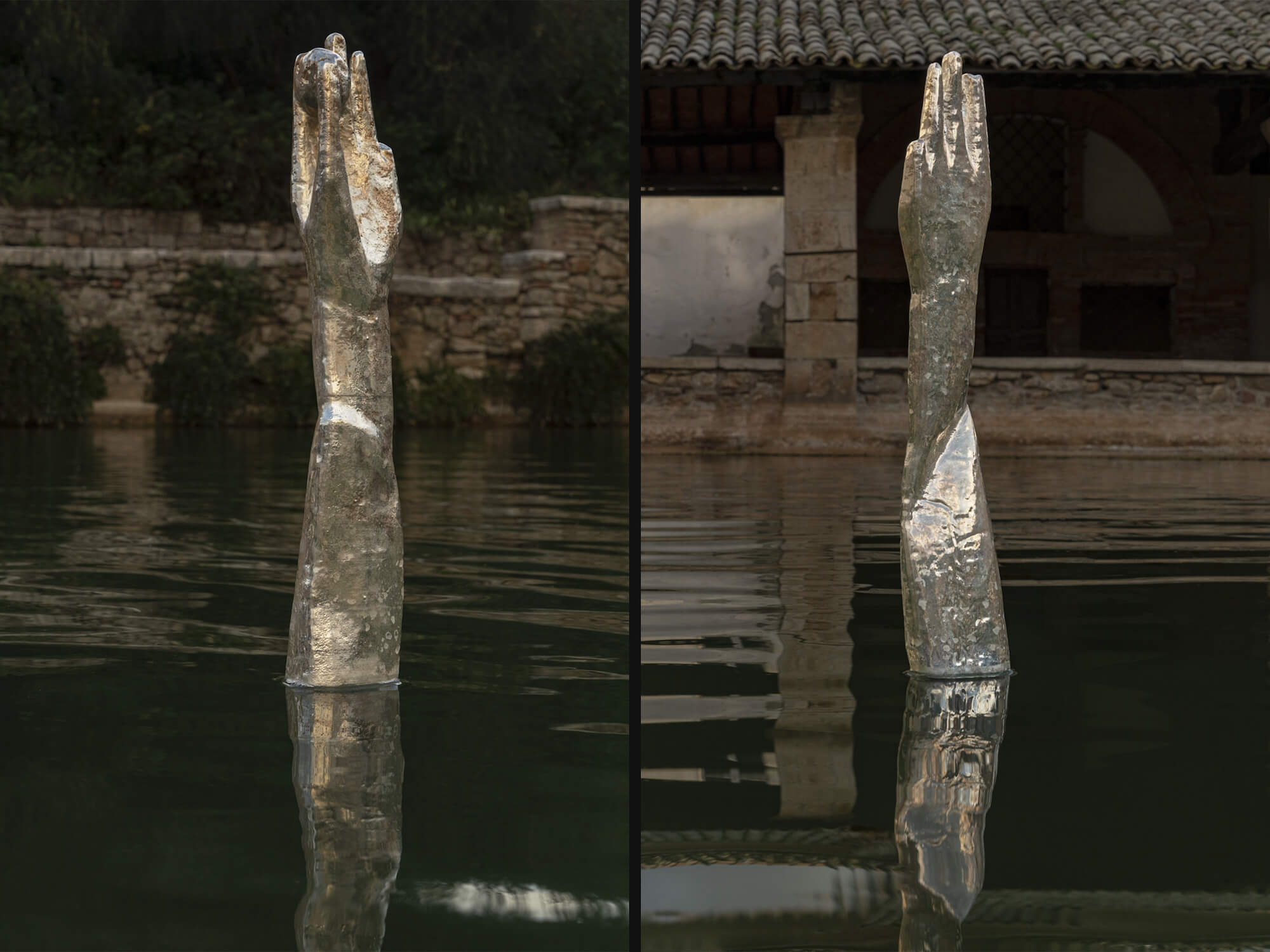
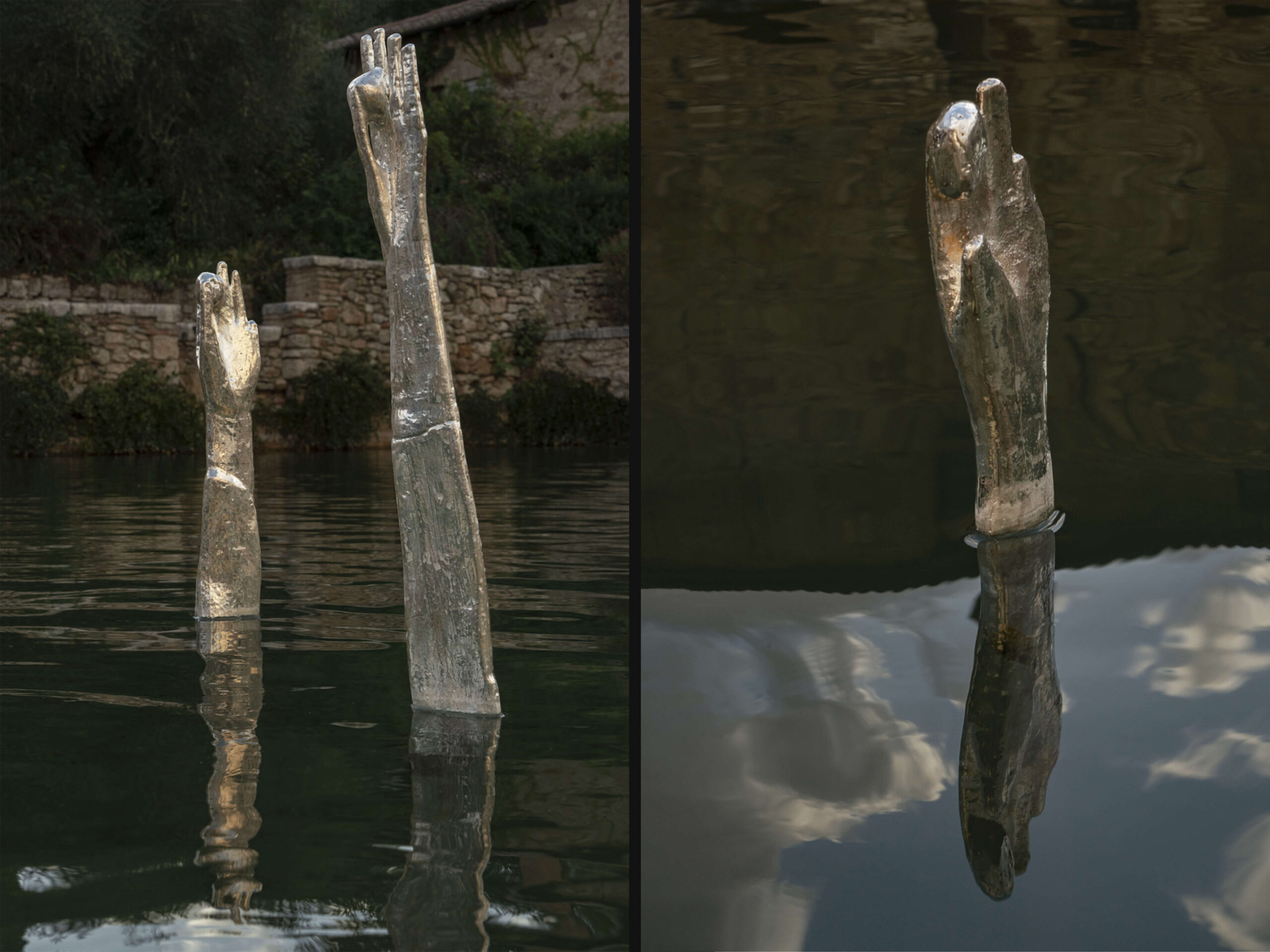
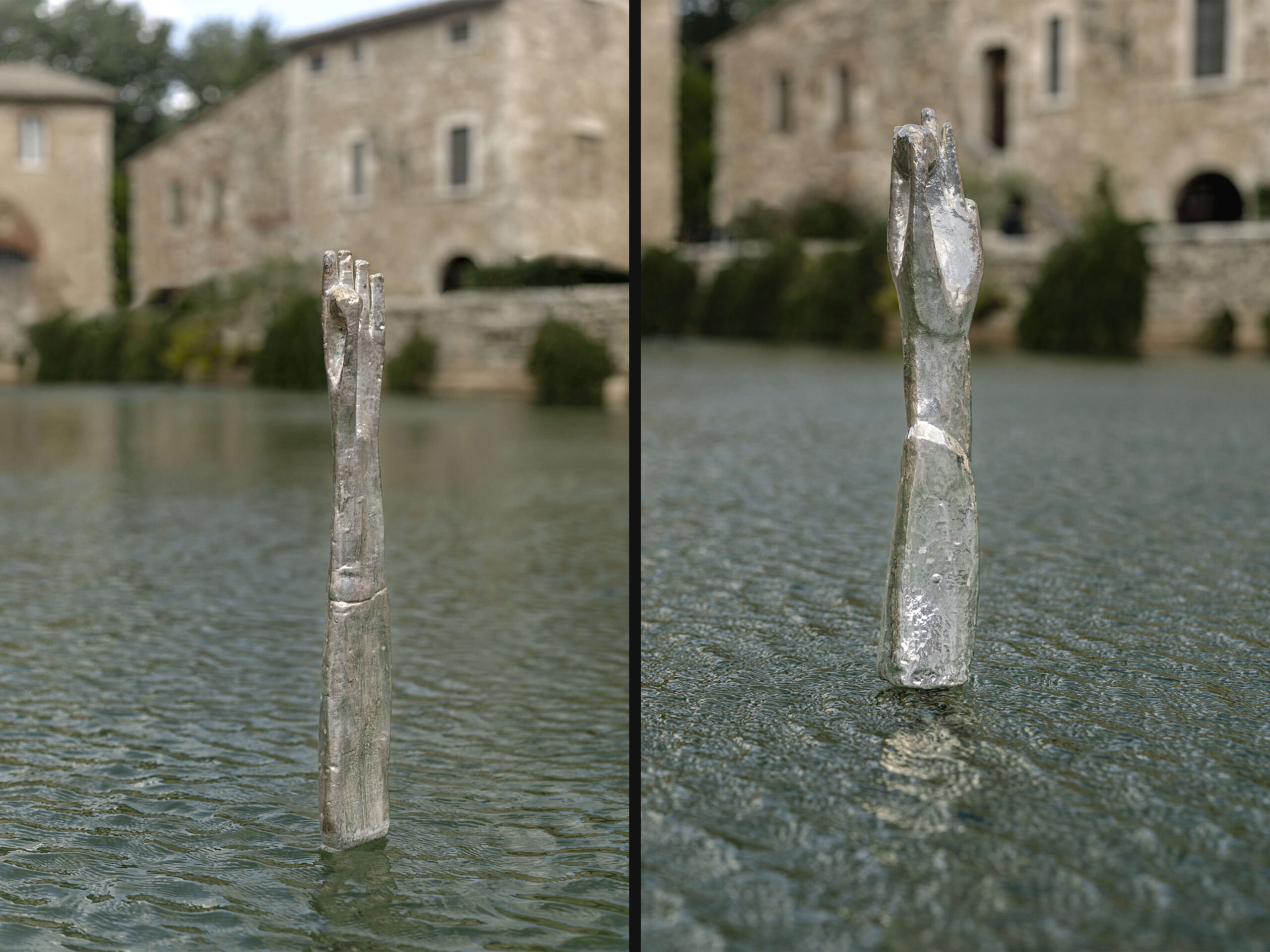
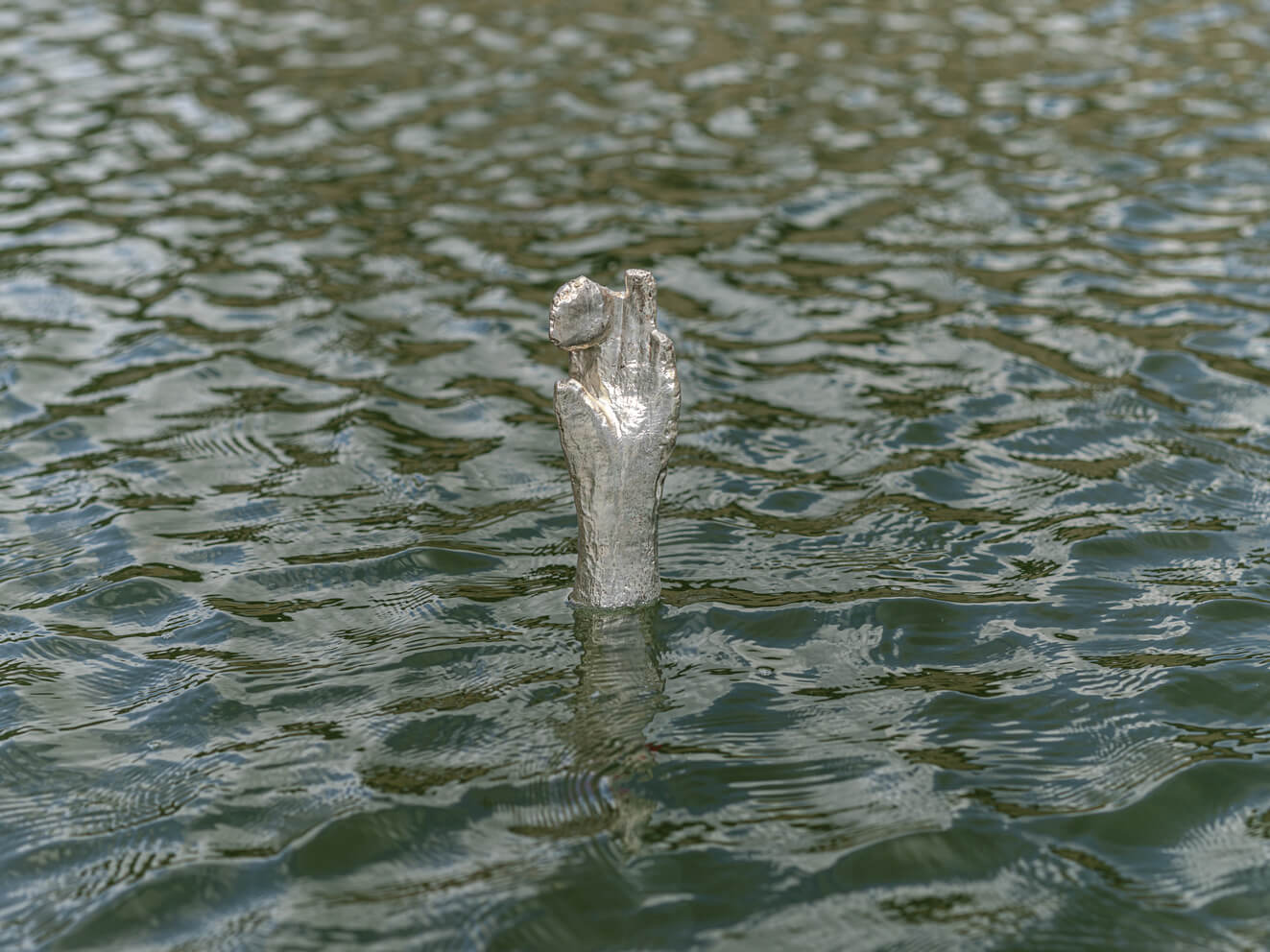
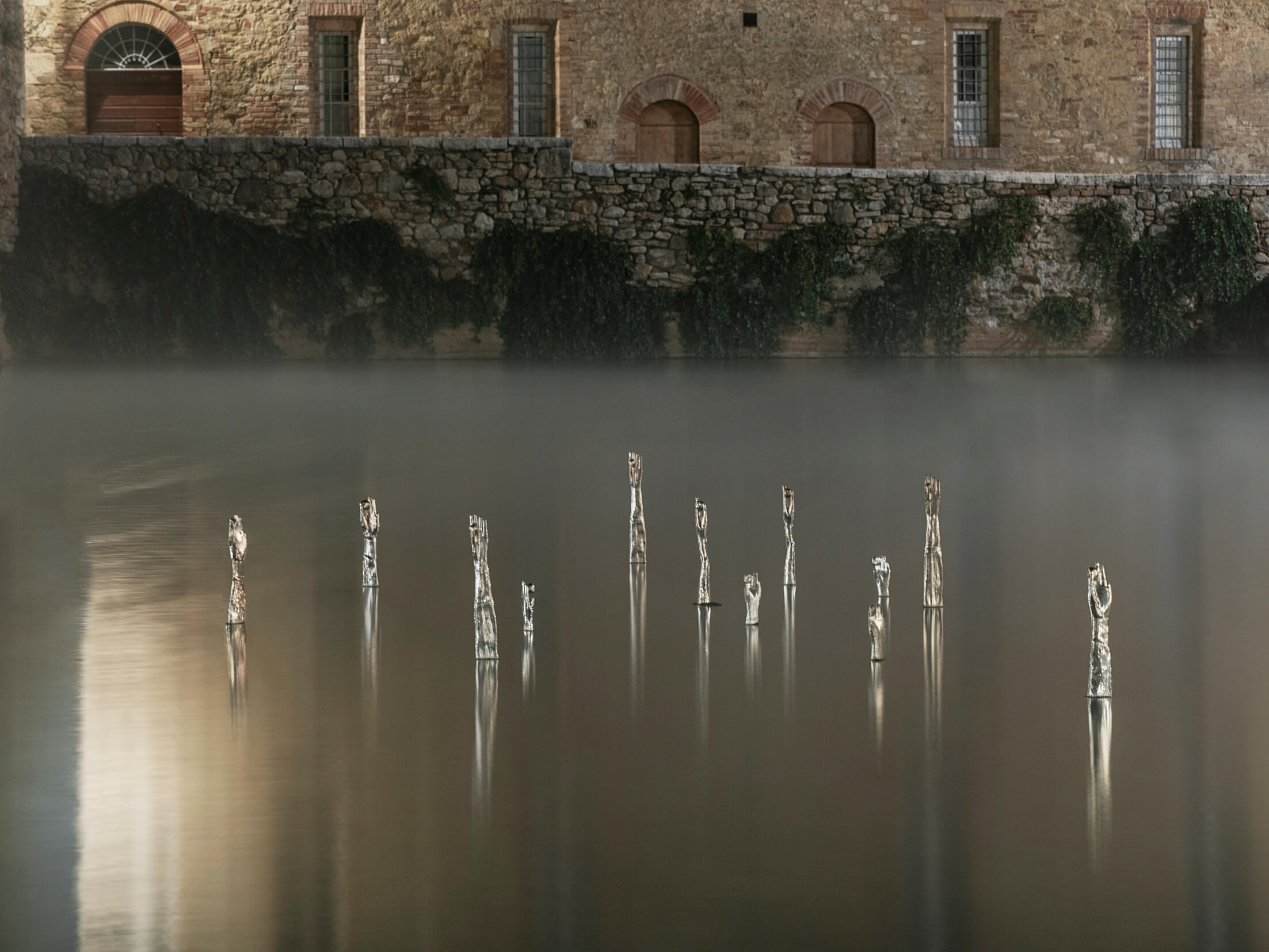
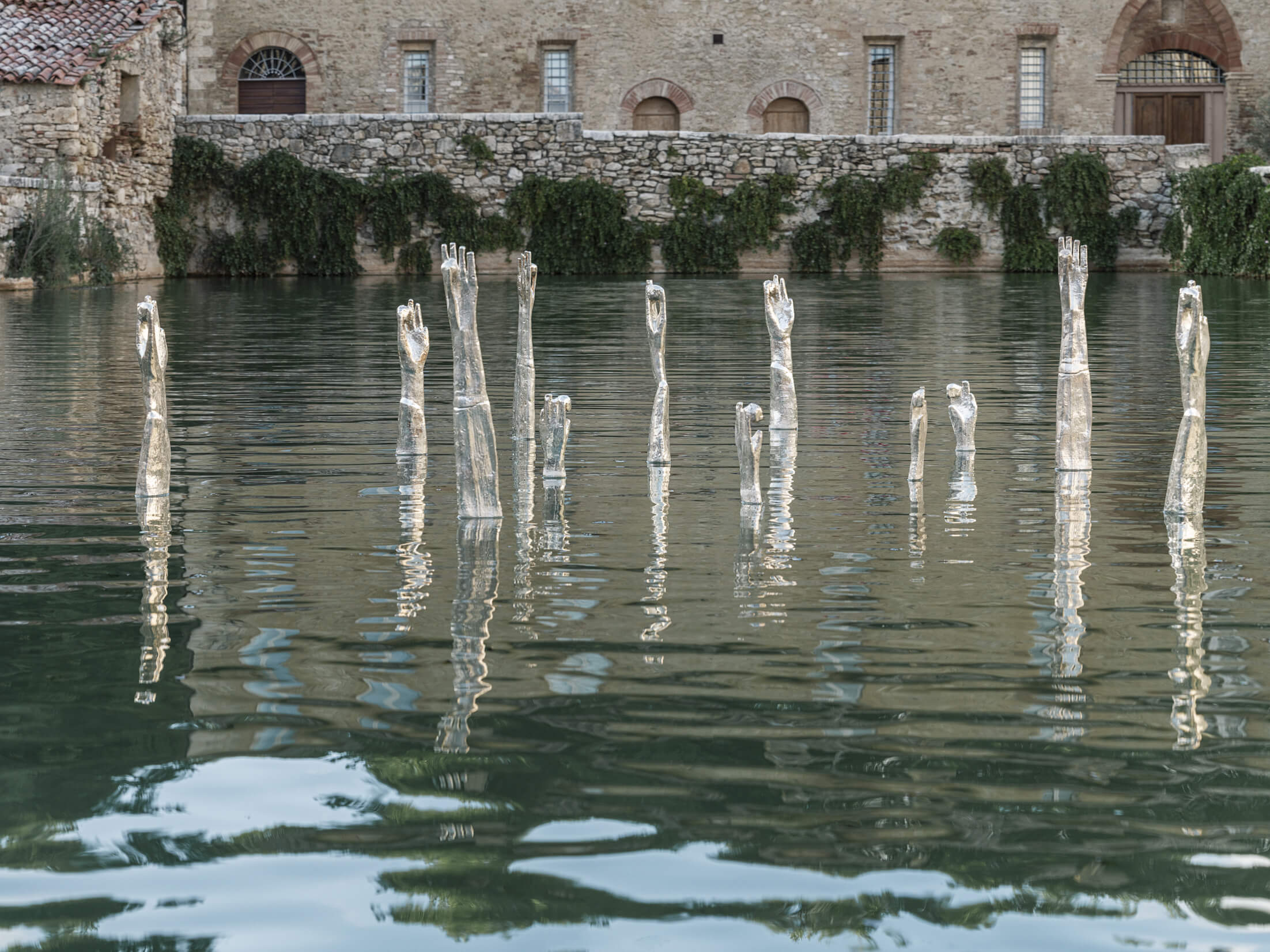
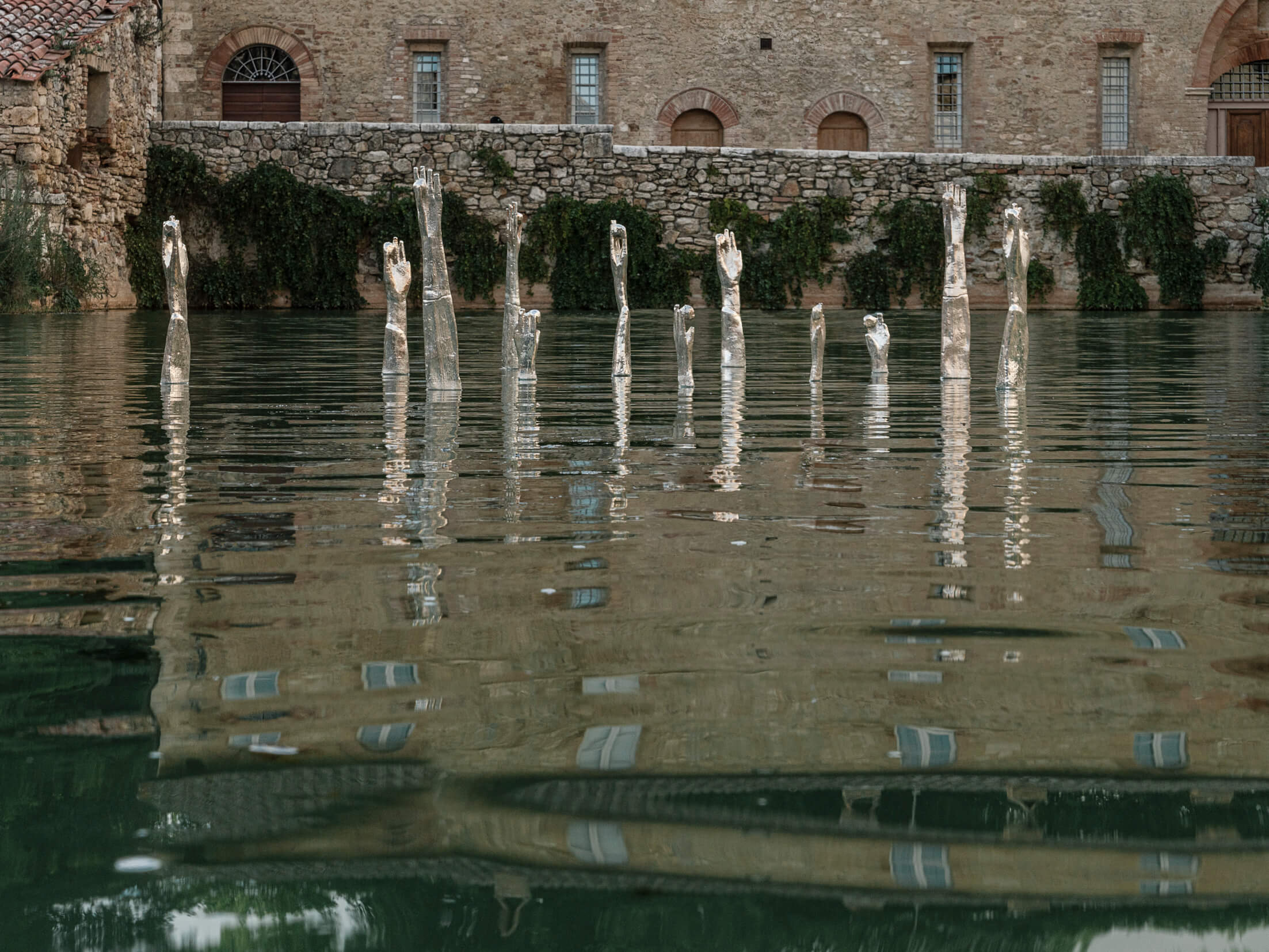
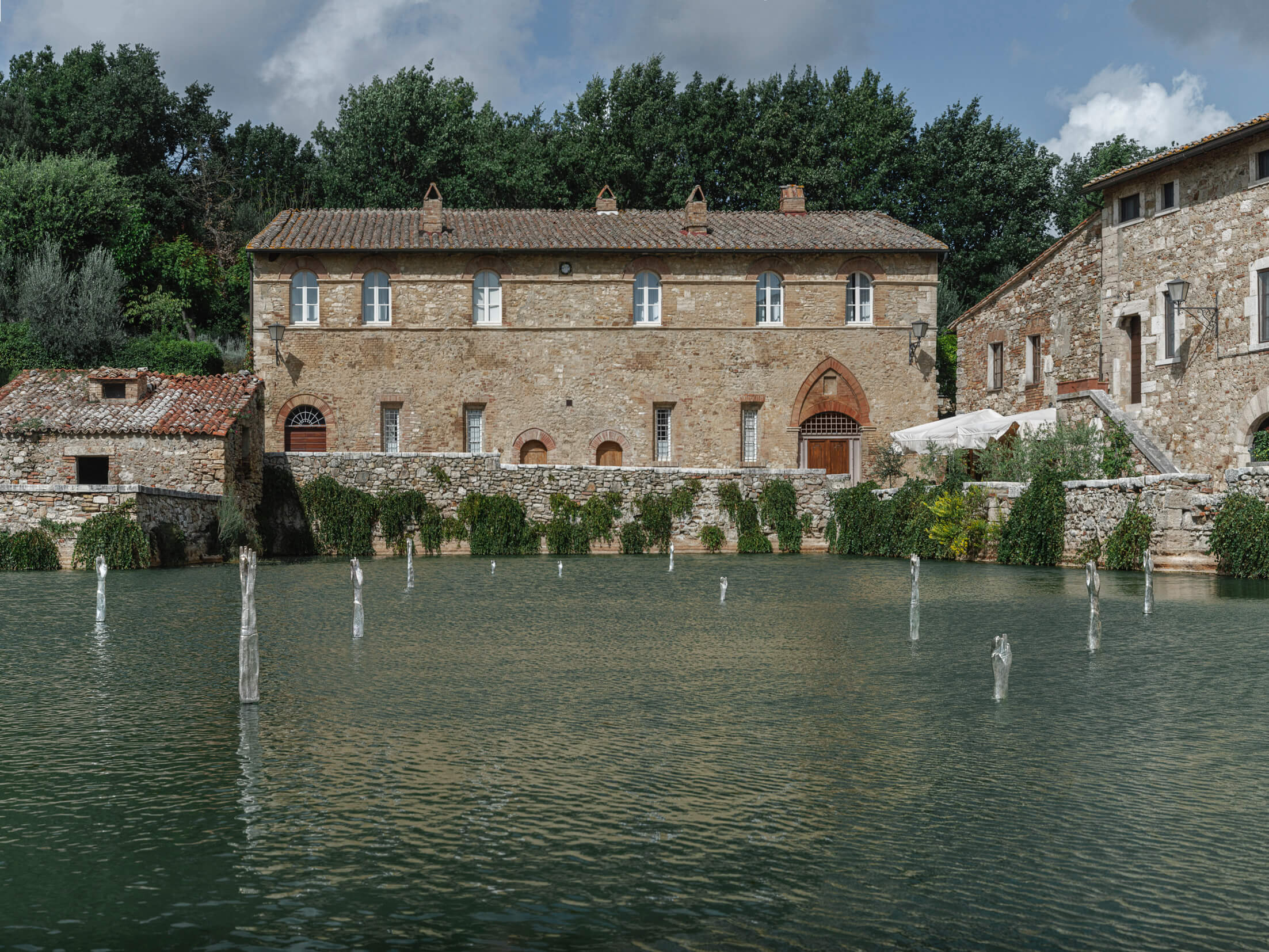
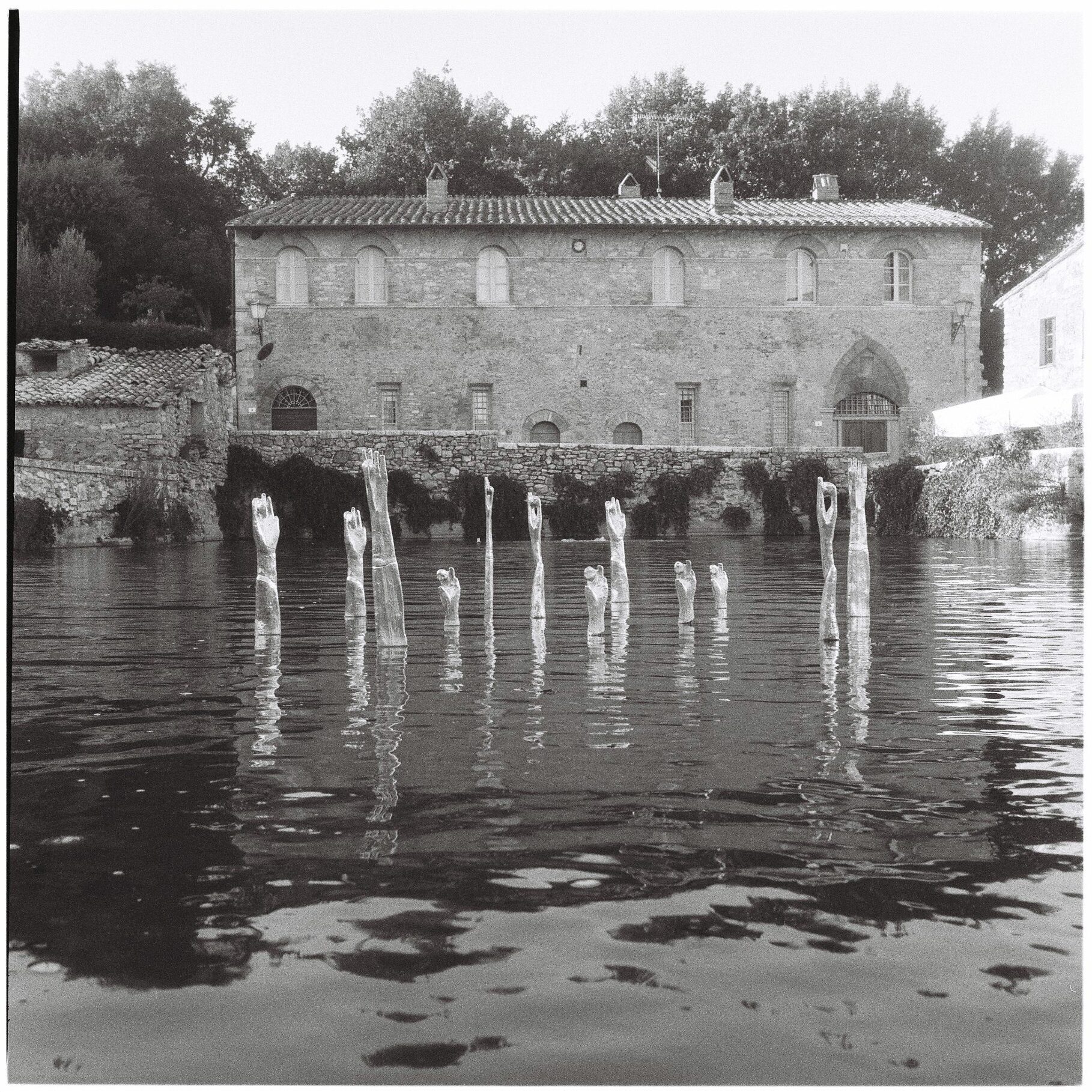
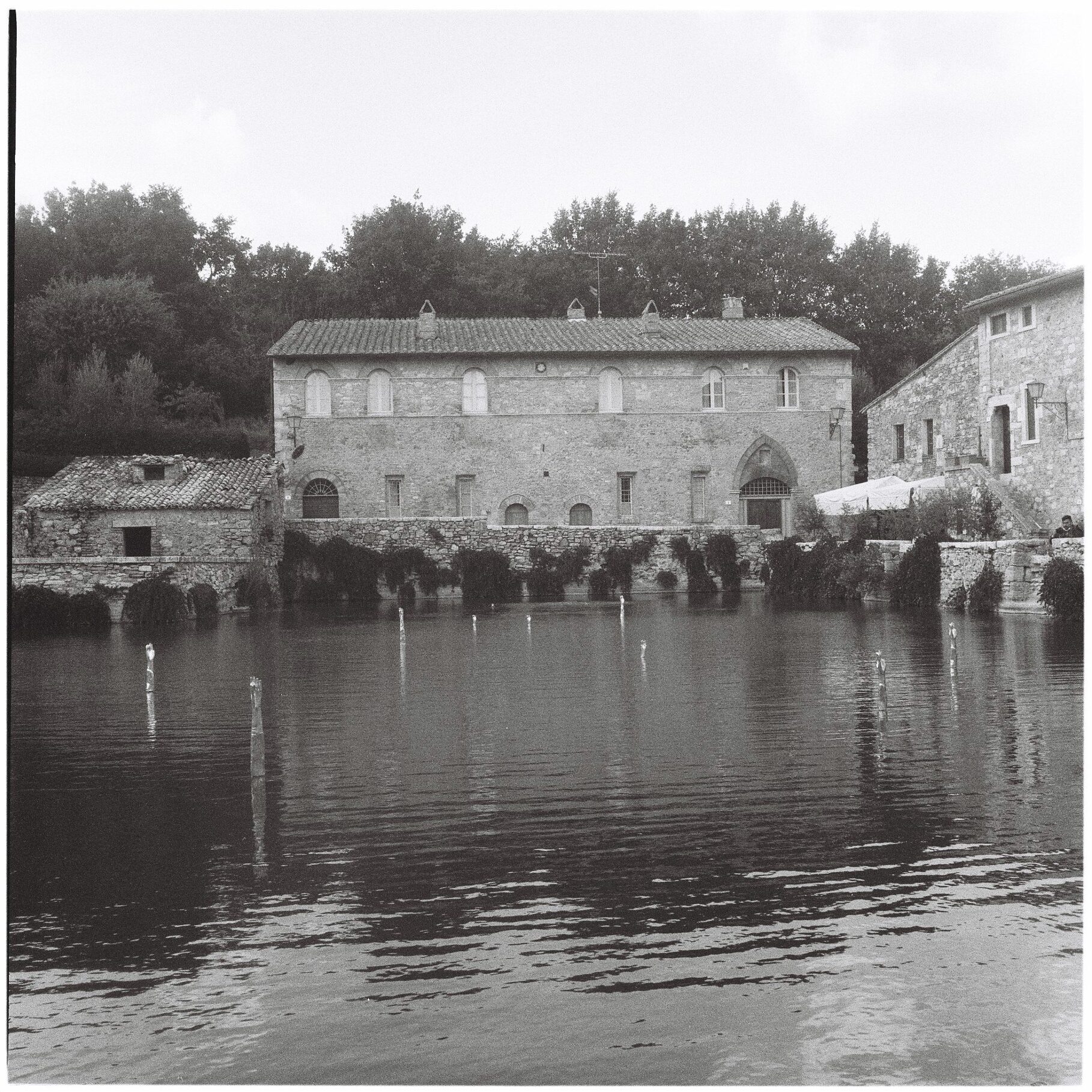
The shapes of the antique ex-votos, originally thrown into a French spring by the Gauls tribe, were covered by Namsal Siedlecki with the silver of coins recovered from the Trevi Fountain. The resulting sculptures acquired their final structure in a tank for galvanic deposition. Guided by Tarkovskij’s use of aquatic elements, often associated to the passage of time, we installed this particular series of artworks inside the rectangular tank of the Baths of St. Catherine. Here too, the leitmotif of water connects distant temporalities.
The shapes of the antique ex-votos, originally thrown into a French spring by the Gauls tribe, were covered by Namsal Siedlecki with the silver of coins recovered from the Trevi Fountain. The resulting sculptures acquired their final structure in a tank for galvanic deposition. Guided by Tarkovskij’s use of aquatic elements, often associated to the passage of time, we installed this particular series of artworks inside the rectangular tank of the Baths of St. Catherine. Here too, the leitmotif of water connects distant temporalities.
The shapes of the antique ex-votos, originally thrown into a French spring by the Gauls tribe, were covered by Namsal Siedlecki with the silver of coins recovered from the Trevi Fountain. The resulting sculptures acquired their final structure in a tank for galvanic deposition. Guided by Tarkovskij’s use of aquatic elements, often associated to the passage of time, we installed this particular series of artworks inside the rectangular tank of the Baths of St. Catherine. Here too, the leitmotif of water connects distant temporalities.
The artworks have been documented by framing the places in Piazza delle Sorgenti where Andrej Tarkovskij set up the equipment used to shoot the scenes of Nostalghia staged in this location: the slow tracking shot under the portico and beside the pool, the continuous take inside it. These images show the other side of the film production, they want to be its reverse shot. In the spaces between the artworks we search for the reflection of the director that, 38 years ago, in these very same places, created his movie.
The artworks have been documented by framing the places in Piazza delle Sorgenti where Andrej Tarkovskij set up the equipment used to shoot the scenes of Nostalghia staged in this location: the slow tracking shot under the portico and beside the pool, the continuous take inside it. These images show the other side of the film production, they want to be its reverse shot. In the spaces between the artworks we search for the reflection of the director that, 38 years ago, in these very same places, created his movie.
The artworks have been documented by framing the places in Piazza delle Sorgenti where Andrej Tarkovskij set up the equipment used to shoot the scenes of Nostalghia staged in this location: the slow tracking shot under the portico and beside the pool, the continuous take inside it. These images show the other side of the film production, they want to be its reverse shot. In the spaces between the artworks we search for the reflection of the director that, 38 years ago, in these very same places, created his movie.
Diary, 07/10: “We had planned an early morning install, but a strong storm prevented this. We got in touch with the City of San Quirico d’Orcia to ask if it would be possible to shoot on the morning of 10/08, giving us a chance to photograph the works in the baths with the light of dawn. The municipal police granted us permission to park both our vehicle and the artist’s assistant’s close to Piazza delle Sorgenti, an area usually closed to traffic, on both 10/07 and 10/08. We get to Bagno Vignoni around 10 am. The installation of the works in the Santa Caterina Baths proceeds smoothly. The Curator, Photographer, Artist and his Assistant dive in the Baths in order to better manage the positioning of the works. The early morning is distinguished by a mid-strong wind that ripples the Bath’s water. In the afternoon the sky is partially covered, with flashes of sun. The photo shoot lasts until 1.30 am, interrupted only by lunch and dinner, both consumed at Osteria del Leone, a few steps away from the Baths, and by a snack/aperitif before lunch. The Artist, Curator and Photographer spend the night at Casa Ginestra, about a hundred meters away from the Baths, so that they can shoot in the early morning, when the steam is clearly visible, and move the works for another photo shoot by mid-morning”
Diary, 07/10: “We had planned an early morning install, but a strong storm prevented this. We got in touch with the City of San Quirico d’Orcia to ask if it would be possible to shoot on the morning of 10/08, giving us a chance to photograph the works in the baths with the light of dawn. The municipal police granted us permission to park both our vehicle and the artist’s assistant’s close to Piazza delle Sorgenti, an area usually closed to traffic, on both 10/07 and 10/08. We get to Bagno Vignoni around 10 am. The installation of the works in the Santa Caterina Baths proceeds smoothly. The Curator, Photographer, Artist and his Assistant dive in the Baths in order to better manage the positioning of the works. The early morning is distinguished by a mid-strong wind that ripples the Bath’s water. In the afternoon the sky is partially covered, with flashes of sun. The photo shoot lasts until 1.30 am, interrupted only by lunch and dinner, both consumed at Osteria del Leone, a few steps away from the Baths, and by a snack/aperitif before lunch. The Artist, Curator and Photographer spend the night at Casa Ginestra, about a hundred meters away from the Baths, so that they can shoot in the early morning, when the steam is clearly visible, and move the works for another photo shoot by mid-morning”
Diary, 07/10: “We had planned an early morning install, but a strong storm prevented this. We got in touch with the City of San Quirico d’Orcia to ask if it would be possible to shoot on the morning of 10/08, giving us a chance to photograph the works in the baths with the light of dawn. The municipal police granted us permission to park both our vehicle and the artist’s assistant’s close to Piazza delle Sorgenti, an area usually closed to traffic, on both 10/07 and 10/08. We get to Bagno Vignoni around 10 am. The installation of the works in the Santa Caterina Baths proceeds smoothly. The Curator, Photographer, Artist and his Assistant dive in the Baths in order to better manage the positioning of the works. The early morning is distinguished by a mid-strong wind that ripples the Bath’s water. In the afternoon the sky is partially covered, with flashes of sun. The photo shoot lasts until 1.30 am, interrupted only by lunch and dinner, both consumed at Osteria del Leone, a few steps away from the Baths, and by a snack/aperitif before lunch. The Artist, Curator and Photographer spend the night at Casa Ginestra, about a hundred meters away from the Baths, so that they can shoot in the early morning, when the steam is clearly visible, and move the works for another photo shoot by mid-morning”
Guided by Tarkovskij’s use of aquatic elements, often associated to the passage of time, we installed this particular series of artworks inside the rectangular tank of the Baths of St. Catherine. Here, the leitmotif of water connects distant temporalities: the shapes of the antique ex-votos, originally thrown into a French spring by the Gauls tribe, were covered by Namsal Siedlecki with the silver of coins recovered from the Trevi Fountain. The resulting sculptures acquired their final structure in a tank for galvanic deposition.
Guided by Tarkovskij’s use of aquatic elements, often associated to the passage of time, we installed this particular series of artworks inside the rectangular tank of the Baths of St. Catherine. Here, the leitmotif of water connects distant temporalities: the shapes of the antique ex-votos, originally thrown into a French spring by the Gauls tribe, were covered by Namsal Siedlecki with the silver of coins recovered from the Trevi Fountain. The resulting sculptures acquired their final structure in a tank for galvanic deposition.
Guided by Tarkovskij’s use of aquatic elements, often associated to the passage of time, we installed this particular series of artworks inside the rectangular tank of the Baths of St. Catherine. Here, the leitmotif of water connects distant temporalities: the shapes of the antique ex-votos, originally thrown into a French spring by the Gauls tribe, were covered by Namsal Siedlecki with the silver of coins recovered from the Trevi Fountain. The resulting sculptures acquired their final structure in a tank for galvanic deposition.
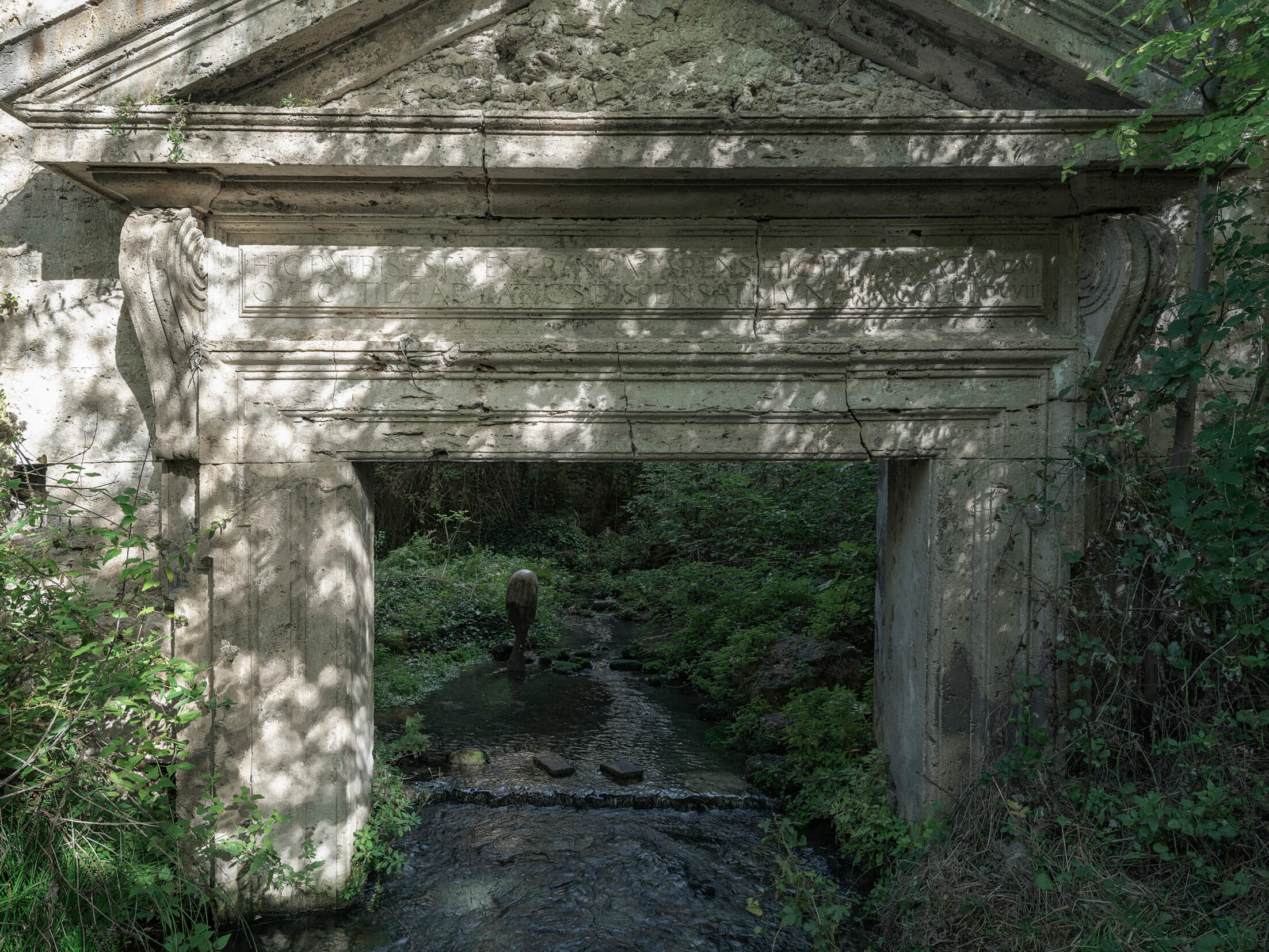
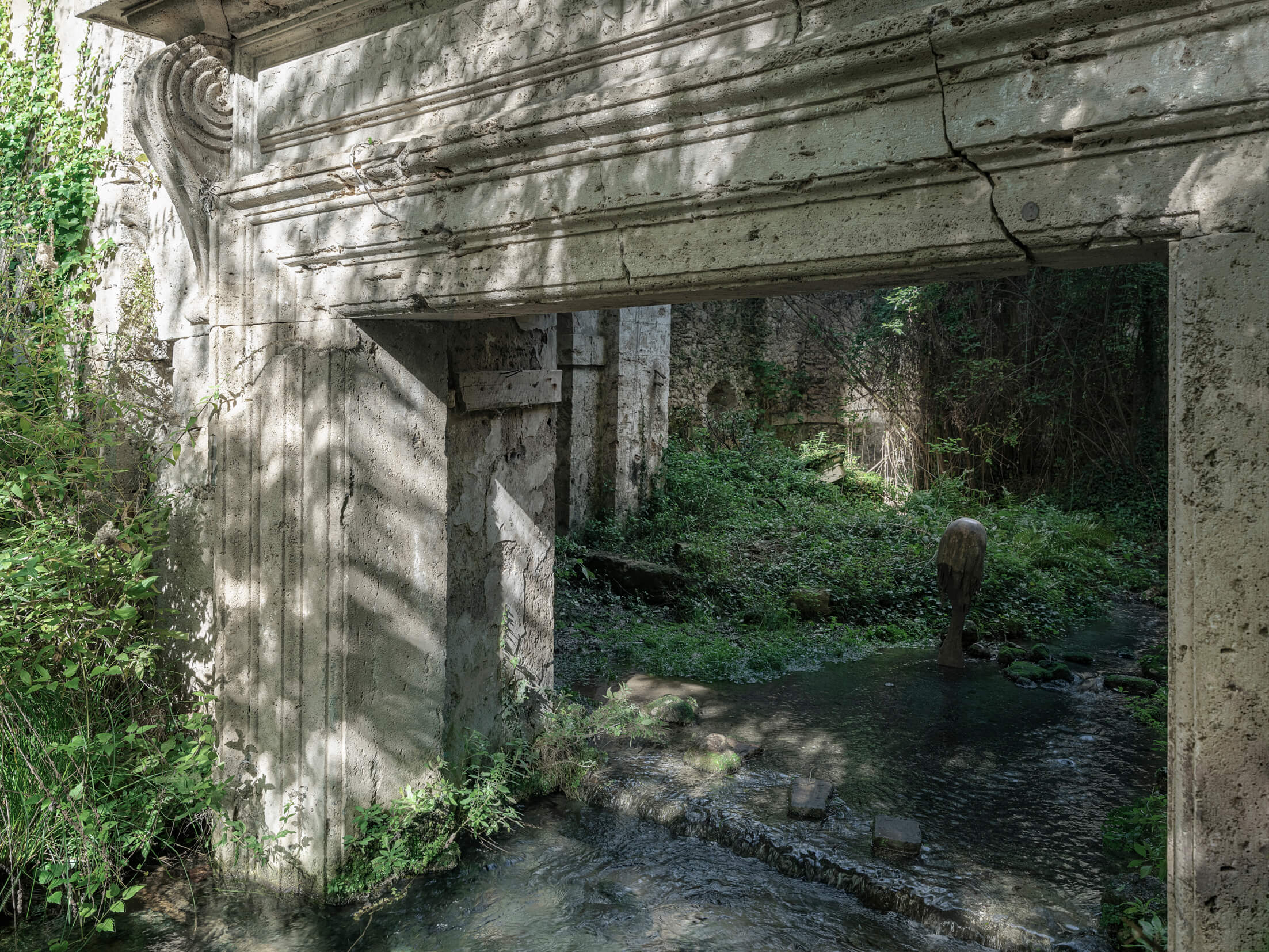
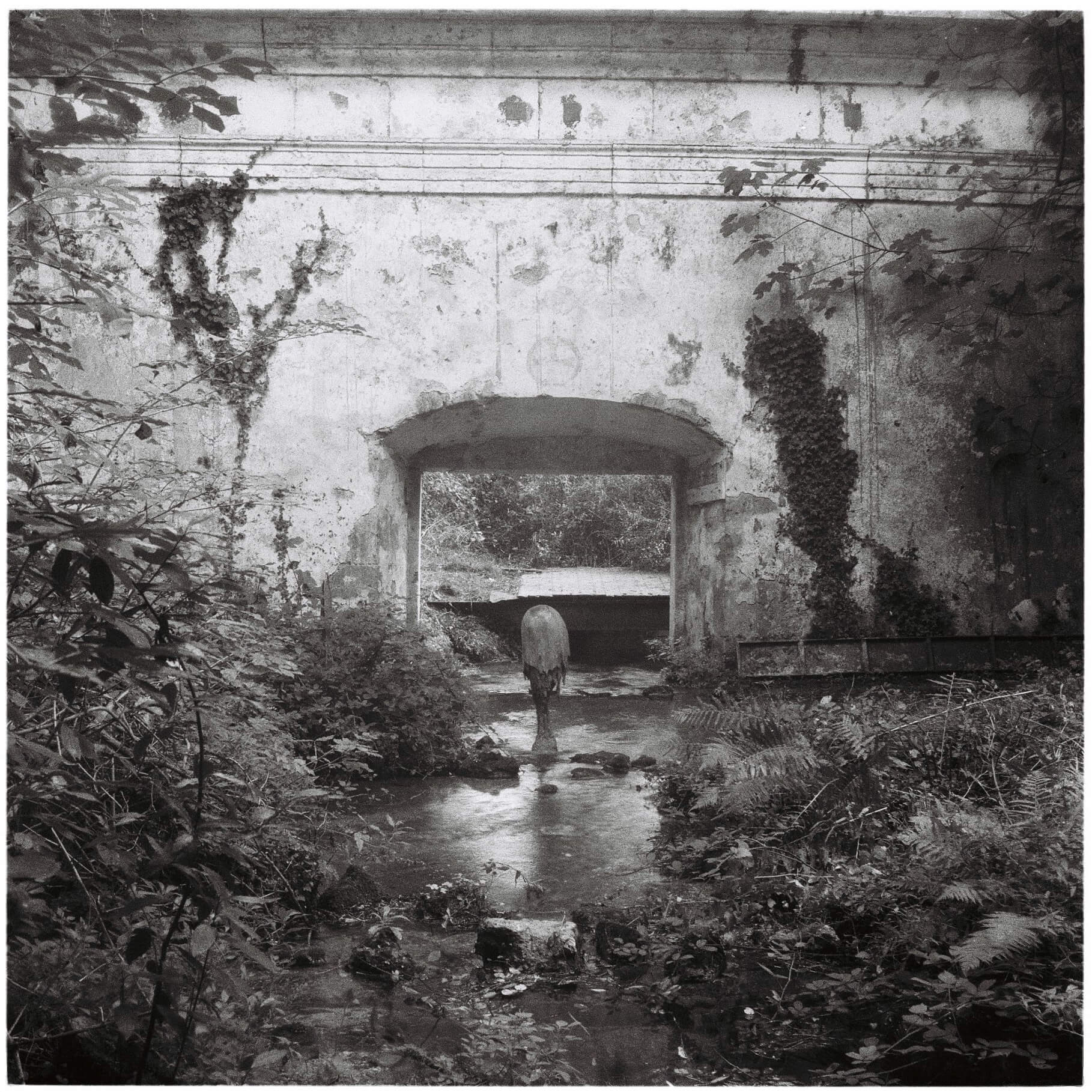

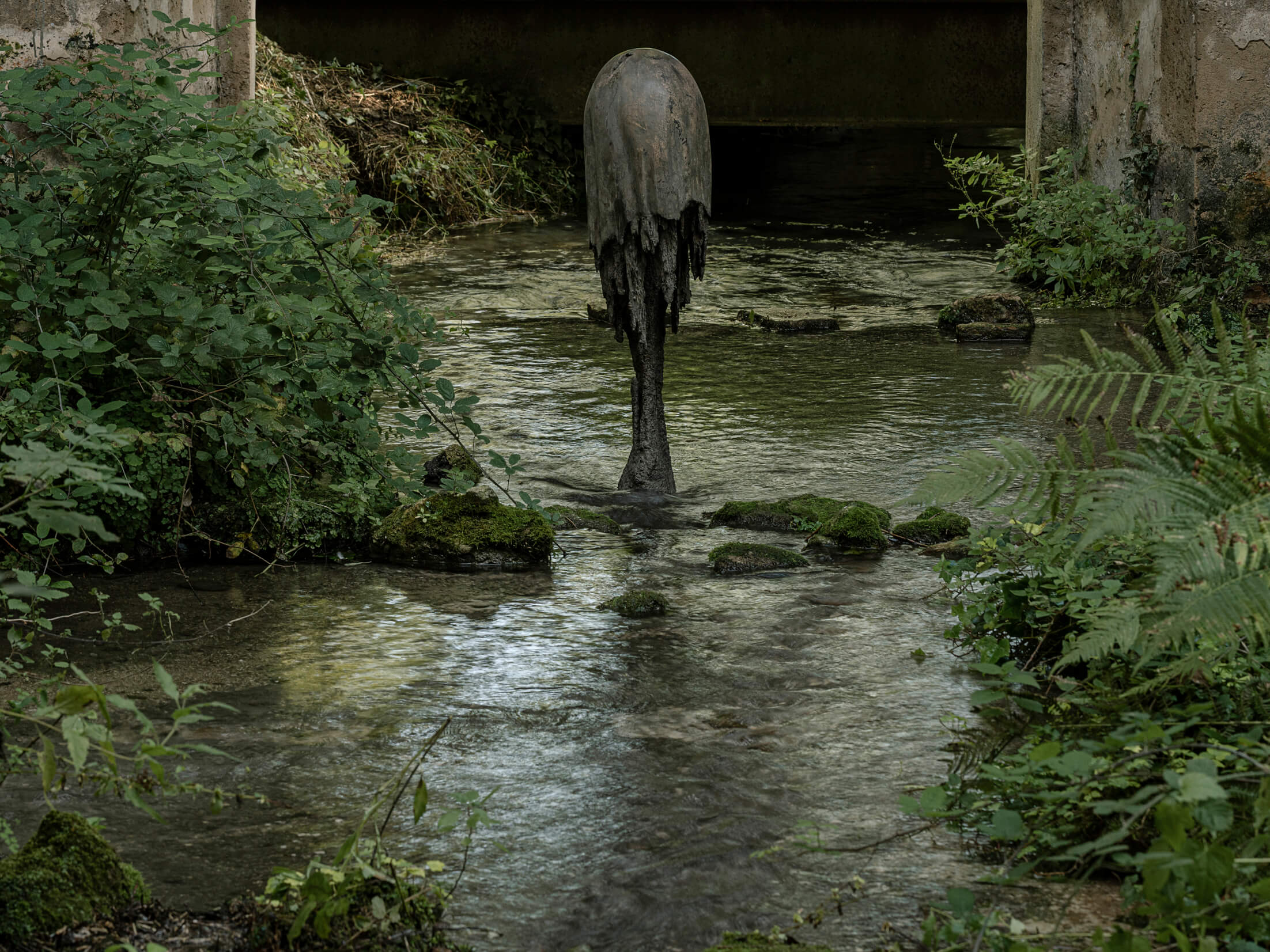
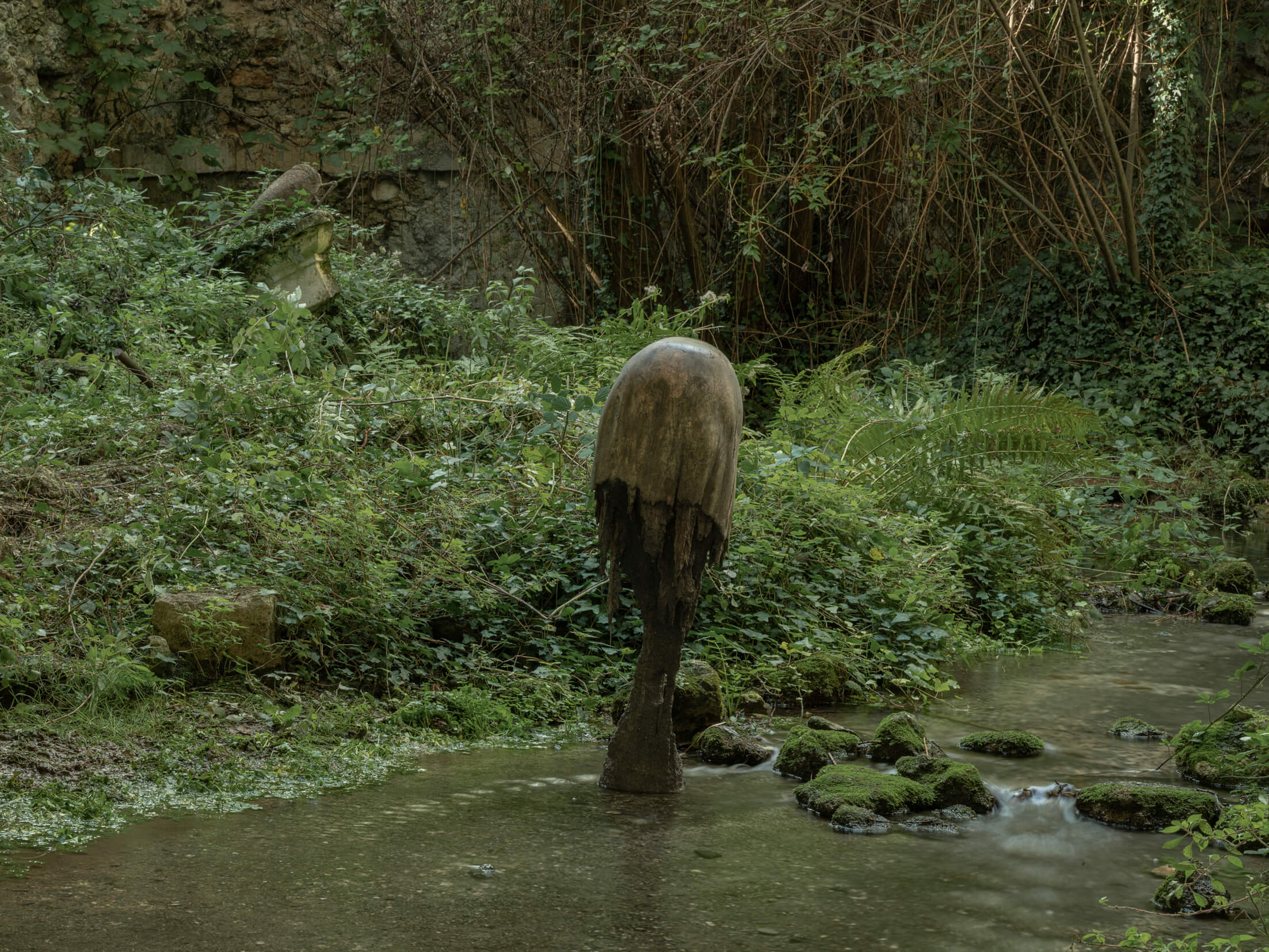


















The signs left by the passage of time in relation to the aquatic element and the ways in which nature intervenes on the actions of the human being by modifying them are some of the themes that we find in the practice of Giorgio Andreotta Calò and that are reflected in the essence of the sunken Church of Santa Maria in Vittorino: an hourglass that marks the passing of its own time but that cannot be turned upside down.
The signs left by the passage of time in relation to the aquatic element and the ways in which nature intervenes on the actions of the human being by modifying them are some of the themes that we find in the practice of Giorgio Andreotta Calò and that are reflected in the essence of the sunken Church of Santa Maria in Vittorino: an hourglass that marks the passing of its own time but that cannot be turned upside down.
The signs left by the passage of time in relation to the aquatic element and the ways in which nature intervenes on the actions of the human being by modifying them are some of the themes that we find in the practice of Giorgio Andreotta Calò and that are reflected in the essence of the sunken Church of Santa Maria in Vittorino: an hourglass that marks the passing of its own time but that cannot be turned upside down.
The church was built between the 14th and 15th centuries on the remains of an ancient pagan temple, on the very spot where San Vittorino da Amiterno was martyred, and later enlarged in 1613. In the 19th century the structure began to sink. An underground spring emerged from the floor, currently flowing only 90 cm below the ground level. Neglected for more than a century, the 1979 Norcia earthquake caused the collapse of the church’s roof. At the moment, the building is abandoned and continues to sink. This place, the water and the ruins, the broken and submerged architraves, this place is the paradigm of what happens when you insist on building a church on an ancient pagan site.
The church was built between the 14th and 15th centuries on the remains of an ancient pagan temple, on the very spot where San Vittorino da Amiterno was martyred, and later enlarged in 1613. In the 19th century the structure began to sink. An underground spring emerged from the floor, currently flowing only 90 cm below the ground level. Neglected for more than a century, the 1979 Norcia earthquake caused the collapse of the church’s roof. At the moment, the building is abandoned and continues to sink. This place, the water and the ruins, the broken and submerged architraves, this place is the paradigm of what happens when you insist on building a church on an ancient pagan site.
The church was built between the 14th and 15th centuries on the remains of an ancient pagan temple, on the very spot where San Vittorino da Amiterno was martyred, and later enlarged in 1613. In the 19th century the structure began to sink. An underground spring emerged from the floor, currently flowing only 90 cm below the ground level. Neglected for more than a century, the 1979 Norcia earthquake caused the collapse of the church’s roof. At the moment, the building is abandoned and continues to sink. This place, the water and the ruins, the broken and submerged architraves, this place is the paradigm of what happens when you insist on building a church on an ancient pagan site.
Medusa, part of a series of sculptures that the artist started in 2013, begun with the removal of a pole from the Venice lagoon: an anthropic element that has undergone a metamorphosis triggered by natural and atmospheric factors, eroded in its center by the constant motion of water caused by the tides. The artist’s manual work integrates with the actions of Nature in the creation of an artwork that resembles one of the most ancient creatures of the seas. In the sculpture Pinna Nobilis, the two symmetrical valves of the shell are joined to the elements resulting from its casting process: the same metal casting channels and the “embouchure” that allowed the creation of the piece have become the support and base of the finished artwork. The interaction between anthropic intervention and natural processes visible in the final formalization of the work, can be further traced in its origin: the construction of the MoSE (Modulo Sperimentale Elettromeccanico – Electromechanical Experimental Module), the large dam of mobile gates aimed at opposing the high tide in Venice, paradoxically, has favored the repopulating of Pinna Nobilis in the Venetian lagoon, an endemic species of the Mediterranean usually threatened by human activity.
Medusa, part of a series of sculptures that the artist started in 2013, begun with the removal of a pole from the Venice lagoon: an anthropic element that has undergone a metamorphosis triggered by natural and atmospheric factors, eroded in its center by the constant motion of water caused by the tides. The artist’s manual work integrates with the actions of Nature in the creation of an artwork that resembles one of the most ancient creatures of the seas. In the sculpture Pinna Nobilis, the two symmetrical valves of the shell are joined to the elements resulting from its casting process: the same metal casting channels and the “embouchure” that allowed the creation of the piece have become the support and base of the finished artwork. The interaction between anthropic intervention and natural processes visible in the final formalization of the work, can be further traced in its origin: the construction of the MoSE (Modulo Sperimentale Elettromeccanico – Electromechanical Experimental Module), the large dam of mobile gates aimed at opposing the high tide in Venice, paradoxically, has favored the repopulating of Pinna Nobilis in the Venetian lagoon, an endemic species of the Mediterranean usually threatened by human activity.
Medusa, part of a series of sculptures that the artist started in 2013, begun with the removal of a pole from the Venice lagoon: an anthropic element that has undergone a metamorphosis triggered by natural and atmospheric factors, eroded in its center by the constant motion of water caused by the tides. The artist’s manual work integrates with the actions of Nature in the creation of an artwork that resembles one of the most ancient creatures of the seas. In the sculpture Pinna Nobilis, the two symmetrical valves of the shell are joined to the elements resulting from its casting process: the same metal casting channels and the “embouchure” that allowed the creation of the piece have become the support and base of the finished artwork. The interaction between anthropic intervention and natural processes visible in the final formalization of the work, can be further traced in its origin: the construction of the MoSE (Modulo Sperimentale Elettromeccanico – Electromechanical Experimental Module), the large dam of mobile gates aimed at opposing the high tide in Venice, paradoxically, has favored the repopulating of Pinna Nobilis in the Venetian lagoon, an endemic species of the Mediterranean usually threatened by human activity.
diary – 08/10/20: “After shooting in the Baths in the early morning, we de-install the works and leave Bagno Vignoni to reach the Submerged Church of Santa Maria in Vittorino, close to Cittaducale, The Curator and Photographer stop by Orvieto, in order to have lunch and buy two pairs of rubber boots, that they will need for the installation of the works in the submerged church that, as the name suggests, is flooded. We get to the location by late afternoon for a walk-through. We spend the night at the bed and breakfast “A casa di mamma”. In the evening we have dinner at Ristorante Arcangelo, the closest establishment, walking distance from the B&B. At the restaurant, since we do not want to interrupt the installation and shooting the next day, we order sandwiches to eat for lunch. 09/10/20: We reach the location after breakfast. The Submerged Church looks very different compared to how it appeared in Trakovskij’s movie and in the images of the location that we had found. The roof debris, covered in ferns, brambles, ivy and nettles, are shattered on what used to be the church’s floor. The structure has collapsed from what we believe to be a quarter of its original height. In the front, the walls are tilted outwards by about 10 degrees. The installation of the works and the photo shoot take place in the best possible way, and carry on until sundown. The rubber boots prove very useful, since to access the church one has to walk through a 40 cm deep puddle of running water, and all the internal spaces of the church are either flooded or covered in mud. After the shooting we place the Artist’s works in their respective crates”
diary – 08/10/20: “After shooting in the Baths in the early morning, we de-install the works and leave Bagno Vignoni to reach the Submerged Church of Santa Maria in Vittorino, close to Cittaducale, The Curator and Photographer stop by Orvieto, in order to have lunch and buy two pairs of rubber boots, that they will need for the installation of the works in the submerged church that, as the name suggests, is flooded. We get to the location by late afternoon for a walk-through. We spend the night at the bed and breakfast “A casa di mamma”. In the evening we have dinner at Ristorante Arcangelo, the closest establishment, walking distance from the B&B. At the restaurant, since we do not want to interrupt the installation and shooting the next day, we order sandwiches to eat for lunch. 09/10/20: We reach the location after breakfast. The Submerged Church looks very different compared to how it appeared in Trakovskij’s movie and in the images of the location that we had found. The roof debris, covered in ferns, brambles, ivy and nettles, are shattered on what used to be the church’s floor. The structure has collapsed from what we believe to be a quarter of its original height. In the front, the walls are tilted outwards by about 10 degrees. The installation of the works and the photo shoot take place in the best possible way, and carry on until sundown. The rubber boots prove very useful, since to access the church one has to walk through a 40 cm deep puddle of running water, and all the internal spaces of the church are either flooded or covered in mud. After the shooting we place the Artist’s works in their respective crates”
diary – 08/10/20: “After shooting in the Baths in the early morning, we de-install the works and leave Bagno Vignoni to reach the Submerged Church of Santa Maria in Vittorino, close to Cittaducale, The Curator and Photographer stop by Orvieto, in order to have lunch and buy two pairs of rubber boots, that they will need for the installation of the works in the submerged church that, as the name suggests, is flooded. We get to the location by late afternoon for a walk-through. We spend the night at the bed and breakfast “A casa di mamma”. In the evening we have dinner at Ristorante Arcangelo, the closest establishment, walking distance from the B&B. At the restaurant, since we do not want to interrupt the installation and shooting the next day, we order sandwiches to eat for lunch. 09/10/20: We reach the location after breakfast. The Submerged Church looks very different compared to how it appeared in Trakovskij’s movie and in the images of the location that we had found. The roof debris, covered in ferns, brambles, ivy and nettles, are shattered on what used to be the church’s floor. The structure has collapsed from what we believe to be a quarter of its original height. In the front, the walls are tilted outwards by about 10 degrees. The installation of the works and the photo shoot take place in the best possible way, and carry on until sundown. The rubber boots prove very useful, since to access the church one has to walk through a 40 cm deep puddle of running water, and all the internal spaces of the church are either flooded or covered in mud. After the shooting we place the Artist’s works in their respective crates”
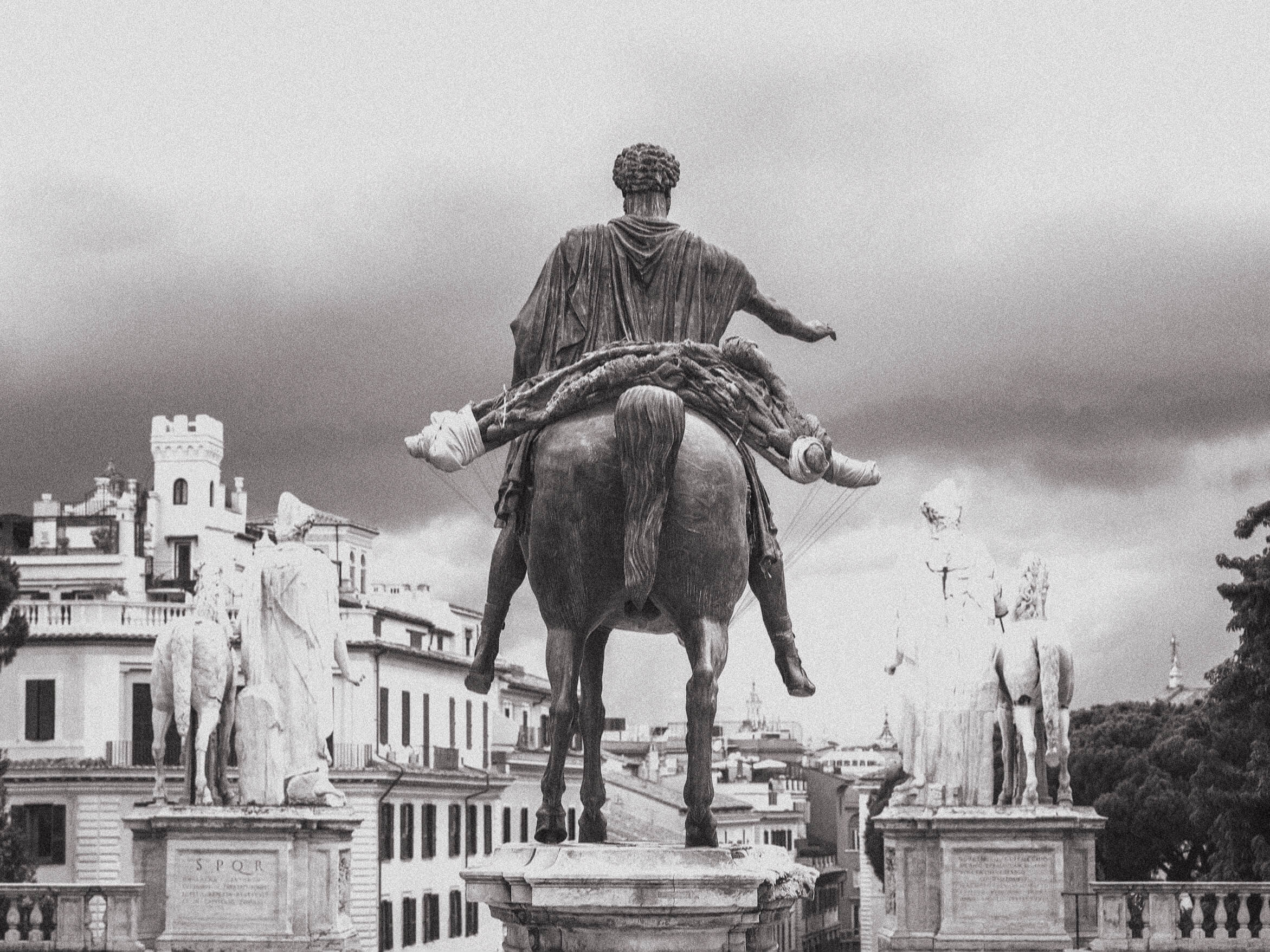
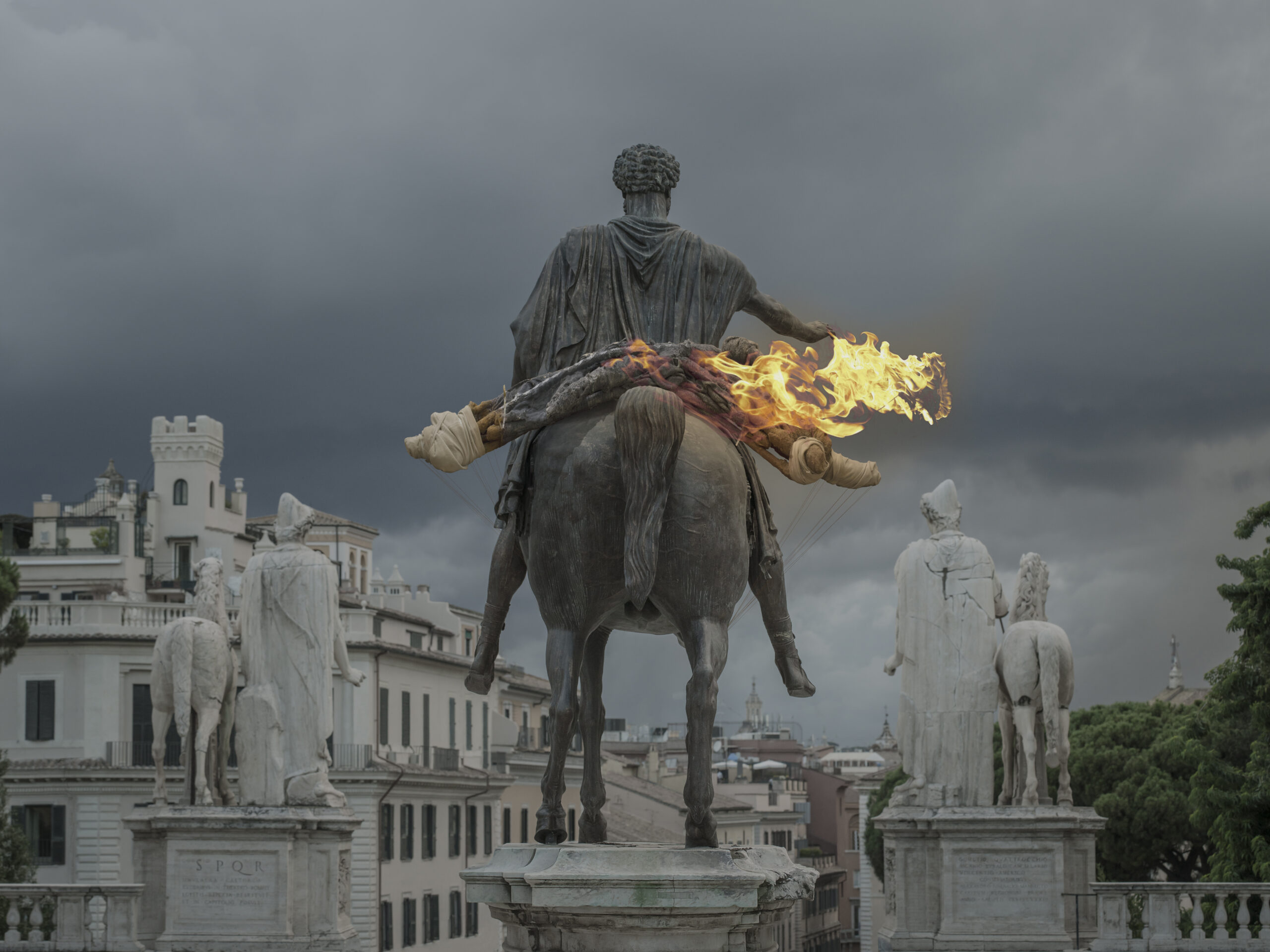



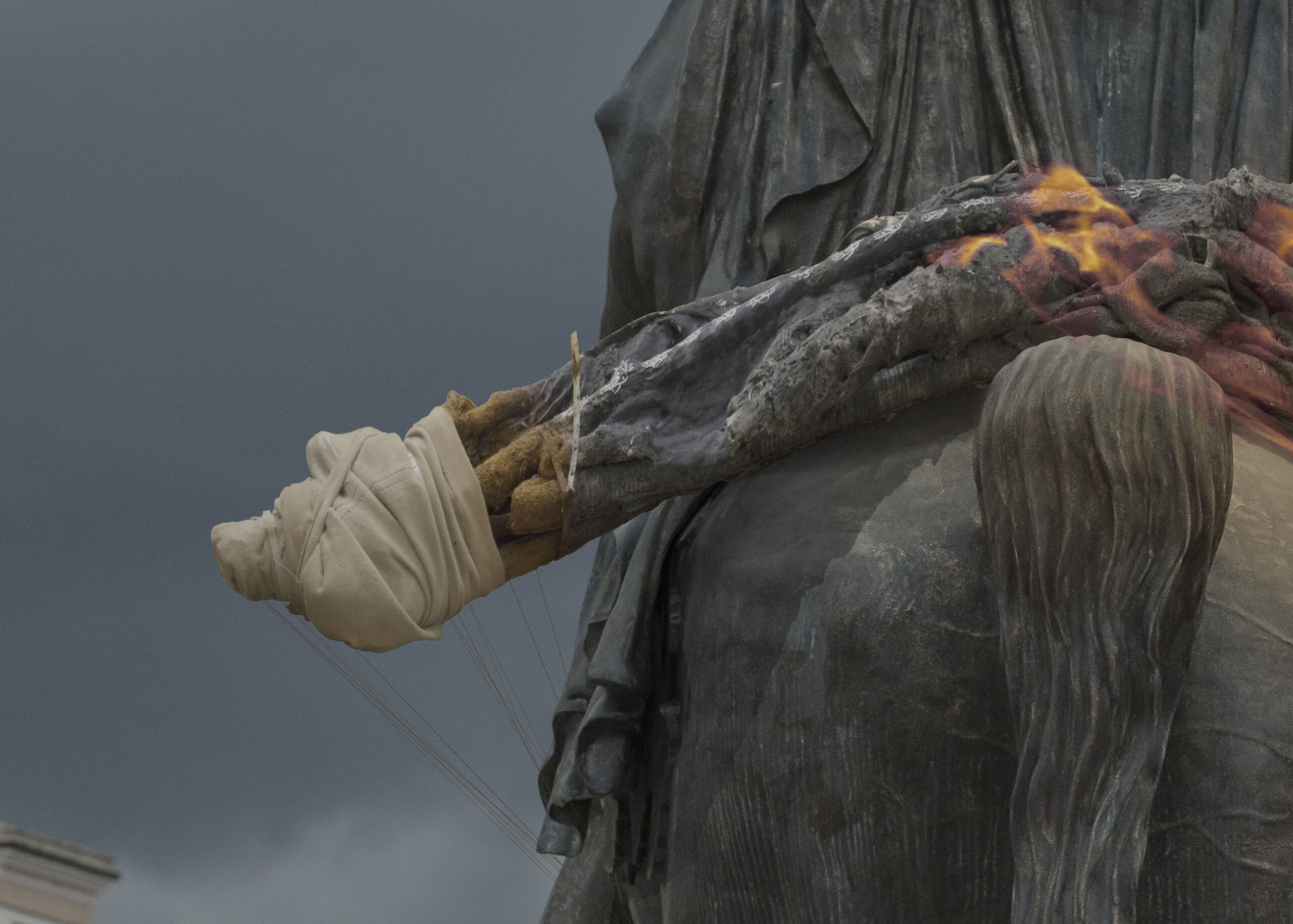
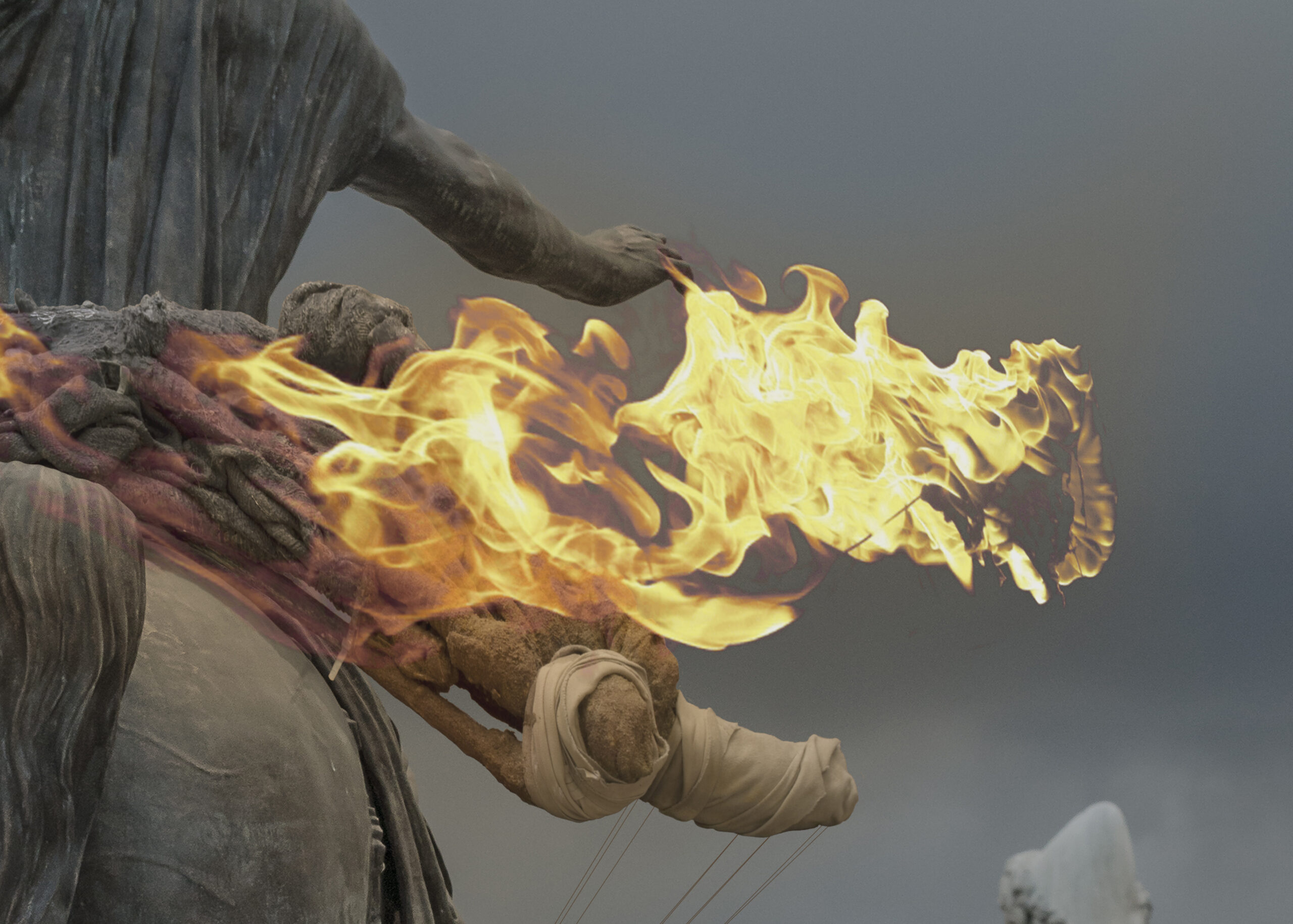
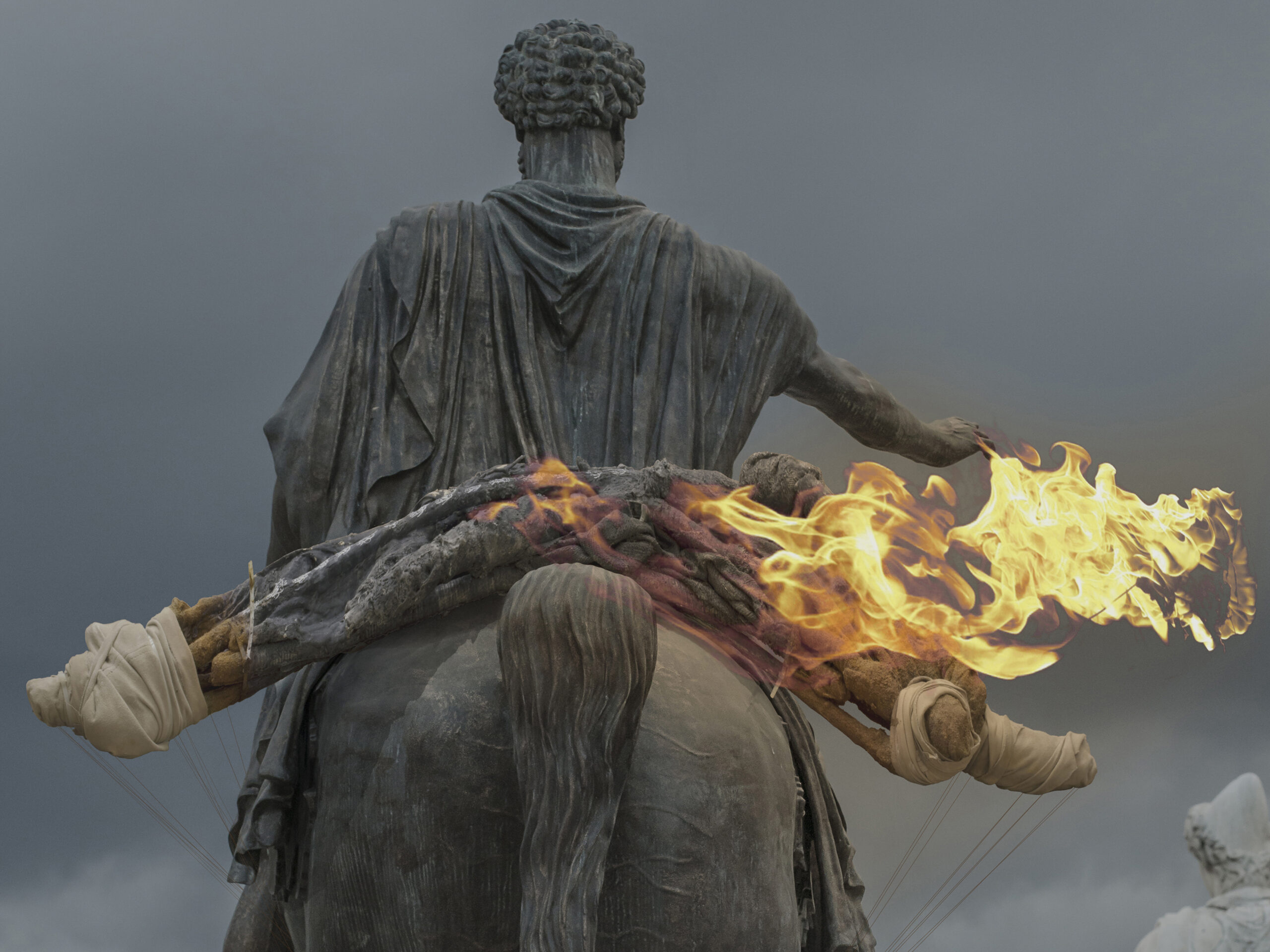
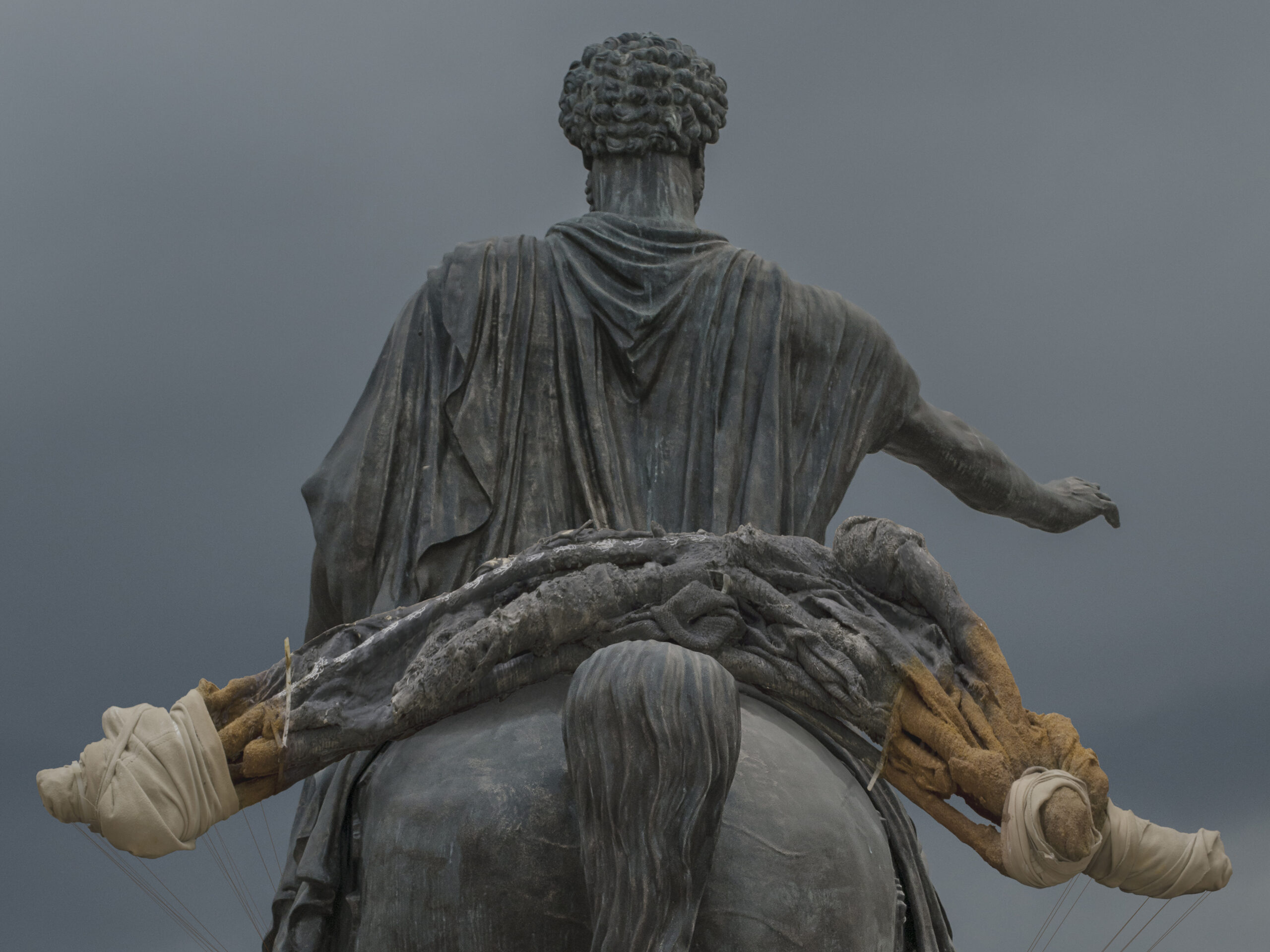
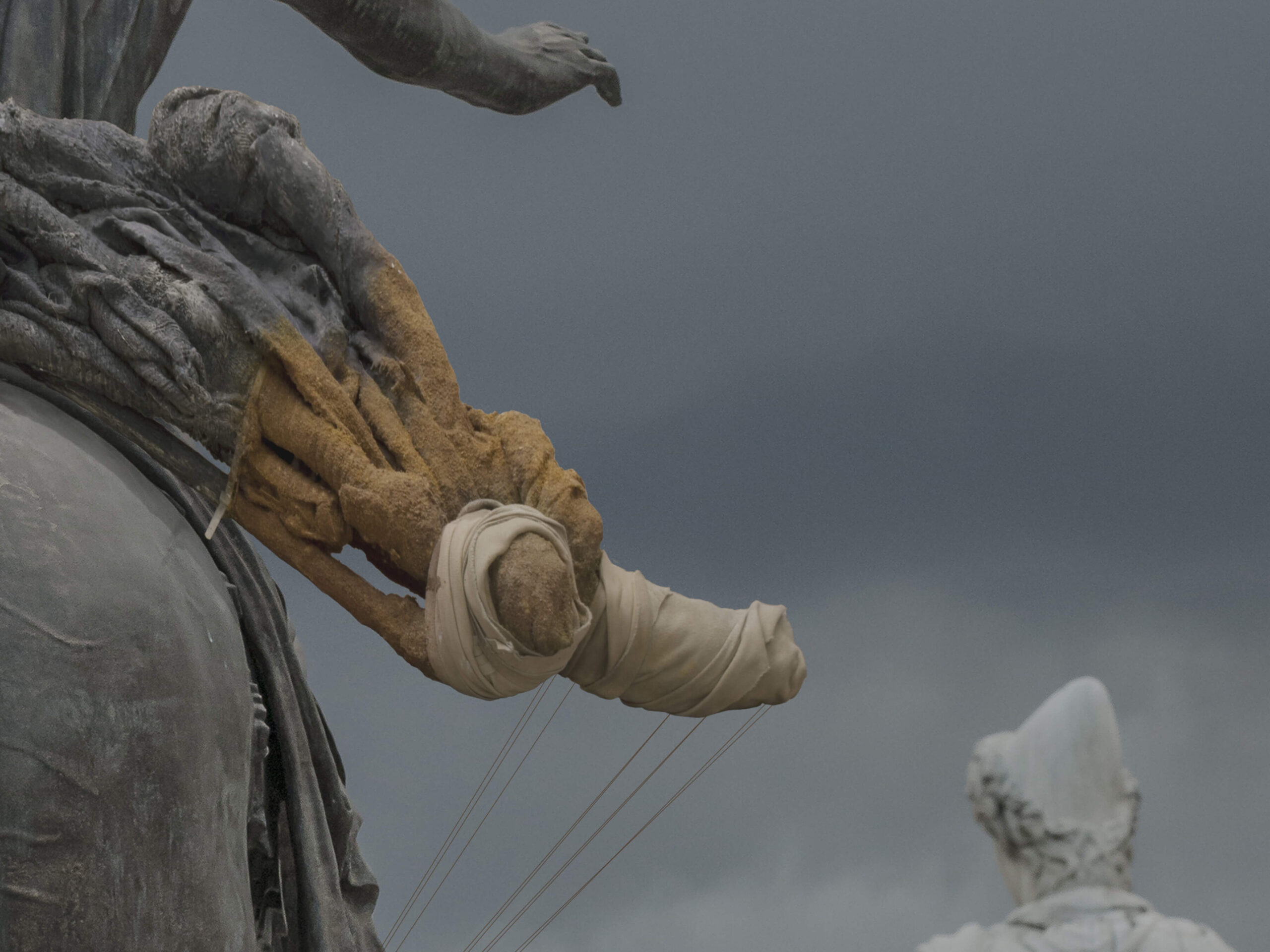
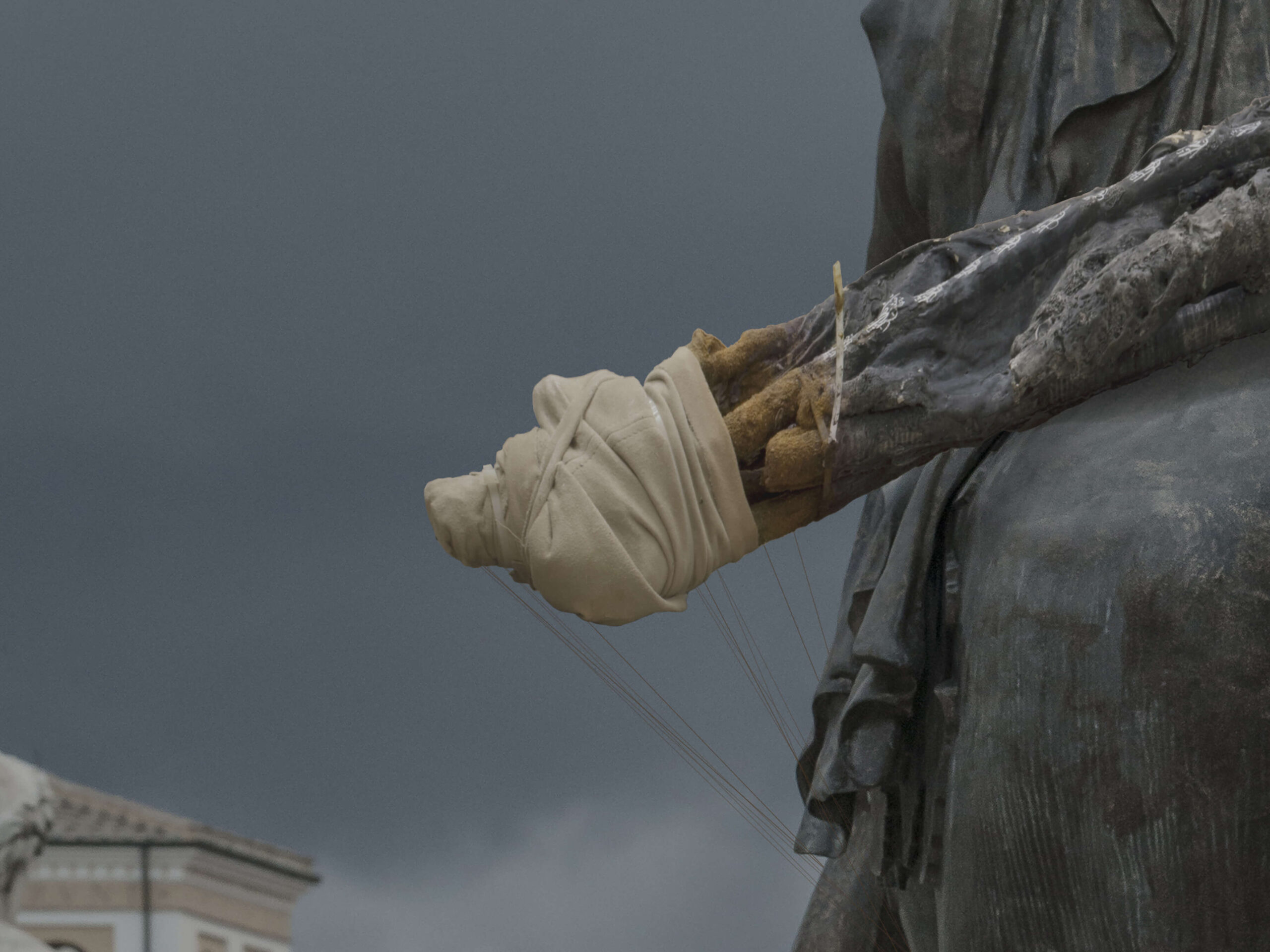
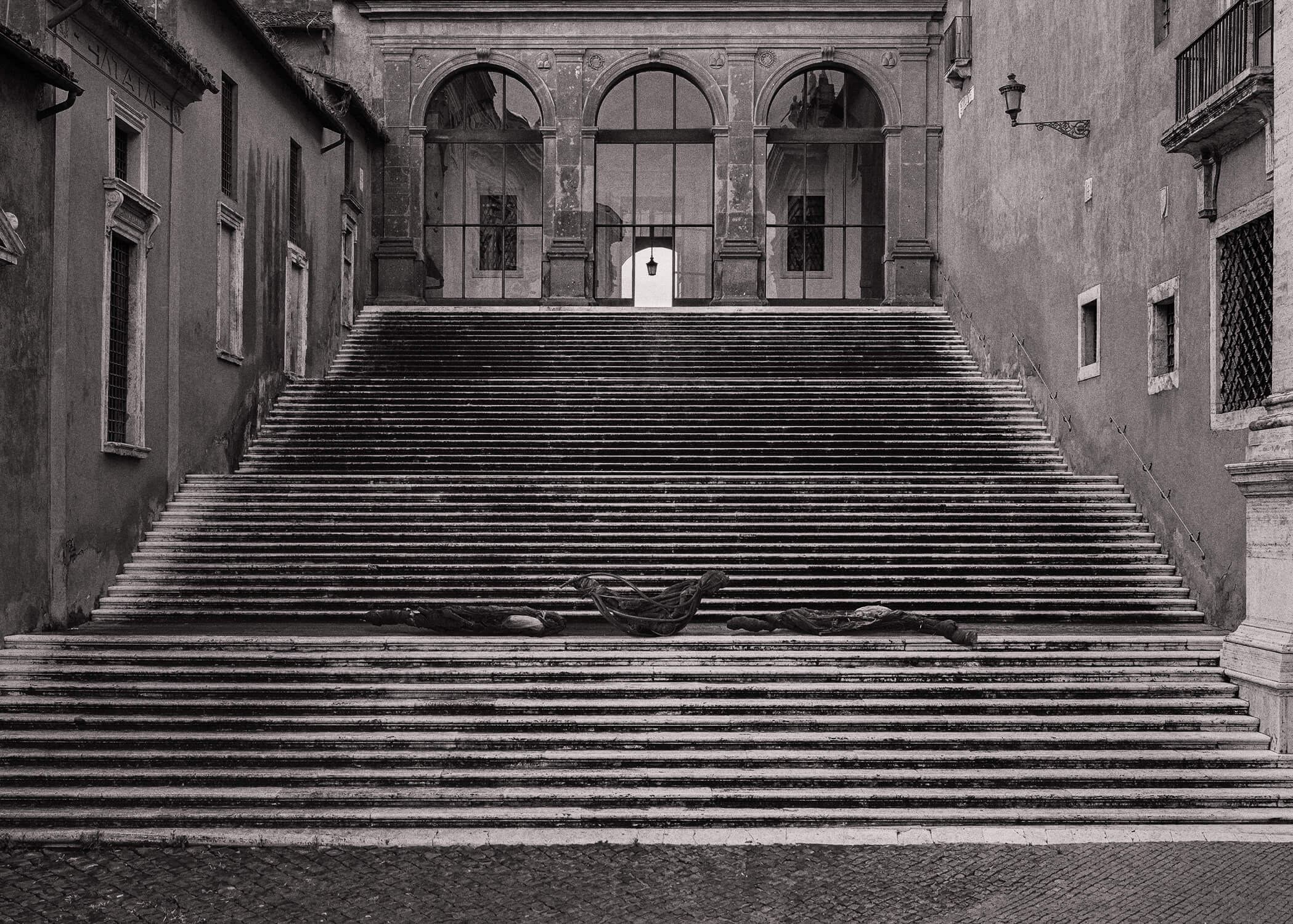
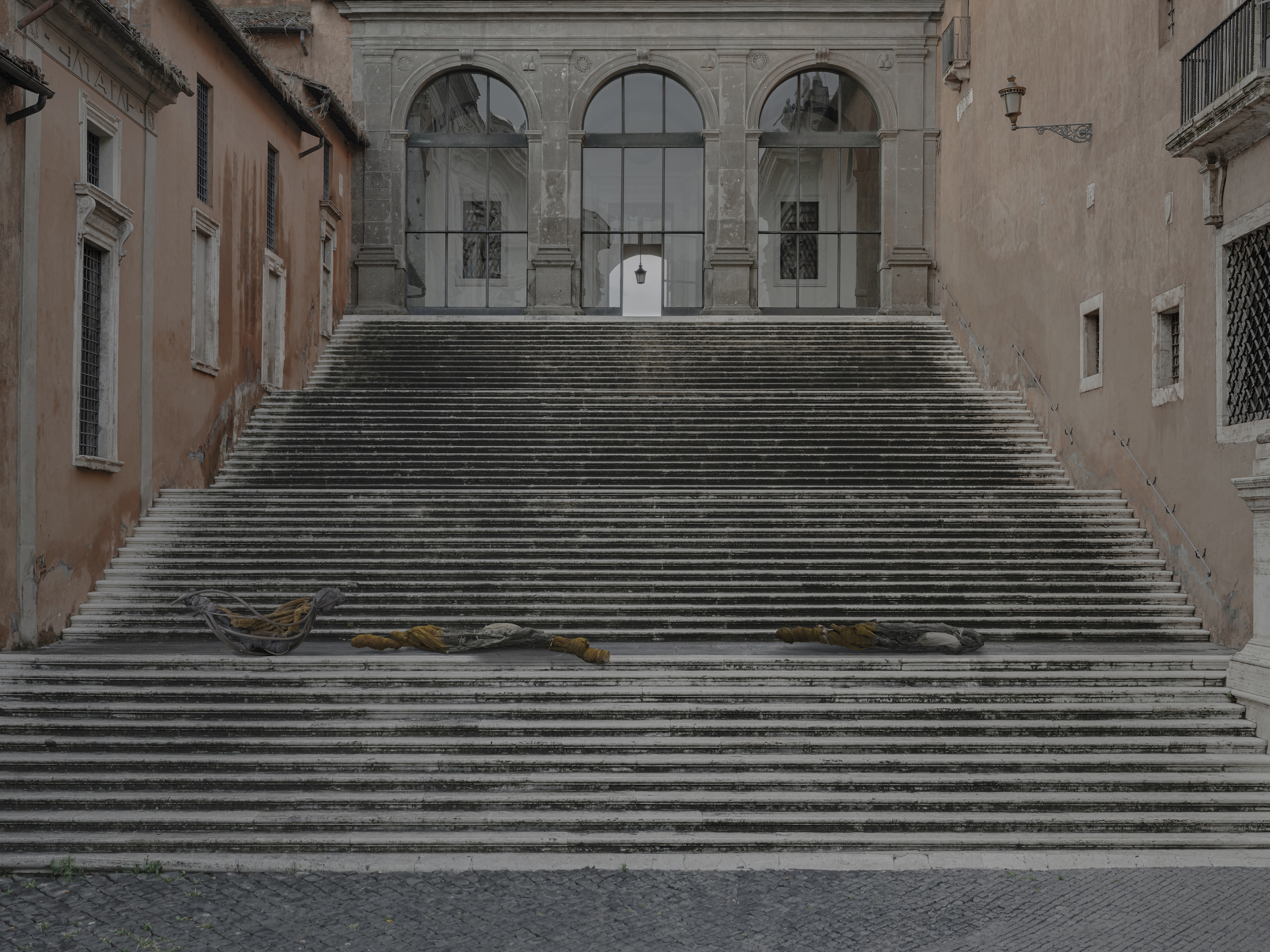
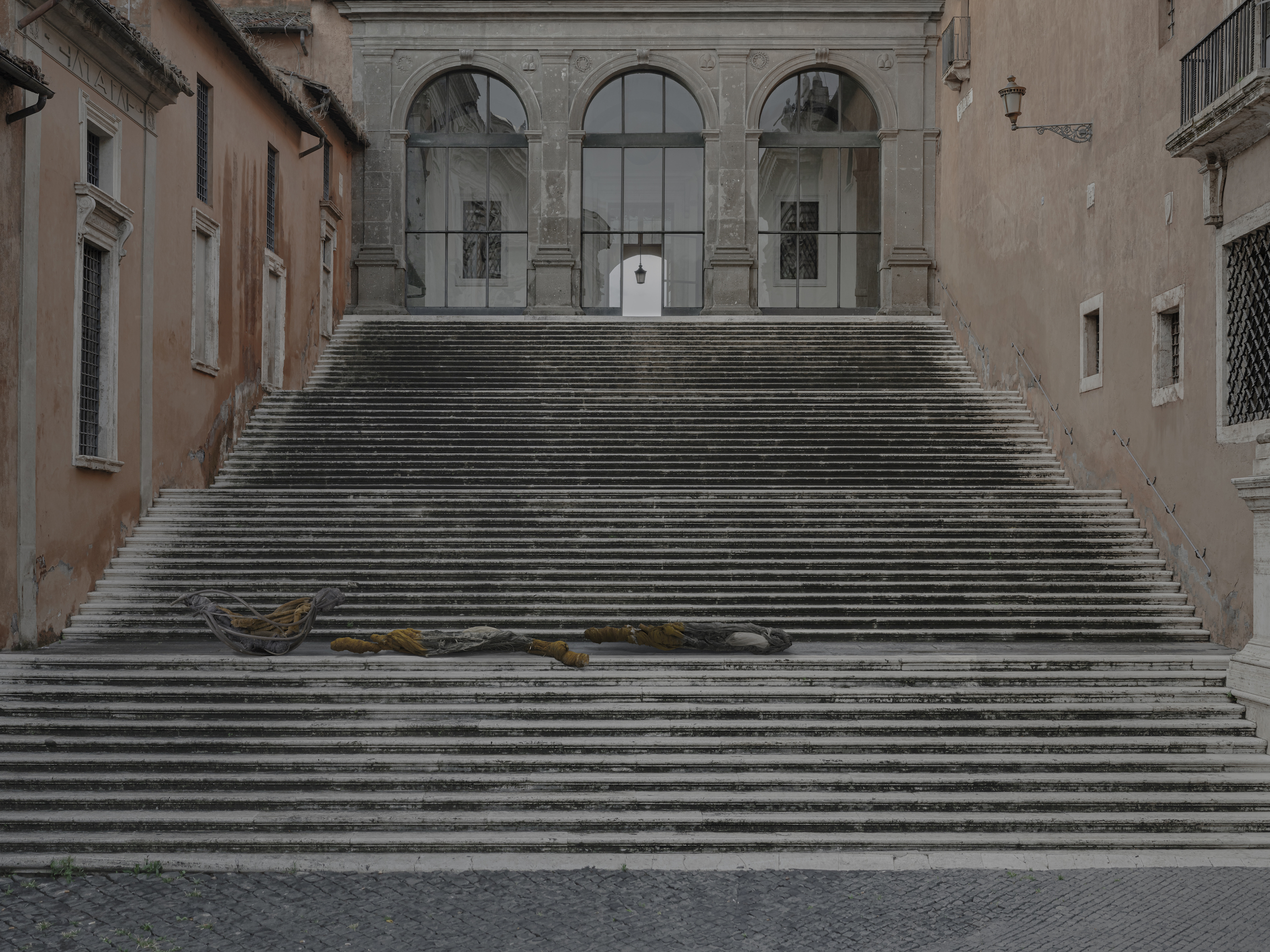
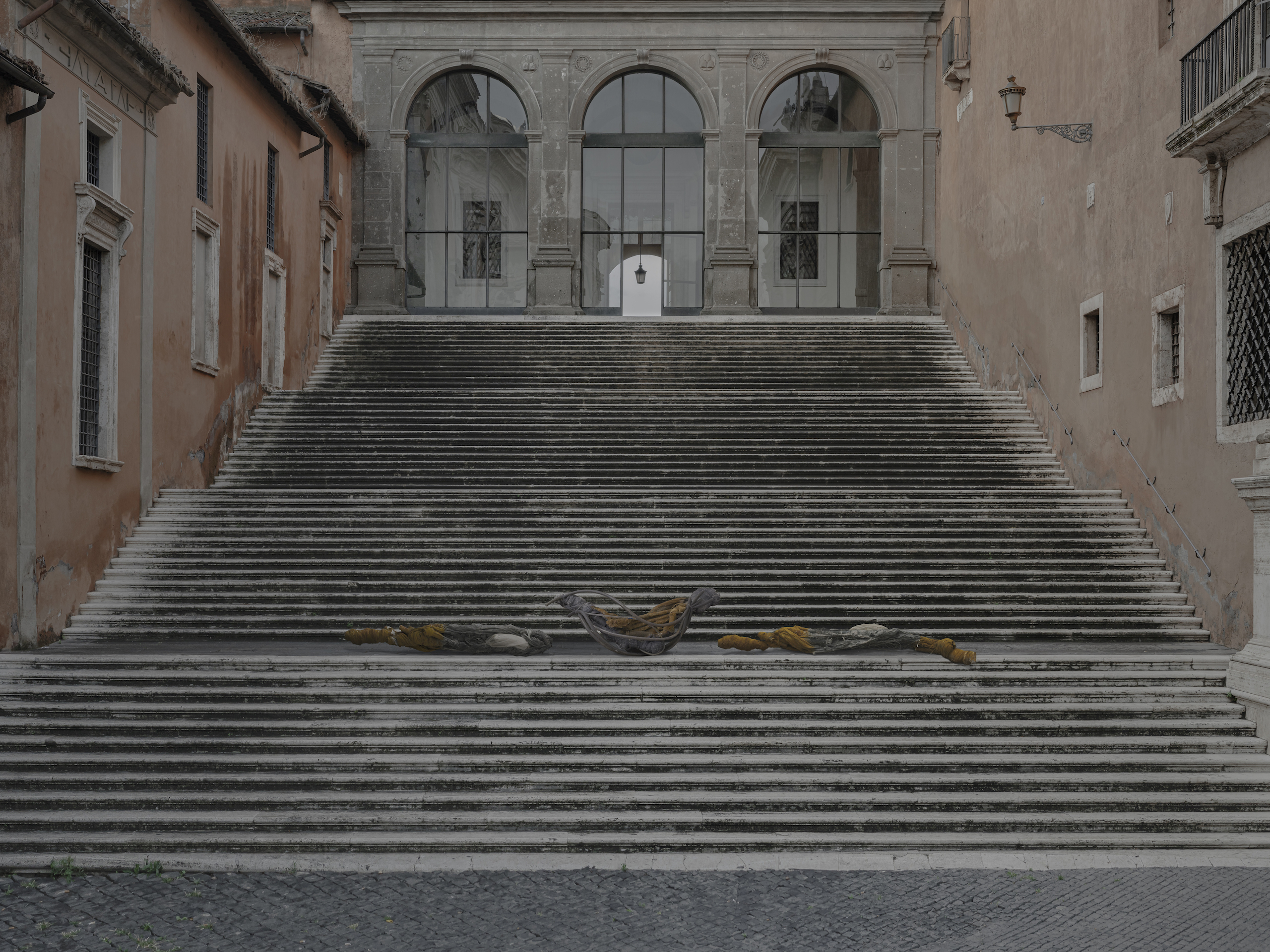
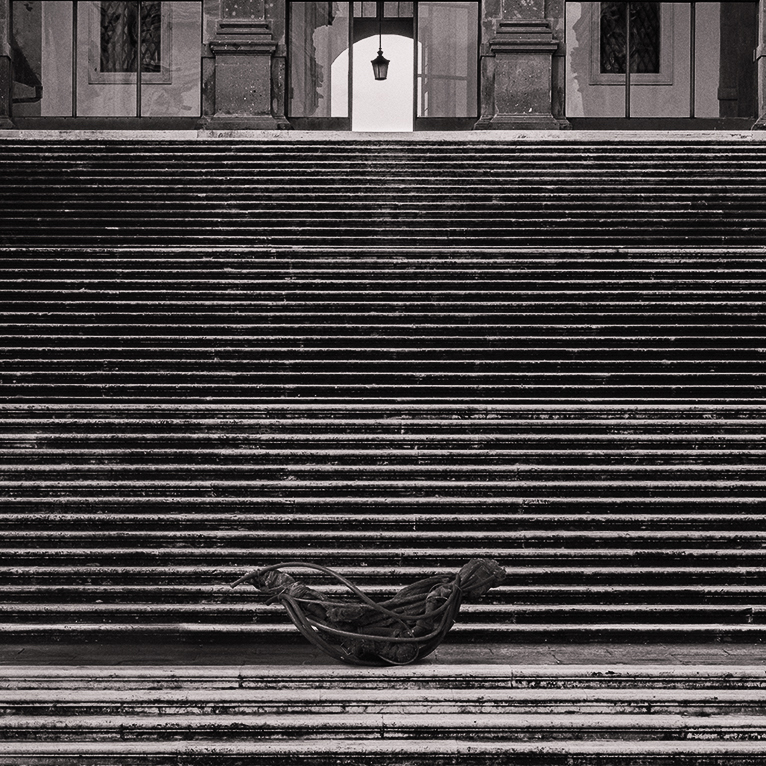
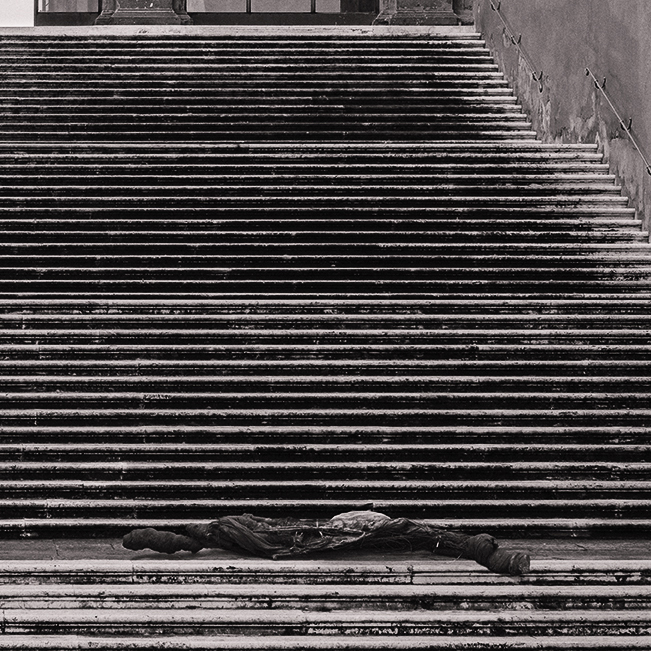
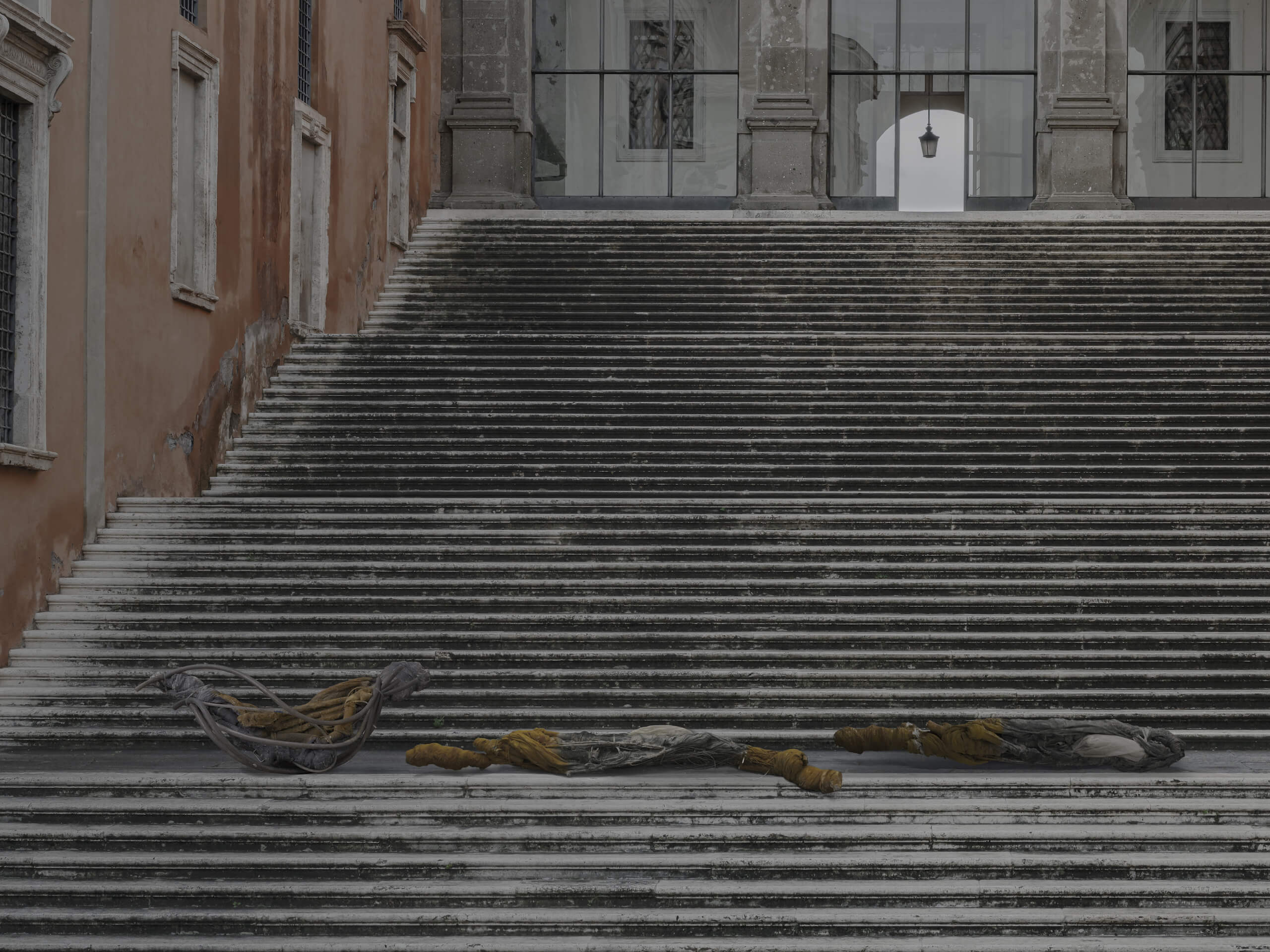
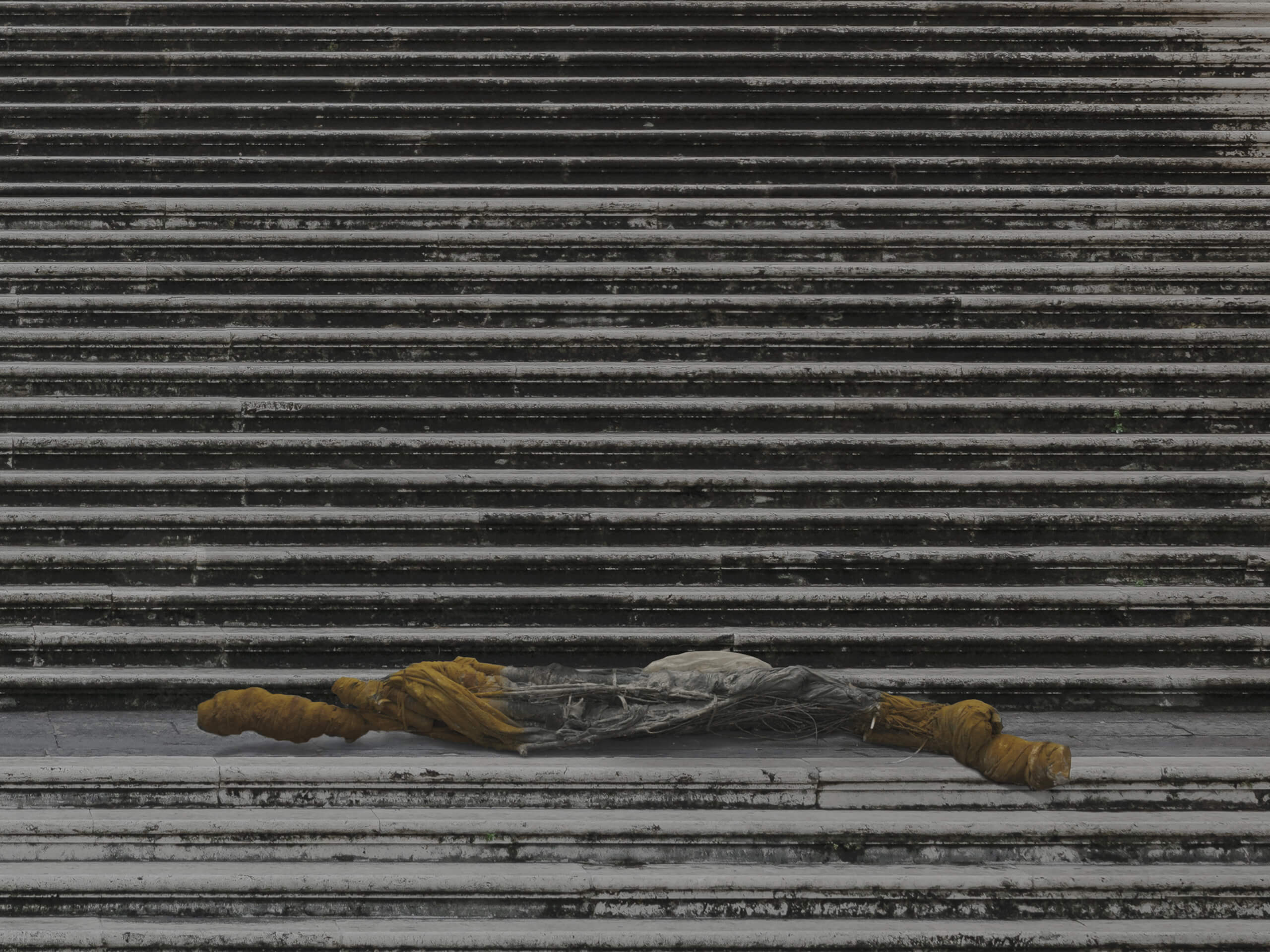
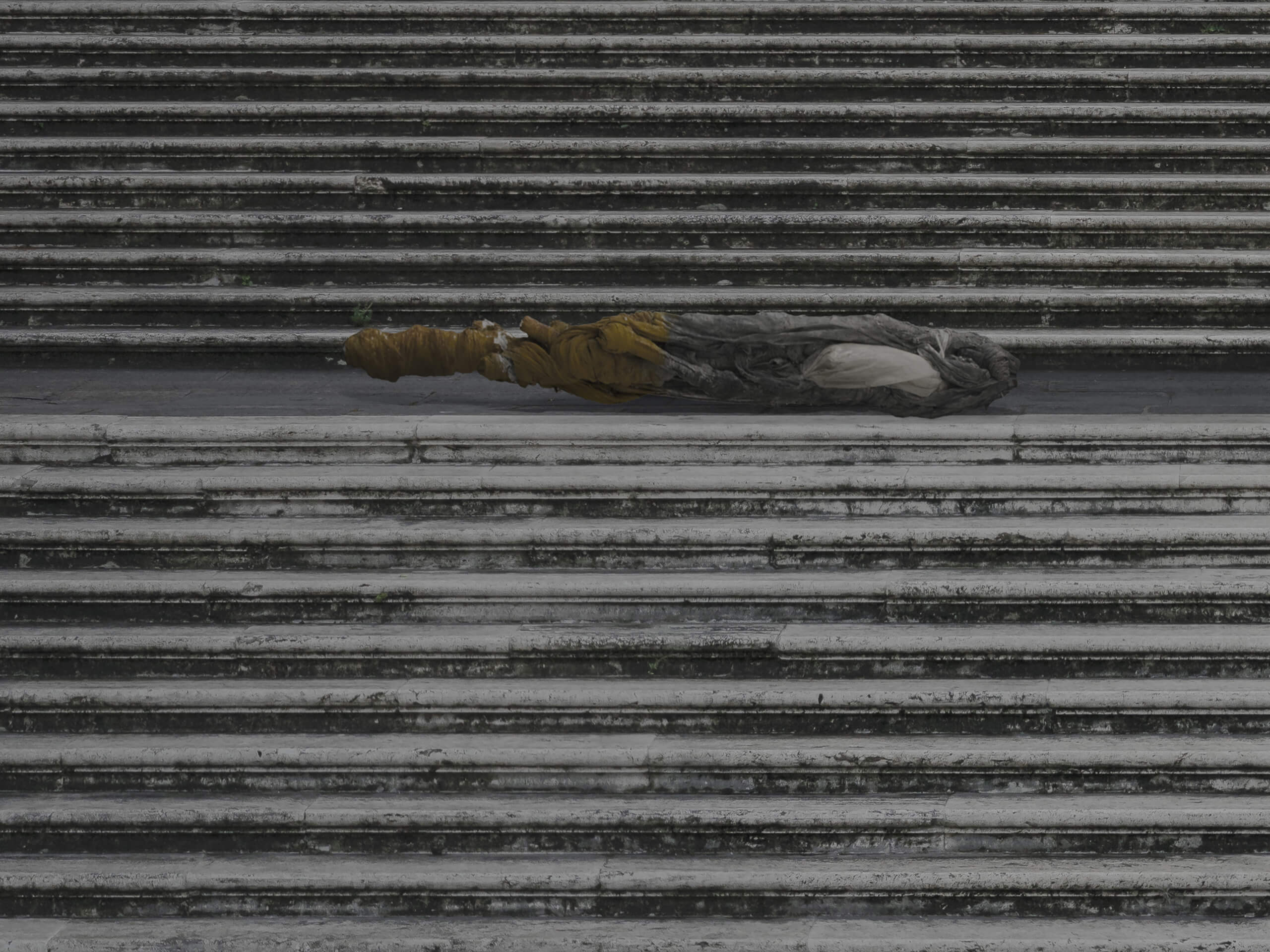
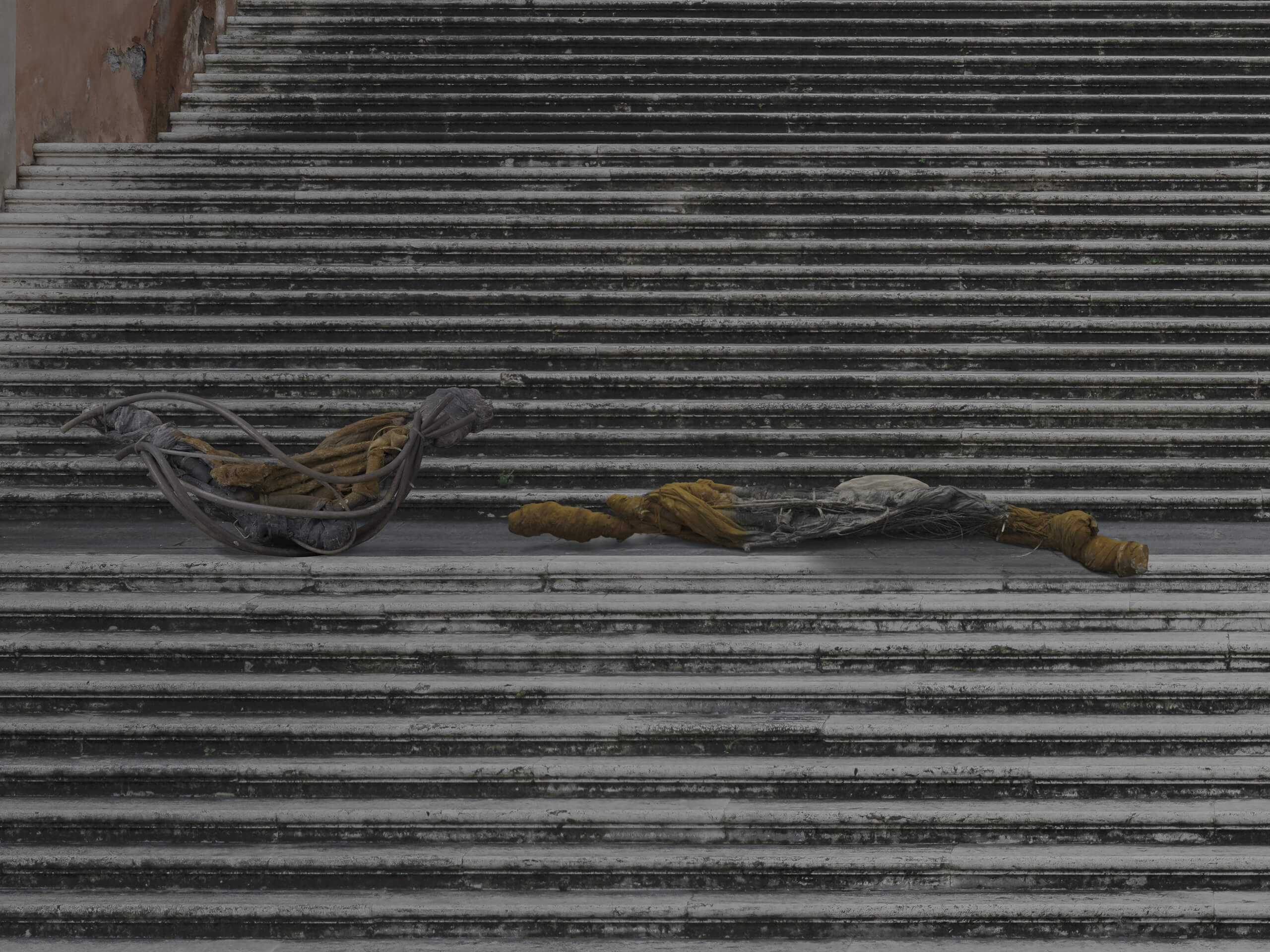
diary – 23/09/20-25/09/20
“The photographs needed both the absolute lack of human presence and specific lighting conditions, in order to comply with the artists’ instructions and the compositions inspired by Tarkovskij’s movie. This is why they were shot at a particular time, at dawn and at dusk, respectively right after and right before the streetlights are turned off and on. To air on the side of caution, two whole days were imposed for shooting (the afternoon of 10/23, the whole of 10/24 and the morning of 10/25), allowing us to study the spaces and work in the best weather conditions. The shooting and installation of the works went smoothly, the days were partially cloudy, with rain showers, storms and sudden clear sky. The rain temporarily turned off the sculpture installed on the equestrian statue of Marcus Aurelius. The best lighting and the absence of passers-by coincided with the moments in which the sky was covered”
diary – 23/09/20-25/09/20
“The photographs needed both the absolute lack of human presence and specific lighting conditions, in order to comply with the artists’ instructions and the compositions inspired by Tarkovskij’s movie. This is why they were shot at a particular time, at dawn and at dusk, respectively right after and right before the streetlights are turned off and on. To air on the side of caution, two whole days were imposed for shooting (the afternoon of 10/23, the whole of 10/24 and the morning of 10/25), allowing us to study the spaces and work in the best weather conditions. The shooting and installation of the works went smoothly, the days were partially cloudy, with rain showers, storms and sudden clear sky. The rain temporarily turned off the sculpture installed on the equestrian statue of Marcus Aurelius. The best lighting and the absence of passers-by coincided with the moments in which the sky was covered”
diary – 23/09/20-25/09/20
“The photographs needed both the absolute lack of human presence and specific lighting conditions, in order to comply with the artists’ instructions and the compositions inspired by Tarkovskij’s movie. This is why they were shot at a particular time, at dawn and at dusk, respectively right after and right before the streetlights are turned off and on. To air on the side of caution, two whole days were imposed for shooting (the afternoon of 10/23, the whole of 10/24 and the morning of 10/25), allowing us to study the spaces and work in the best weather conditions. The shooting and installation of the works went smoothly, the days were partially cloudy, with rain showers, storms and sudden clear sky. The rain temporarily turned off the sculpture installed on the equestrian statue of Marcus Aurelius. The best lighting and the absence of passers-by coincided with the moments in which the sky was covered”
Made with materials that the artist found in her own home, at a time when she was unable to go outside, the works in this series are inspired by magical objects from the movie The Blair Witch Project. The artist assembled the artworks so that they would be both mysterious and easily recognizable: painted with pigments obtained from spices, the pieces appear as ritual objects that have already fulfilled their function. Connected to us only via their material form, the works are present to themselves through an action that occurred in the past, whose nature and function we cannot access. They are the sublimated matter of events that have already happened, and that are now lost in time.
Made with materials that the artist found in her own home, at a time when she was unable to go outside, the works in this series are inspired by magical objects from the movie The Blair Witch Project. The artist assembled the artworks so that they would be both mysterious and easily recognizable: painted with pigments obtained from spices, the pieces appear as ritual objects that have already fulfilled their function. Connected to us only via their material form, the works are present to themselves through an action that occurred in the past, whose nature and function we cannot access. They are the sublimated matter of events that have already happened, and that are now lost in time.
Made with materials that the artist found in her own home, at a time when she was unable to go outside, the works in this series are inspired by magical objects from the movie The Blair Witch Project. The artist assembled the artworks so that they would be both mysterious and easily recognizable: painted with pigments obtained from spices, the pieces appear as ritual objects that have already fulfilled their function. Connected to us only via their material form, the works are present to themselves through an action that occurred in the past, whose nature and function we cannot access. They are the sublimated matter of events that have already happened, and that are now lost in time.
They exist as mandalas, created in order to be destroyed, active only in the process through which they were made. Alive in distant, lost memories, they come to us as heaps of different, inseparable powders, eternally joined, simultaneously exhausted and accomplished.
They exist as mandalas, created in order to be destroyed, active only in the process through which they were made. Alive in distant, lost memories, they come to us as heaps of different, inseparable powders, eternally joined, simultaneously exhausted and accomplished.
They exist as mandalas, created in order to be destroyed, active only in the process through which they were made. Alive in distant, lost memories, they come to us as heaps of different, inseparable powders, eternally joined, simultaneously exhausted and accomplished.
On the back of a horse in the middle of a square that welcomes misplaced hopes or aloof on the patient steps of a staircase, empty clusters of faded tensions.
On the back of a horse in the middle of a square that welcomes misplaced hopes or aloof on the patient steps of a staircase, empty clusters of faded tensions.
On the back of a horse in the middle of a square that welcomes misplaced hopes or aloof on the patient steps of a staircase, empty clusters of faded tensions.
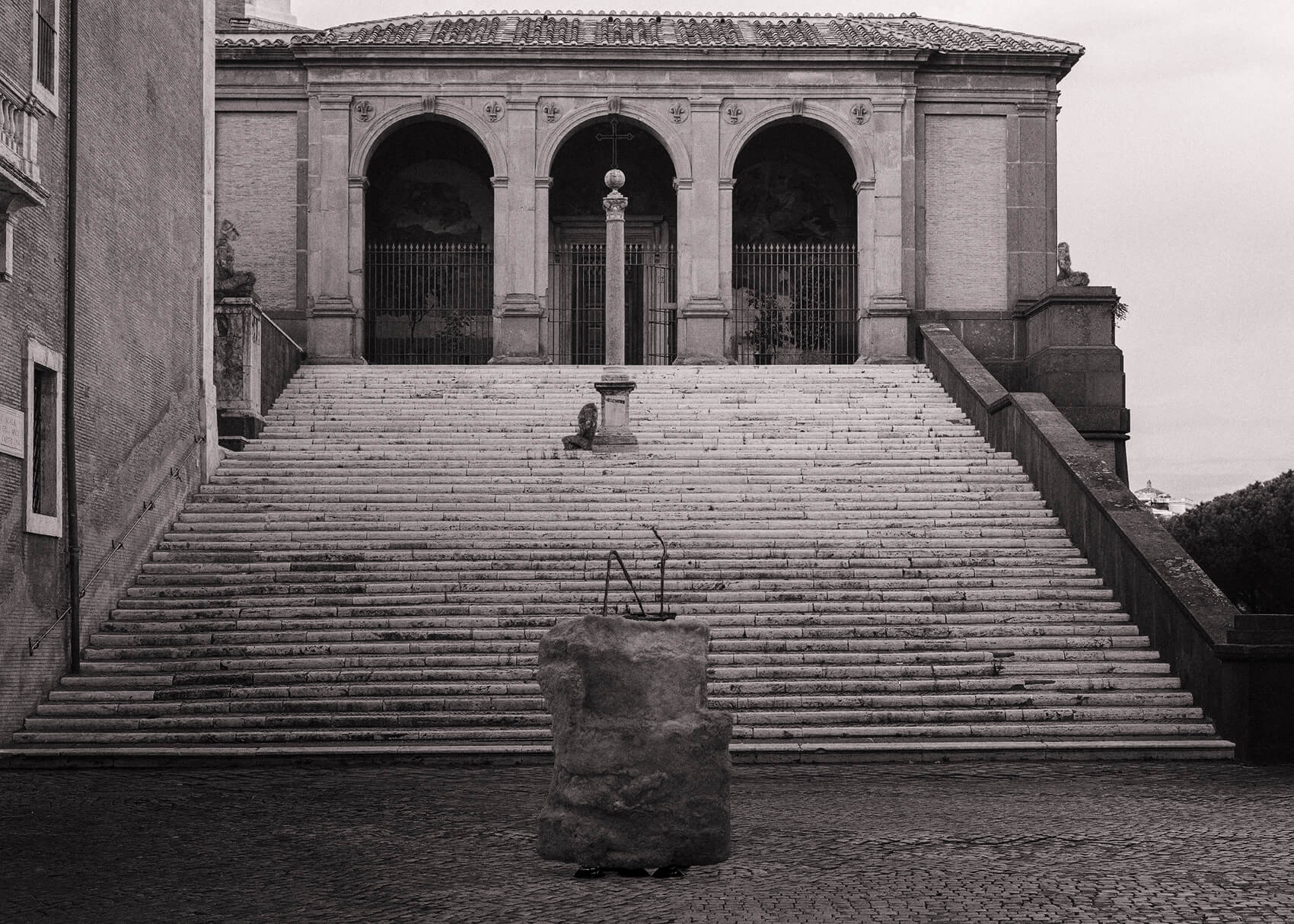
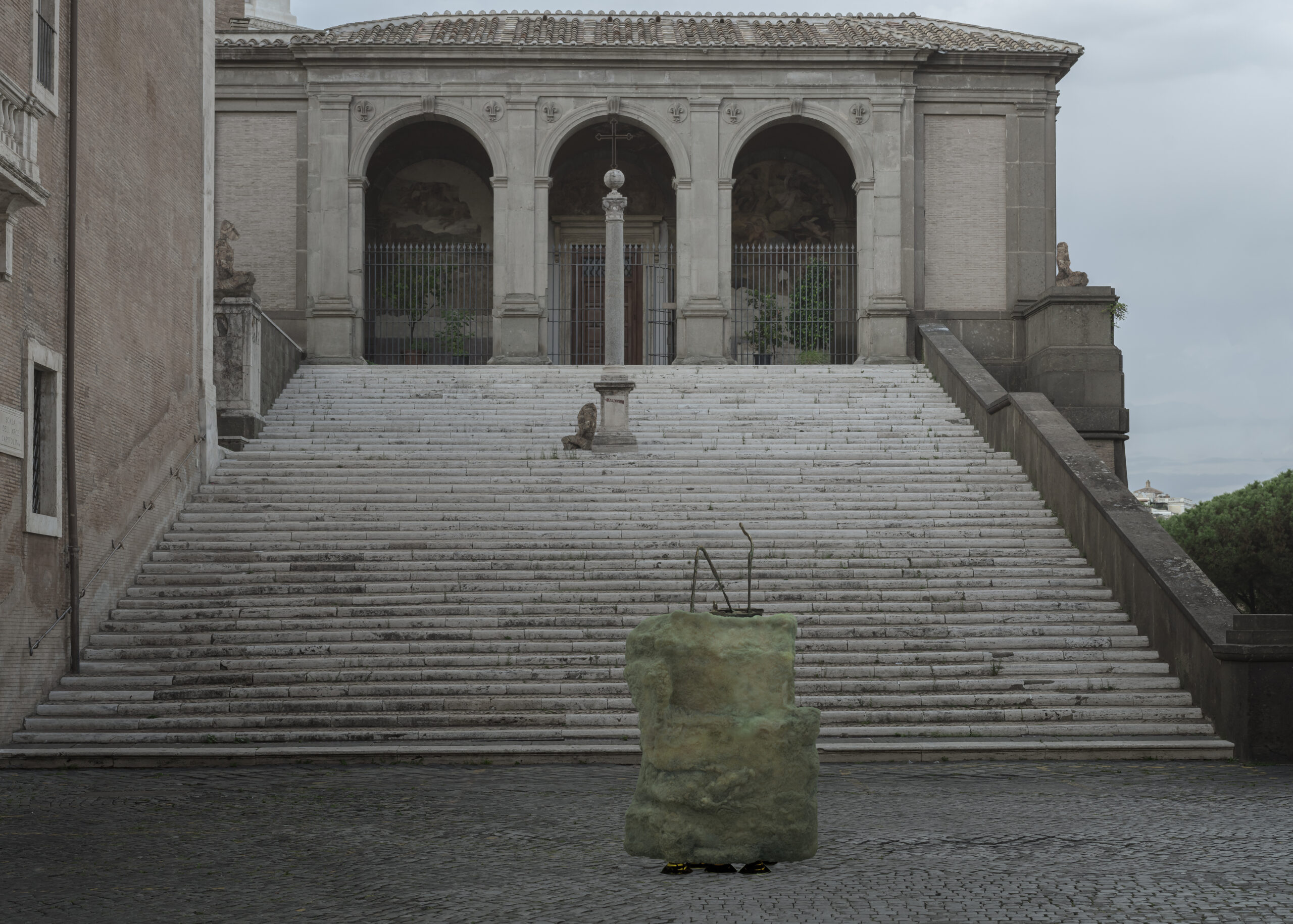
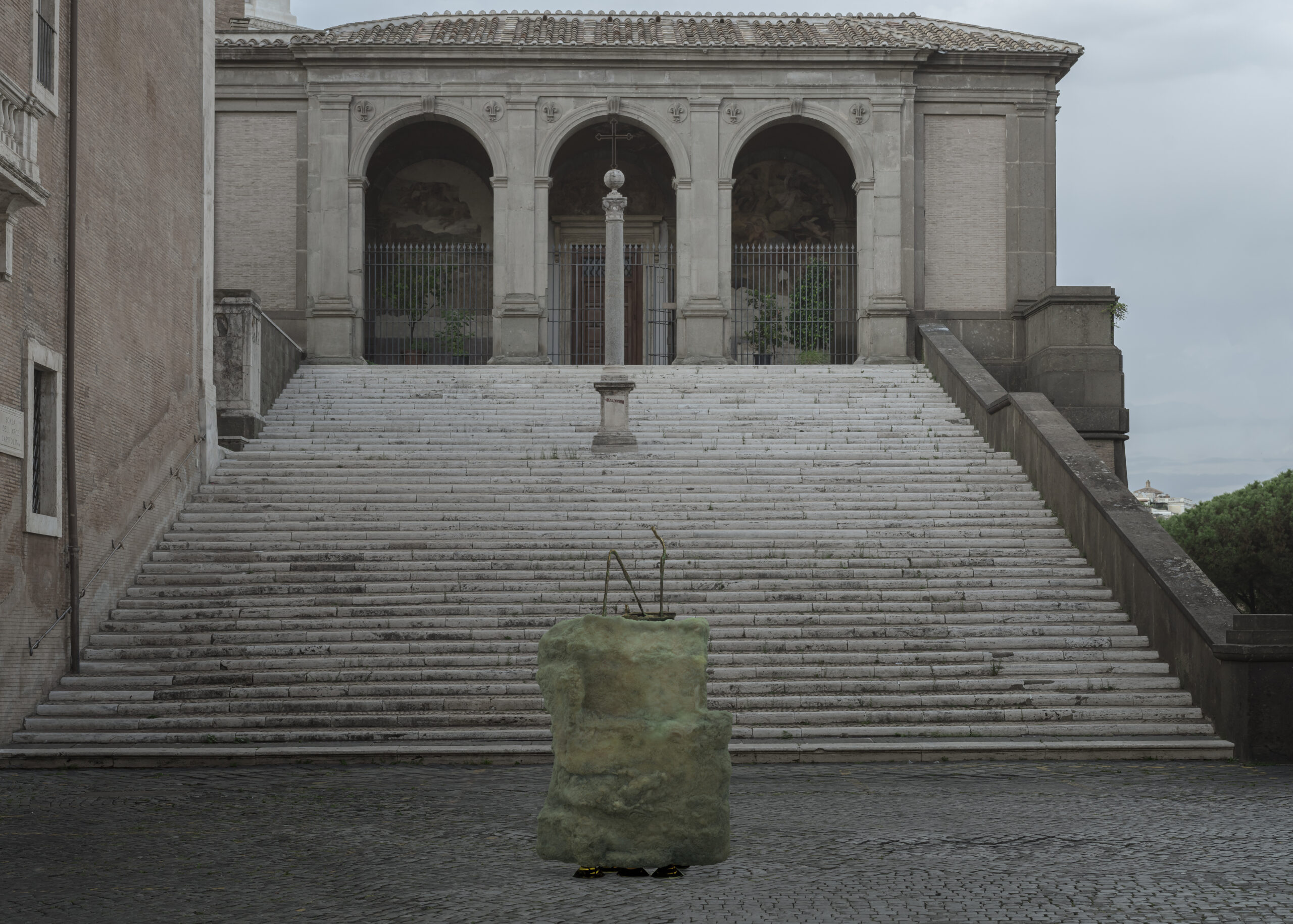
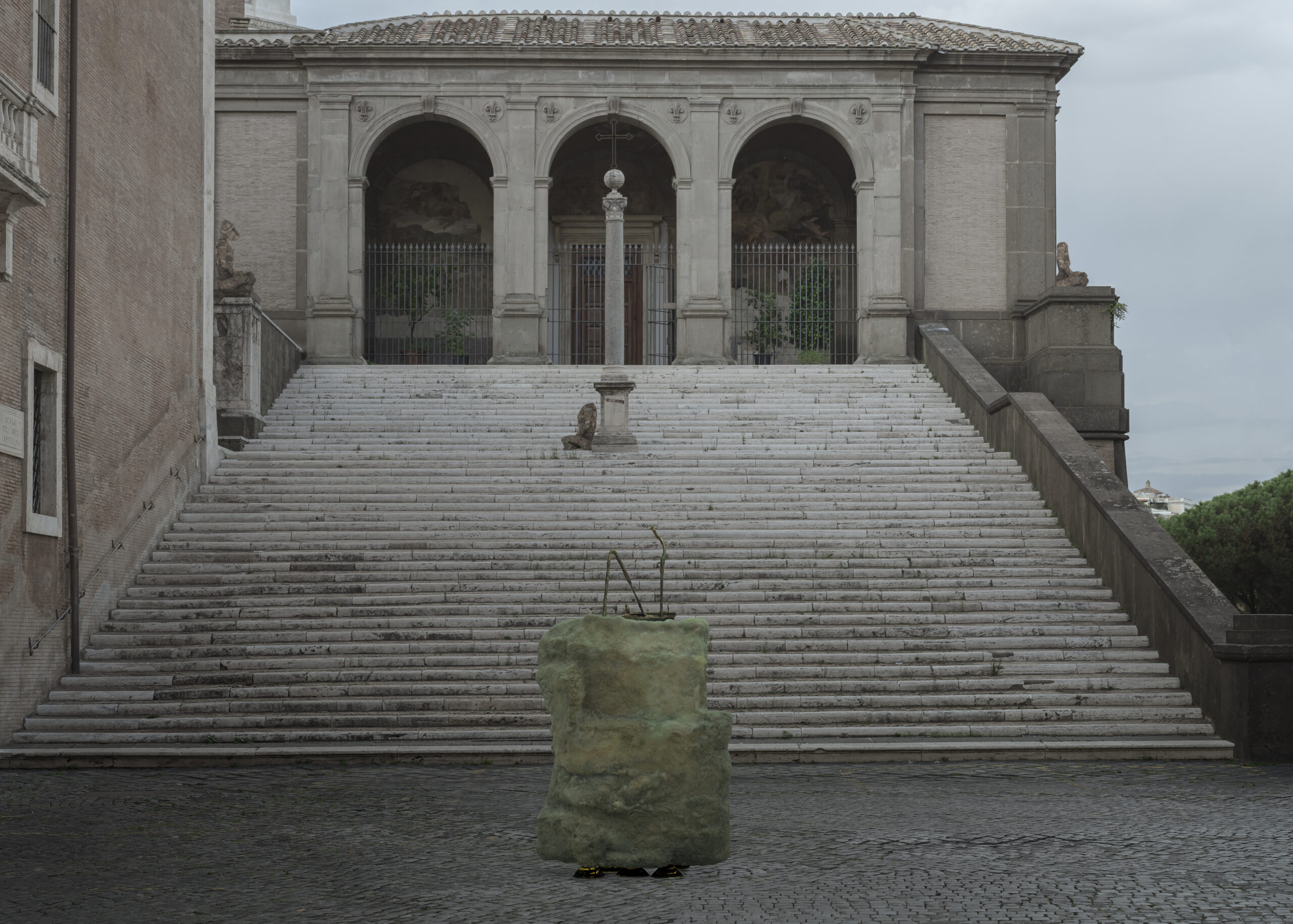
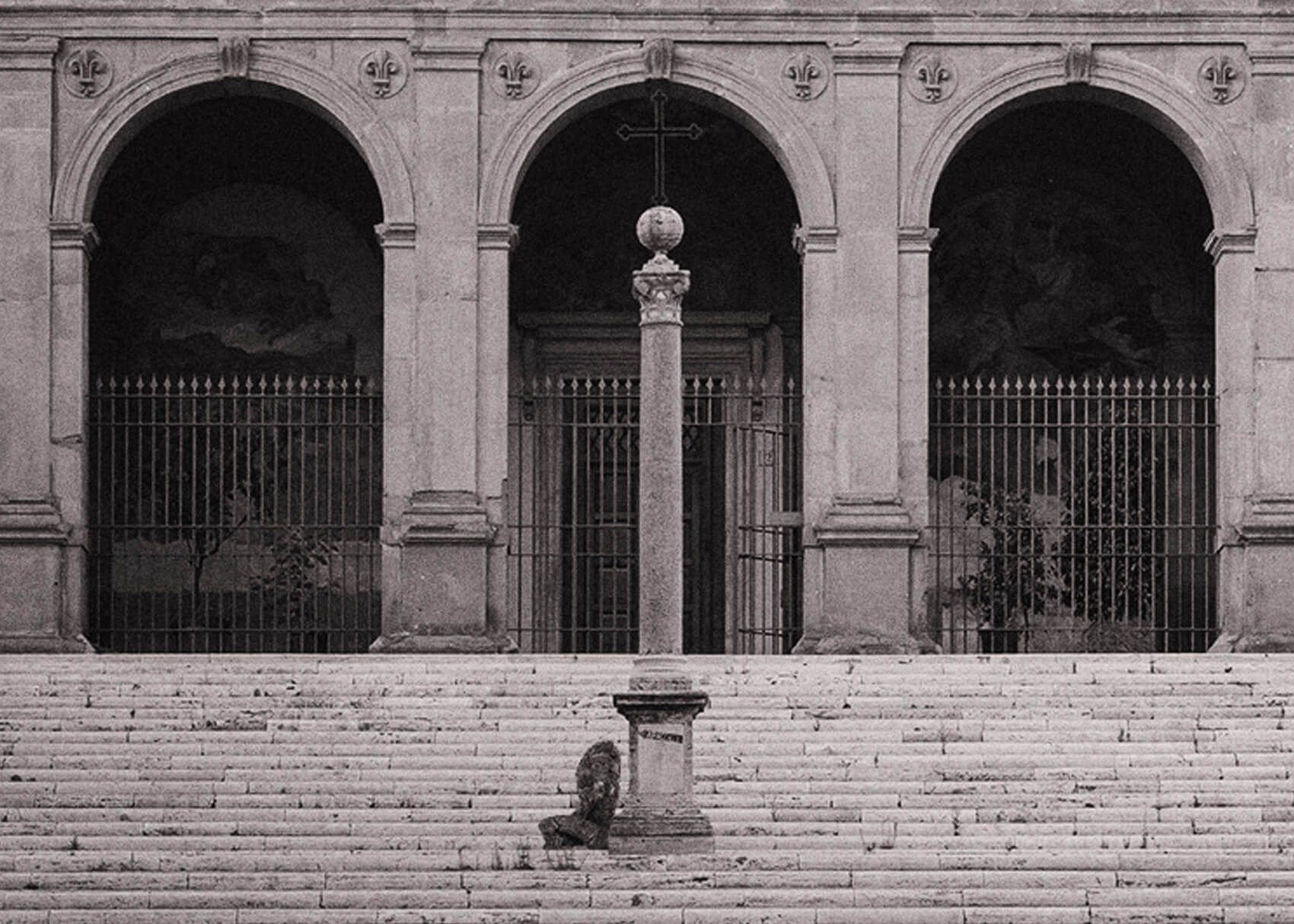
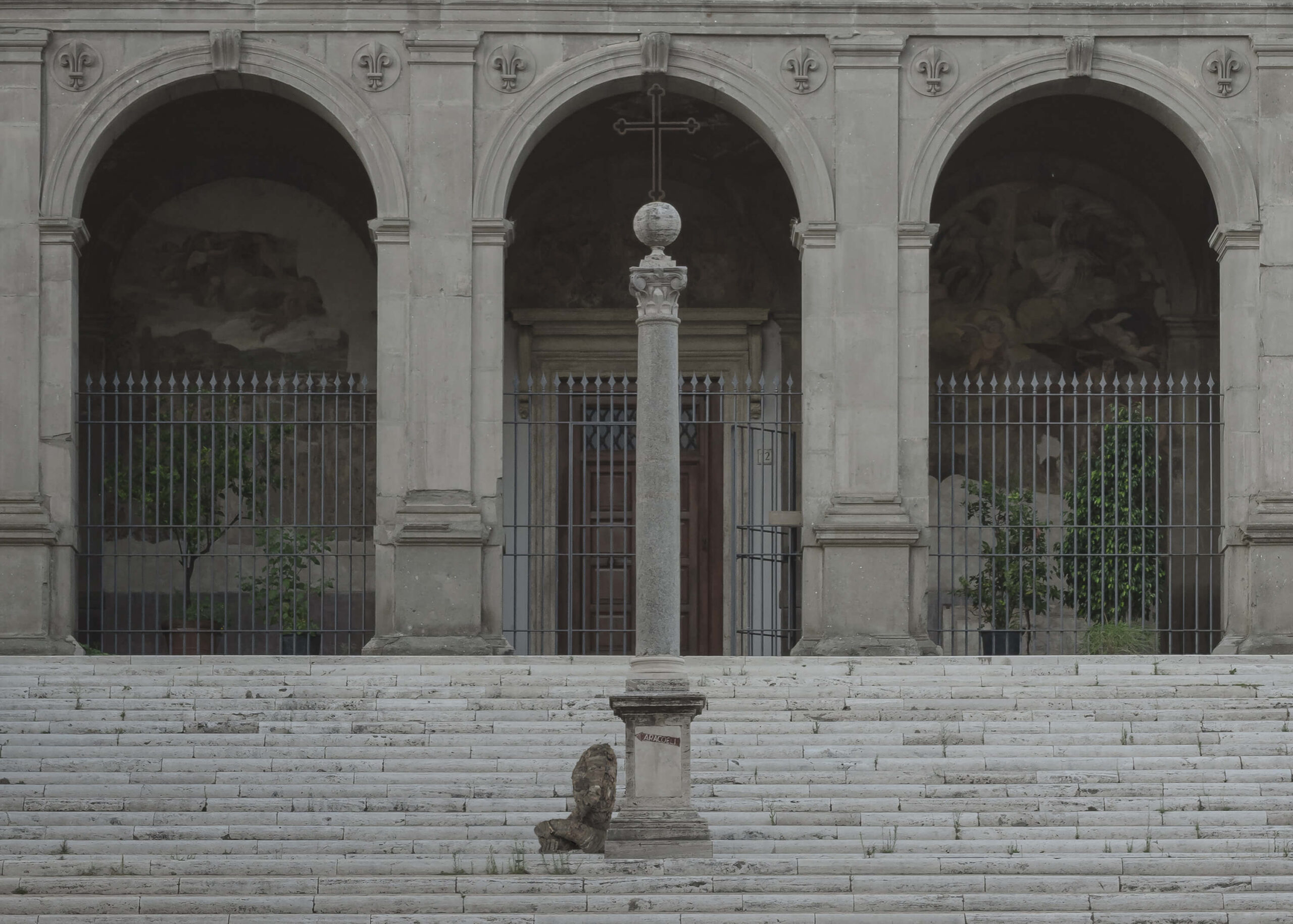
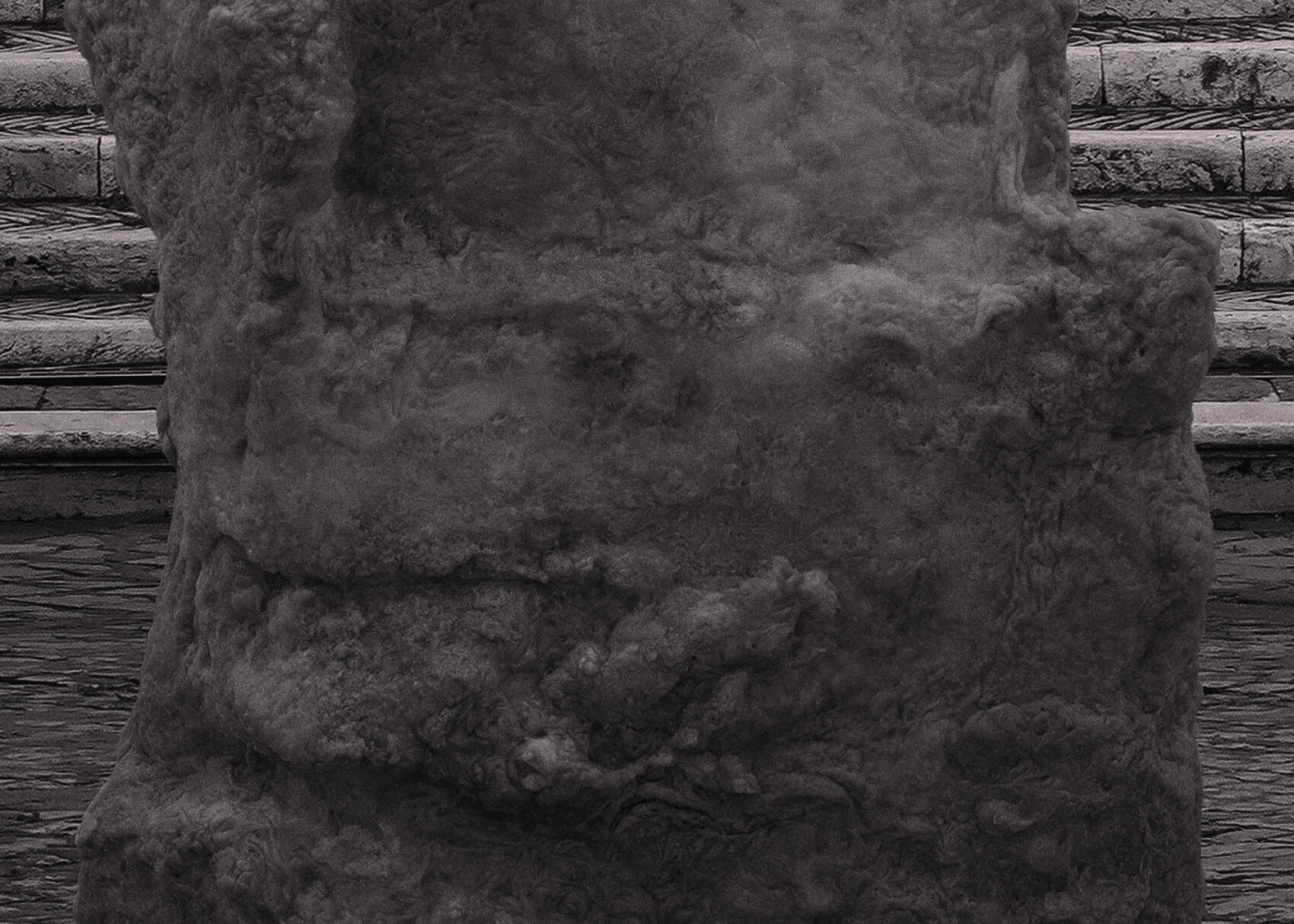
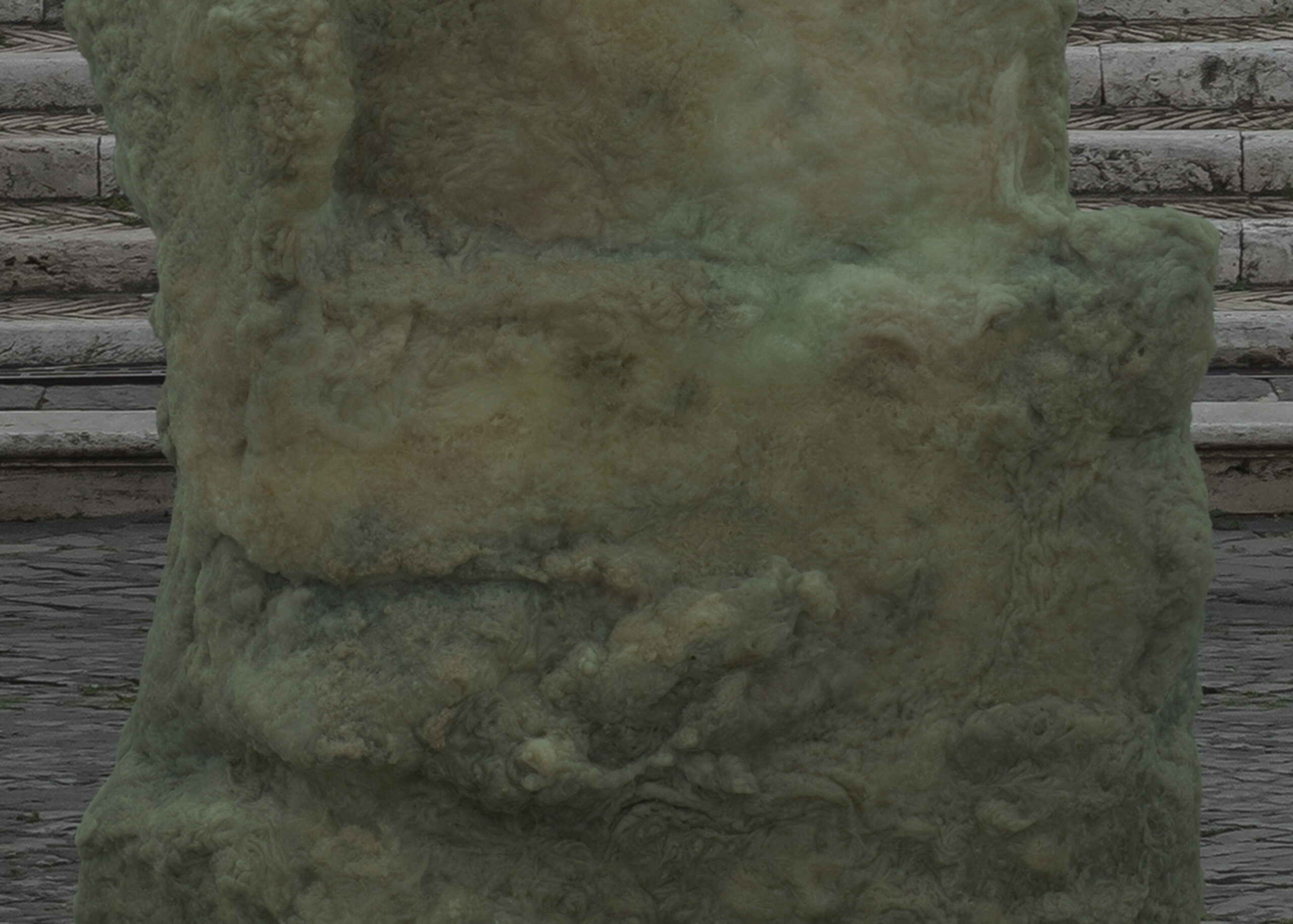
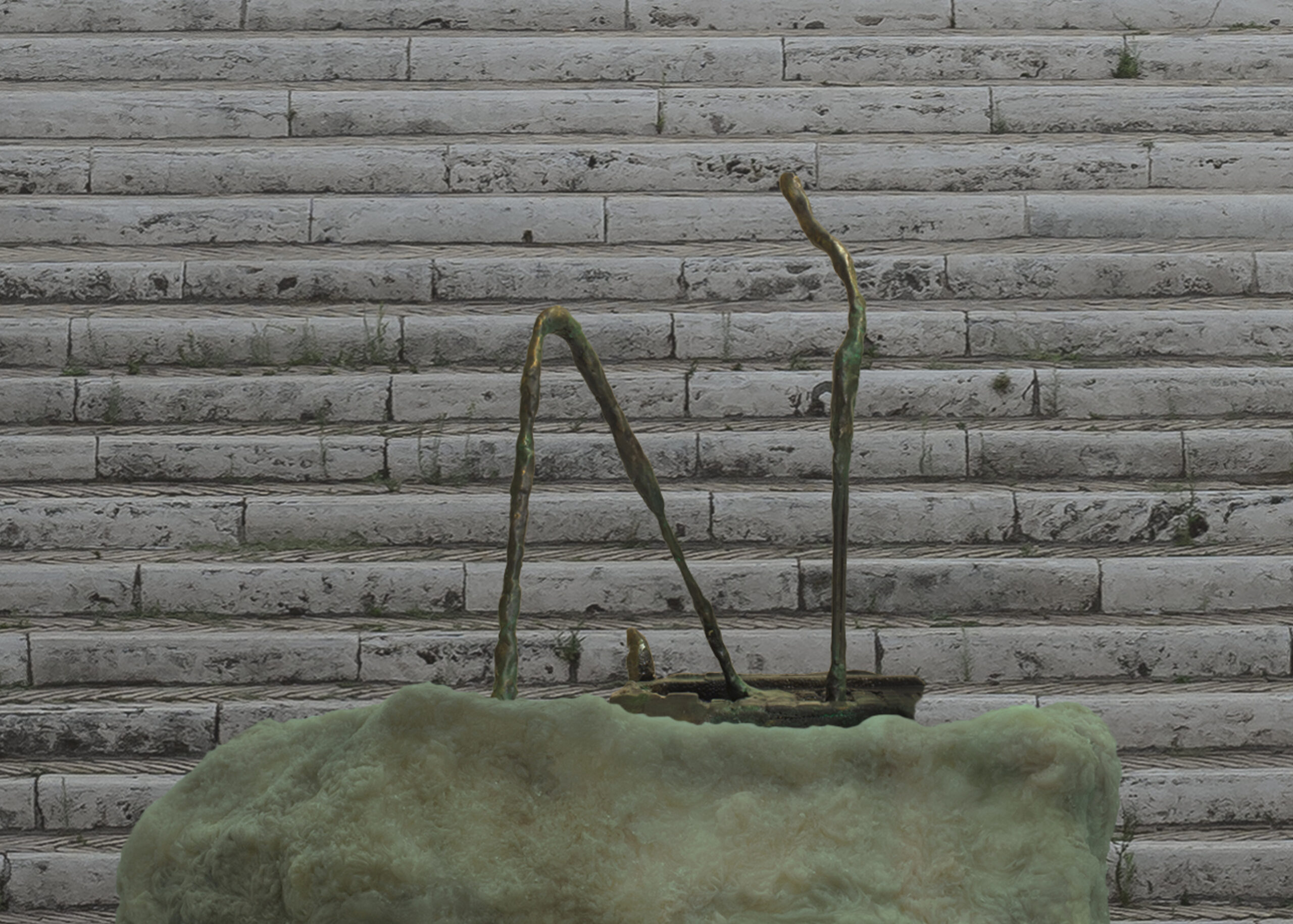
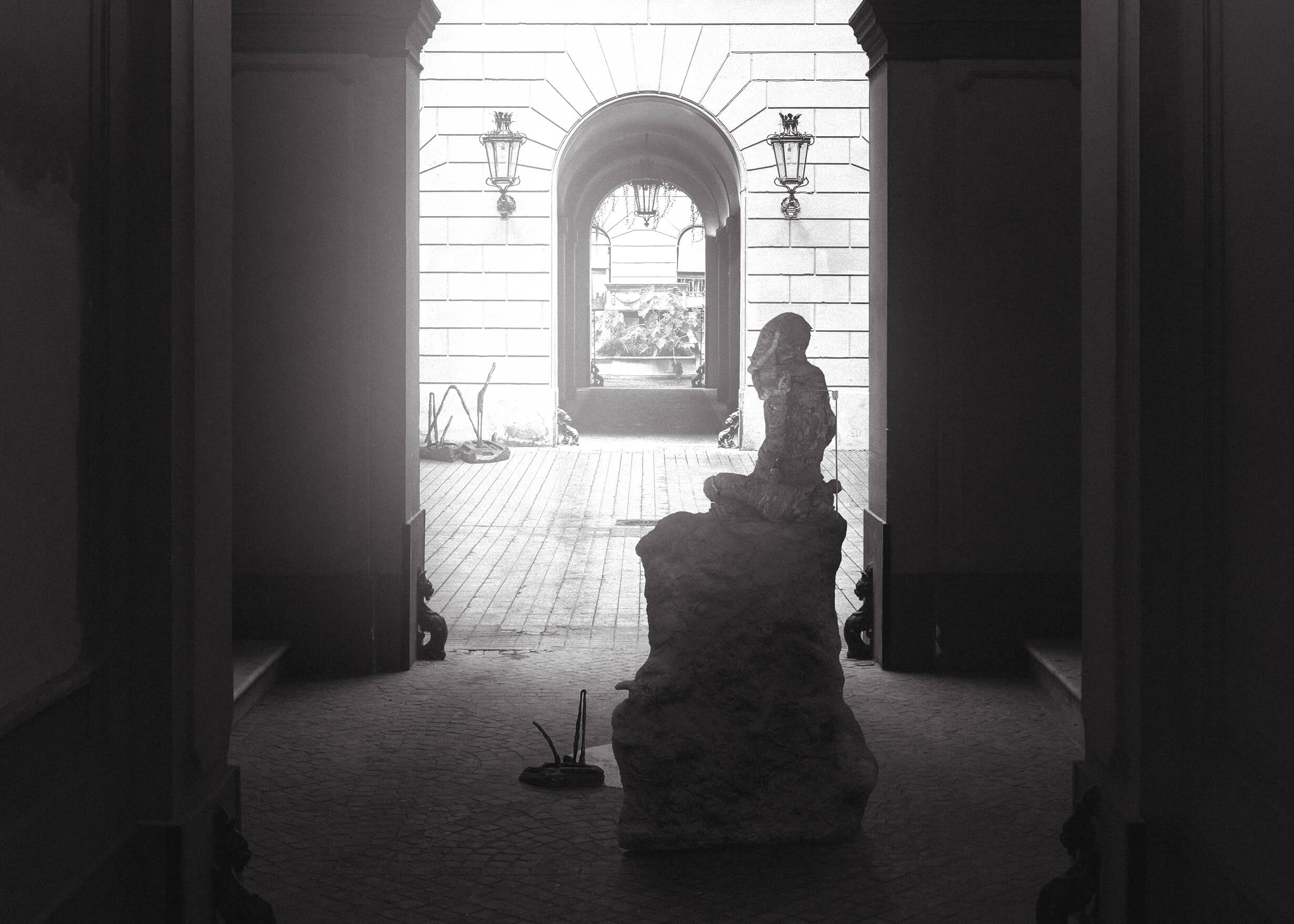
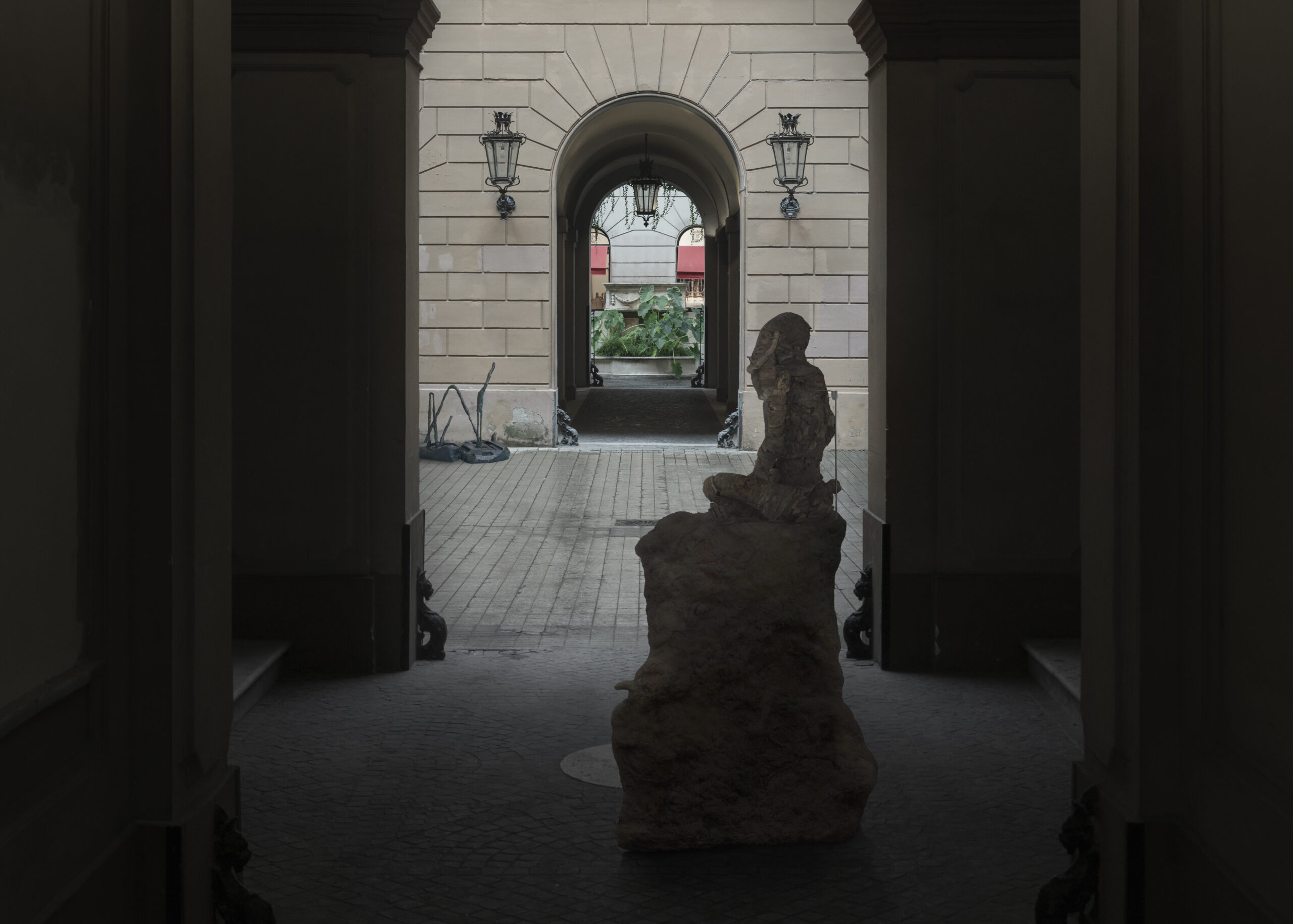
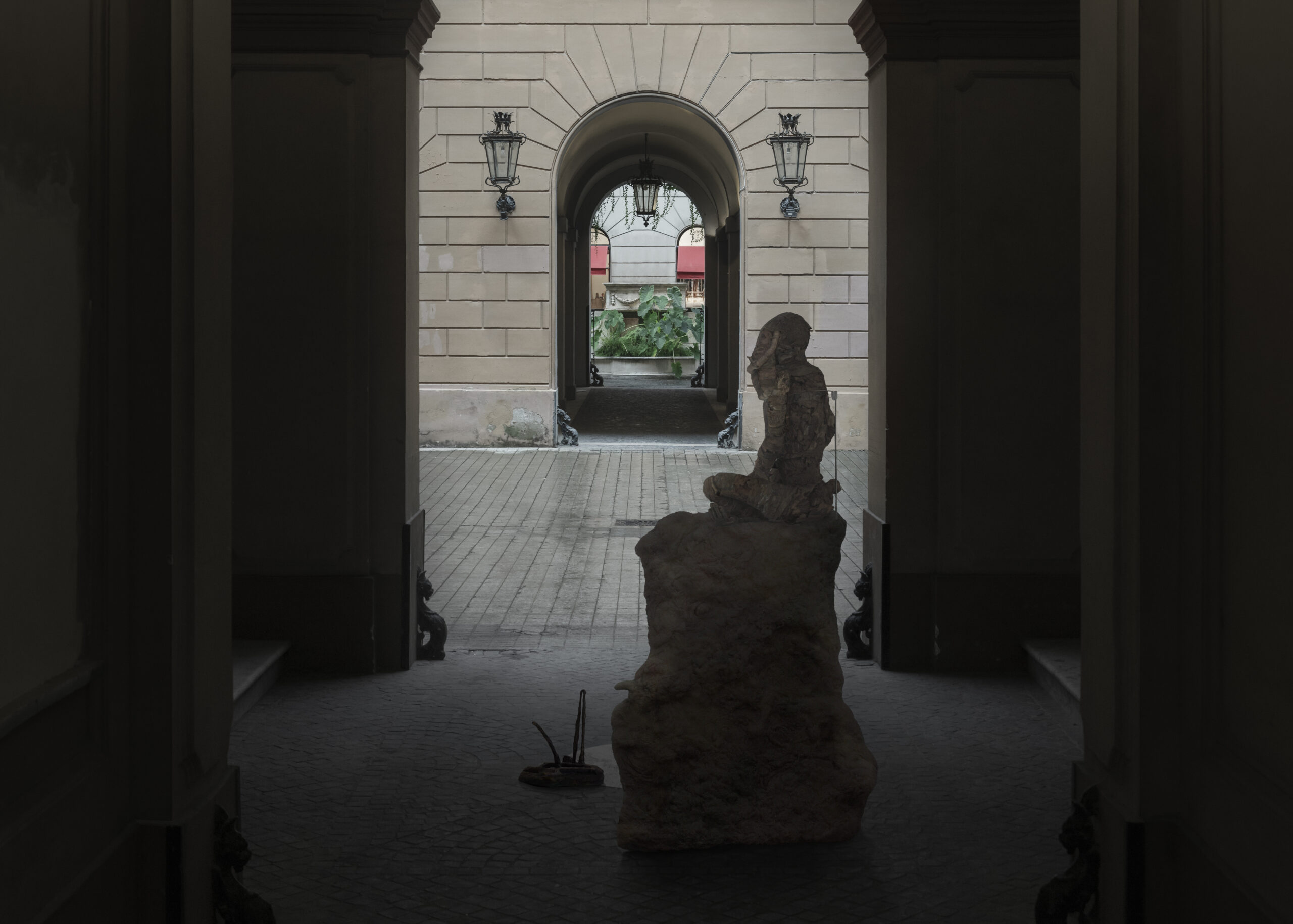
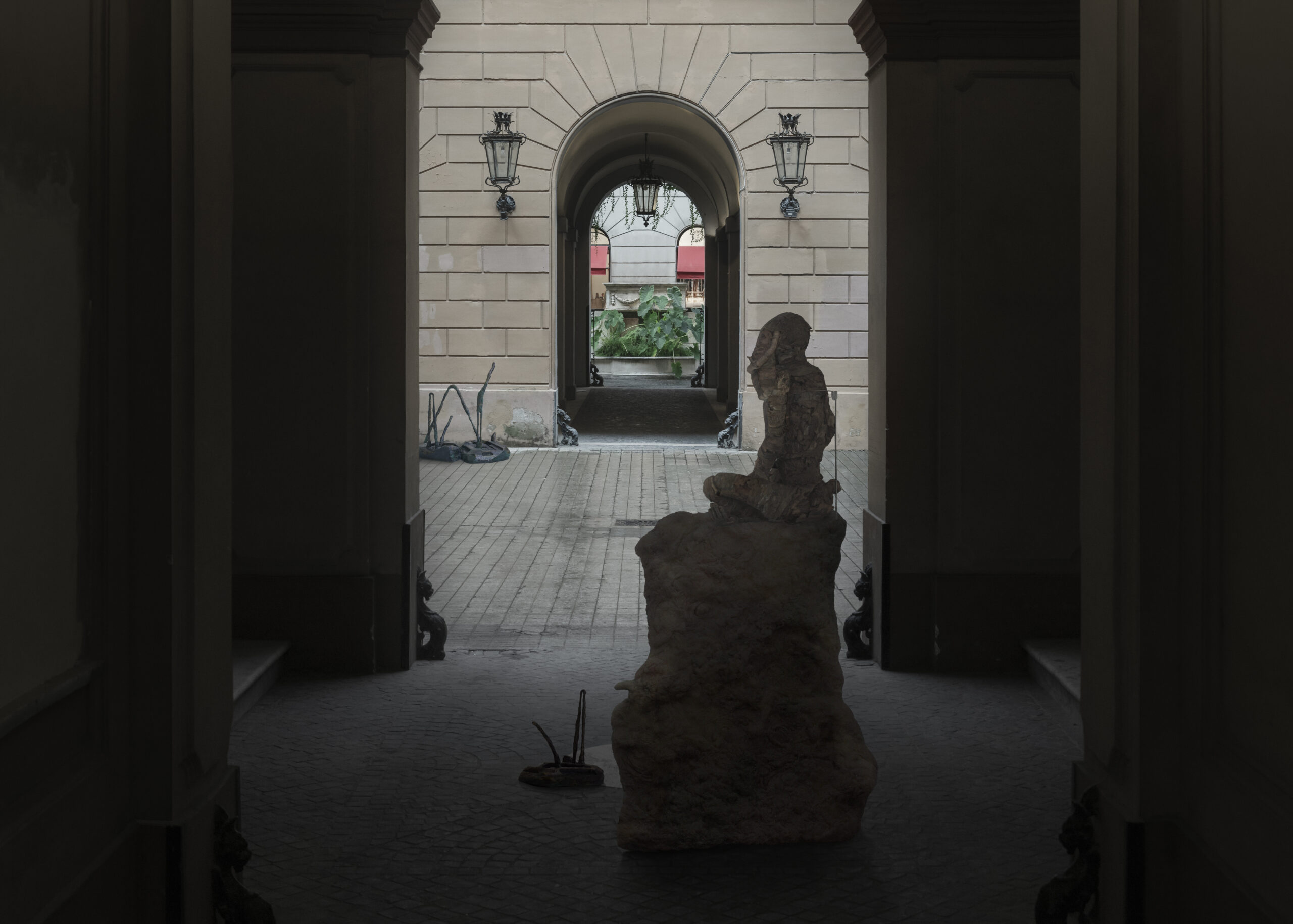
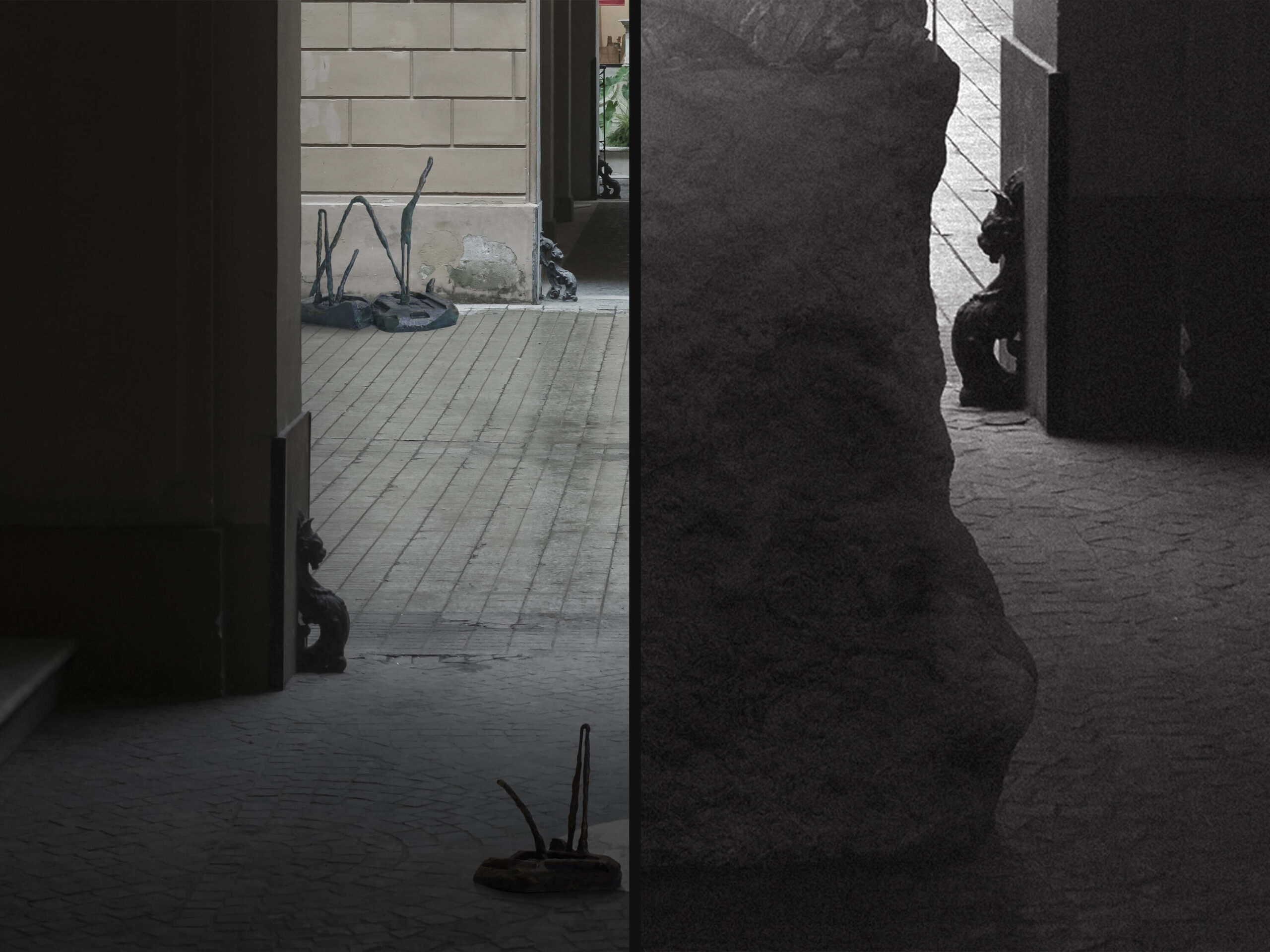
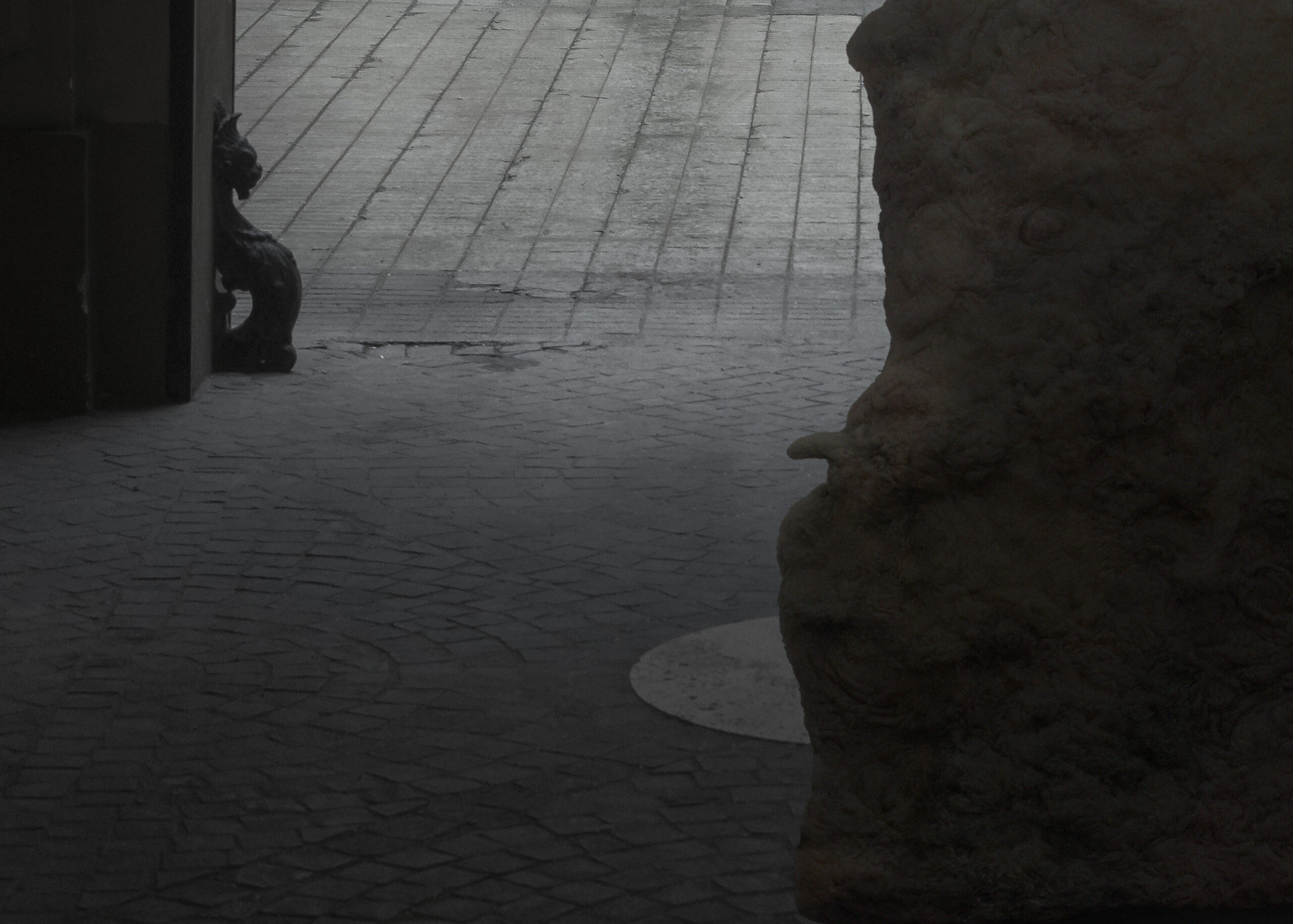
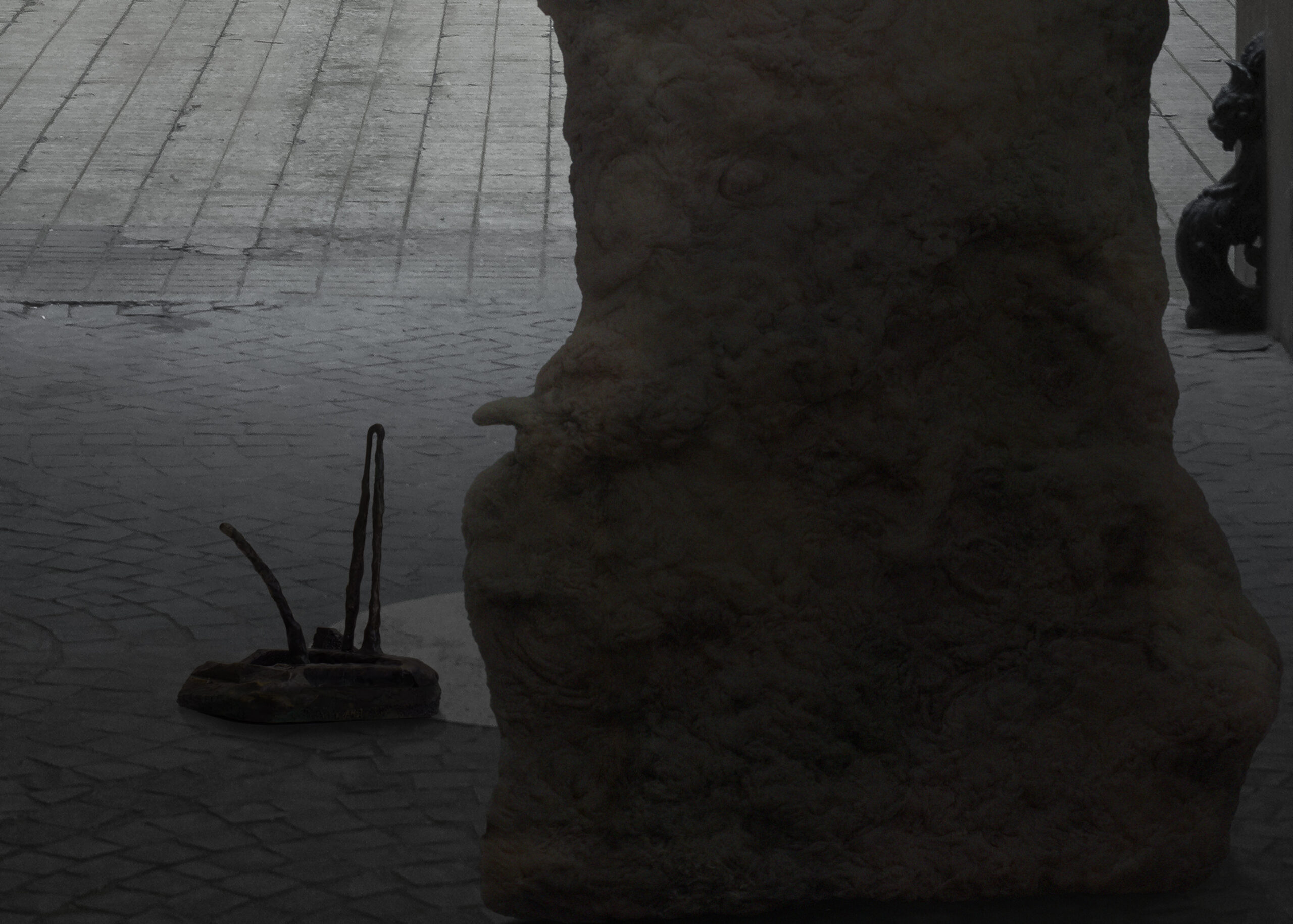
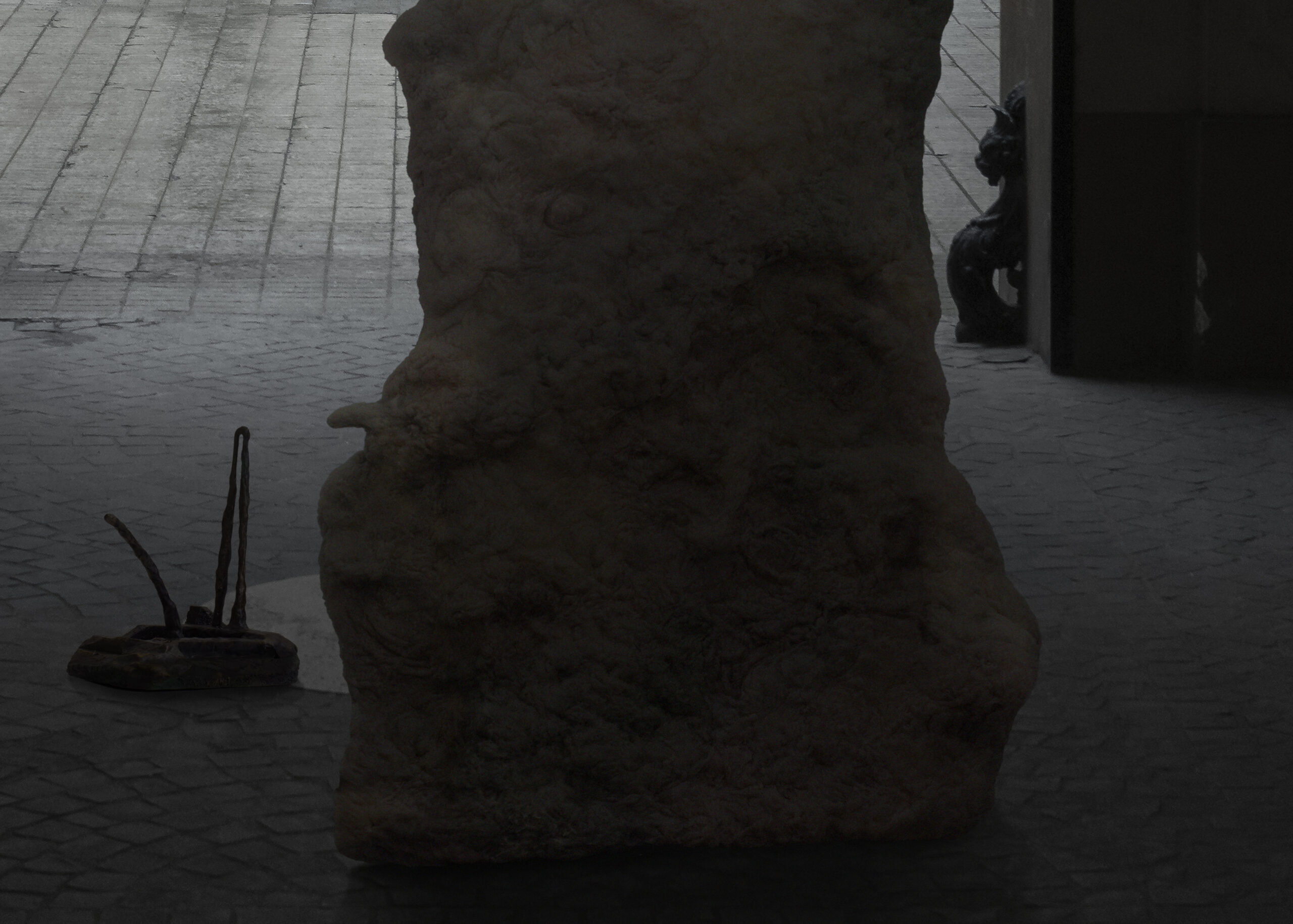
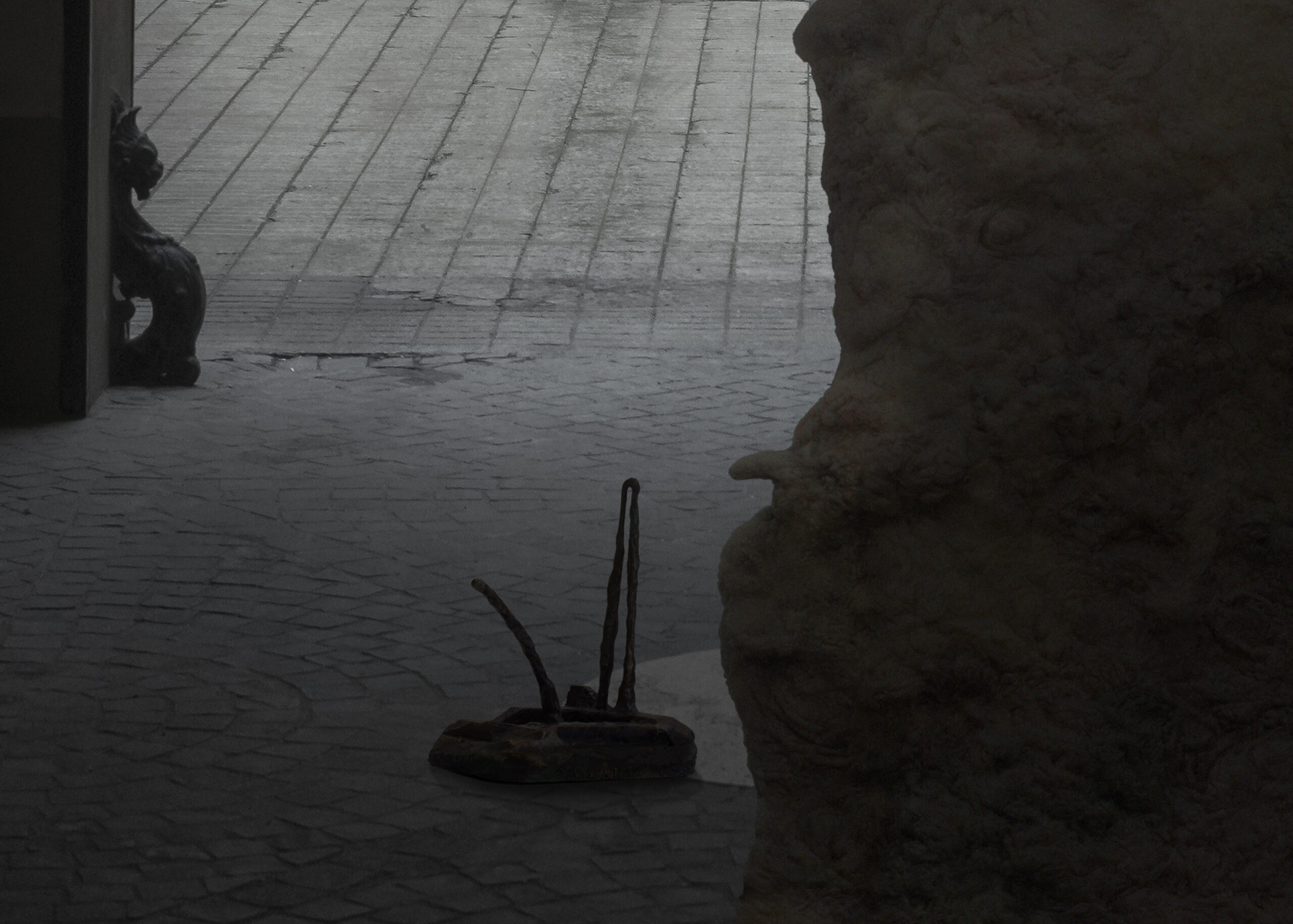
diary – 23/09/20-25/09/20: “The photographs needed both the absolute lack of human presence and specific lighting conditions, in order to comply with the artists’ instructions and the compositions inspired by Tarkovskij’s movie. This is why they were shot at a particular time, at dawn and at dusk, respectively right after and right before the streetlights are turned off and on. To air on the side of caution, two whole days were imposed for shooting, allowing us to study the spaces and work in the best weather conditions. The shooting and installation of the works went smoothly, the days were partially cloudy, with rain showers, storms and sudden clear sky. The best lighting and the absence of passers-by coincided with the moments in which the sky was covered, therefore we were able to easily transport and install the works both in the atrium of the hotel and on the Gemonian stairs. It was there that, under emperor Tiberius, the convicted were choked to death and their bodies were left exposed, tormented by the people and prayed on by the animals, before being thrown in the Tiber river”
diary – 23/09/20-25/09/20: “The photographs needed both the absolute lack of human presence and specific lighting conditions, in order to comply with the artists’ instructions and the compositions inspired by Tarkovskij’s movie. This is why they were shot at a particular time, at dawn and at dusk, respectively right after and right before the streetlights are turned off and on. To air on the side of caution, two whole days were imposed for shooting, allowing us to study the spaces and work in the best weather conditions. The shooting and installation of the works went smoothly, the days were partially cloudy, with rain showers, storms and sudden clear sky. The best lighting and the absence of passers-by coincided with the moments in which the sky was covered, therefore we were able to easily transport and install the works both in the atrium of the hotel and on the Gemonian stairs. It was there that, under emperor Tiberius, the convicted were choked to death and their bodies were left exposed, tormented by the people and prayed on by the animals, before being thrown in the Tiber river”
diary – 23/09/20-25/09/20: “The photographs needed both the absolute lack of human presence and specific lighting conditions, in order to comply with the artists’ instructions and the compositions inspired by Tarkovskij’s movie. This is why they were shot at a particular time, at dawn and at dusk, respectively right after and right before the streetlights are turned off and on. To air on the side of caution, two whole days were imposed for shooting, allowing us to study the spaces and work in the best weather conditions. The shooting and installation of the works went smoothly, the days were partially cloudy, with rain showers, storms and sudden clear sky. The best lighting and the absence of passers-by coincided with the moments in which the sky was covered, therefore we were able to easily transport and install the works both in the atrium of the hotel and on the Gemonian stairs. It was there that, under emperor Tiberius, the convicted were choked to death and their bodies were left exposed, tormented by the people and prayed on by the animals, before being thrown in the Tiber river”
At a time when opportunities for aggregation have disappeared, the artist creates a group of abstract sculptures inspired by the postures taken by young people as they first approach the art world. With a bit of nostalgia, the artist relives the observation of the poses and attitudes kids adopt the first time they go see exhibitions in an art gallery, and matches them with the shape of a baboon mummy from Ancient Egypt. Among the archetypes of horror, the mummy is the only one with no “noble” or cultured origin: it doesn’t come from literature or from social observation. The figure of the mummy doesn’t arise from the fear of the unknown but from the widespread ignorance towards foreign cultures, and in a contemporary reading it can only become its symbol.
At a time when opportunities for aggregation have disappeared, the artist creates a group of abstract sculptures inspired by the postures taken by young people as they first approach the art world. With a bit of nostalgia, the artist relives the observation of the poses and attitudes kids adopt the first time they go see exhibitions in an art gallery, and matches them with the shape of a baboon mummy from Ancient Egypt. Among the archetypes of horror, the mummy is the only one with no “noble” or cultured origin: it doesn’t come from literature or from social observation. The figure of the mummy doesn’t arise from the fear of the unknown but from the widespread ignorance towards foreign cultures, and in a contemporary reading it can only become its symbol.
At a time when opportunities for aggregation have disappeared, the artist creates a group of abstract sculptures inspired by the postures taken by young people as they first approach the art world. With a bit of nostalgia, the artist relives the observation of the poses and attitudes kids adopt the first time they go see exhibitions in an art gallery, and matches them with the shape of a baboon mummy from Ancient Egypt. Among the archetypes of horror, the mummy is the only one with no “noble” or cultured origin: it doesn’t come from literature or from social observation. The figure of the mummy doesn’t arise from the fear of the unknown but from the widespread ignorance towards foreign cultures, and in a contemporary reading it can only become its symbol.
A corridor that becomes a crossroads, an afterthought on the threshold of the hotel. Is it a real change of direction or the pale and absorbed evaluation of a previous flashback? Does reality anticipate, generate and inspire our mental projections onto itself, or is it our own projections that shape reality?
A corridor that becomes a crossroads, an afterthought on the threshold of the hotel. Is it a real change of direction or the pale and absorbed evaluation of a previous flashback? Does reality anticipate, generate and inspire our mental projections onto itself, or is it our own projections that shape reality?
A corridor that becomes a crossroads, an afterthought on the threshold of the hotel. Is it a real change of direction or the pale and absorbed evaluation of a previous flashback? Does reality anticipate, generate and inspire our mental projections onto itself, or is it our own projections that shape reality?
While pretending to be at ease, appearance is heavily projected onto reality, it tampers with the buds of a possible future memory. Is lying knowingly to oneself a tragic, perhaps desperate, statement of defeat? Or is it a necessity of life?
While pretending to be at ease, appearance is heavily projected onto reality, it tampers with the buds of a possible future memory. Is lying knowingly to oneself a tragic, perhaps desperate, statement of defeat? Or is it a necessity of life?
While pretending to be at ease, appearance is heavily projected onto reality, it tampers with the buds of a possible future memory. Is lying knowingly to oneself a tragic, perhaps desperate, statement of defeat? Or is it a necessity of life?